Quick filters:
Medieval farm woodcut Stock Photos and Images
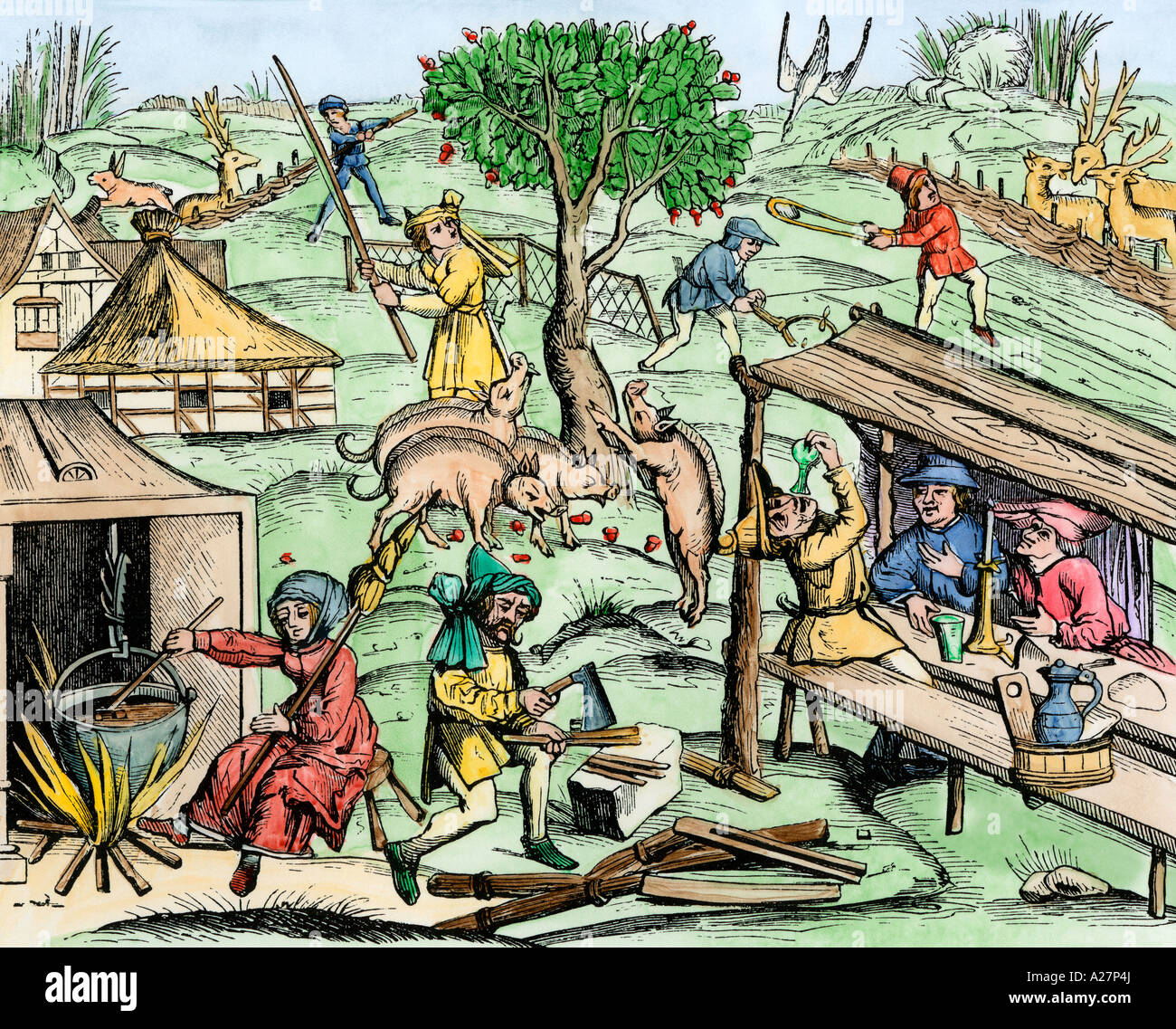 Medieval country life. Hand-colored woodcut Stock Photohttps://www.alamy.com/image-license-details/?v=1https://www.alamy.com/stock-photo-medieval-country-life-hand-colored-woodcut-10434641.html
Medieval country life. Hand-colored woodcut Stock Photohttps://www.alamy.com/image-license-details/?v=1https://www.alamy.com/stock-photo-medieval-country-life-hand-colored-woodcut-10434641.htmlRMA27P4J–Medieval country life. Hand-colored woodcut
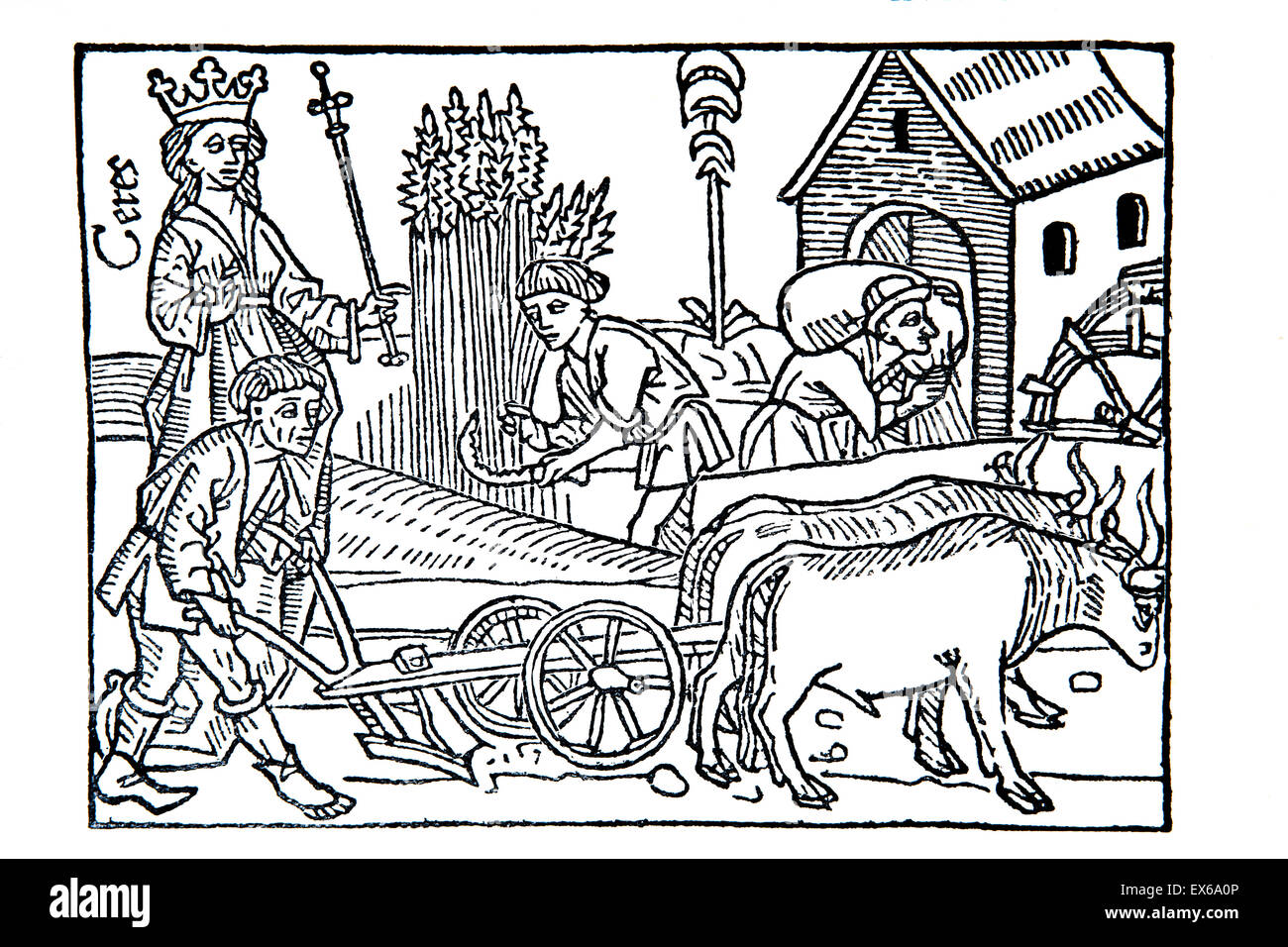 medieval harvest scene, woodcut from Boccaccio's de claris mulieribus (on famous women), published in Ulm 1473 Stock Photohttps://www.alamy.com/image-license-details/?v=1https://www.alamy.com/stock-photo-medieval-harvest-scene-woodcut-from-boccaccios-de-claris-mulieribus-84962102.html
medieval harvest scene, woodcut from Boccaccio's de claris mulieribus (on famous women), published in Ulm 1473 Stock Photohttps://www.alamy.com/image-license-details/?v=1https://www.alamy.com/stock-photo-medieval-harvest-scene-woodcut-from-boccaccios-de-claris-mulieribus-84962102.htmlRMEX6A0P–medieval harvest scene, woodcut from Boccaccio's de claris mulieribus (on famous women), published in Ulm 1473
 Woodcut print of an agricultural scene in Medieval England. Dated 15th Century Stock Photohttps://www.alamy.com/image-license-details/?v=1https://www.alamy.com/stock-photo-woodcut-print-of-an-agricultural-scene-in-medieval-england-dated-15th-122927039.html
Woodcut print of an agricultural scene in Medieval England. Dated 15th Century Stock Photohttps://www.alamy.com/image-license-details/?v=1https://www.alamy.com/stock-photo-woodcut-print-of-an-agricultural-scene-in-medieval-england-dated-15th-122927039.htmlRMH3YPKB–Woodcut print of an agricultural scene in Medieval England. Dated 15th Century
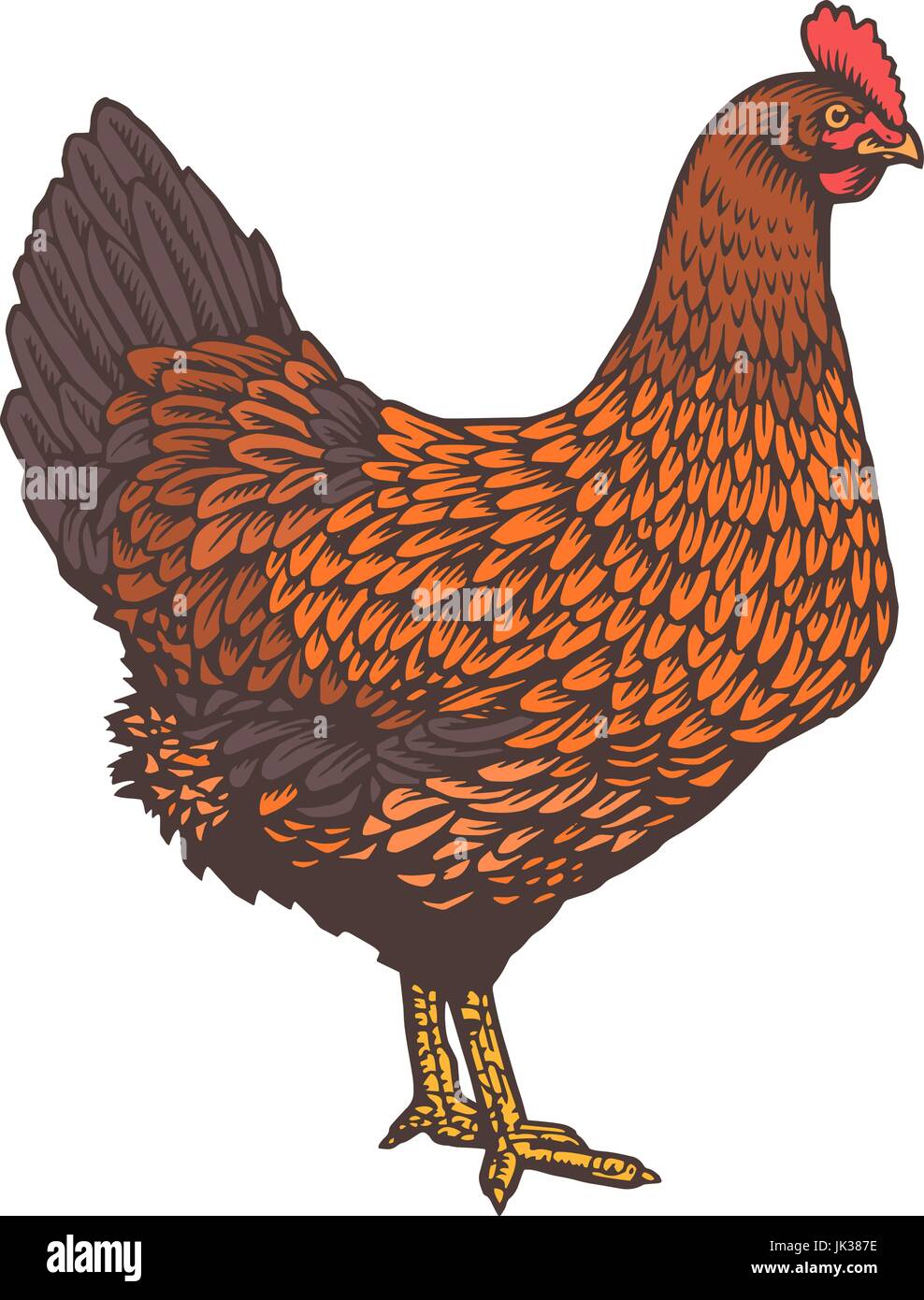 Hen or chicken drawn with rough lines in vintage woodcut or etching style. Colored poultry bird isolated on white background. Vector illustration for farm market logo, website banner, t-shirt print. Stock Vectorhttps://www.alamy.com/image-license-details/?v=1https://www.alamy.com/stock-photo-hen-or-chicken-drawn-with-rough-lines-in-vintage-woodcut-or-etching-149433746.html
Hen or chicken drawn with rough lines in vintage woodcut or etching style. Colored poultry bird isolated on white background. Vector illustration for farm market logo, website banner, t-shirt print. Stock Vectorhttps://www.alamy.com/image-license-details/?v=1https://www.alamy.com/stock-photo-hen-or-chicken-drawn-with-rough-lines-in-vintage-woodcut-or-etching-149433746.htmlRFJK387E–Hen or chicken drawn with rough lines in vintage woodcut or etching style. Colored poultry bird isolated on white background. Vector illustration for farm market logo, website banner, t-shirt print.
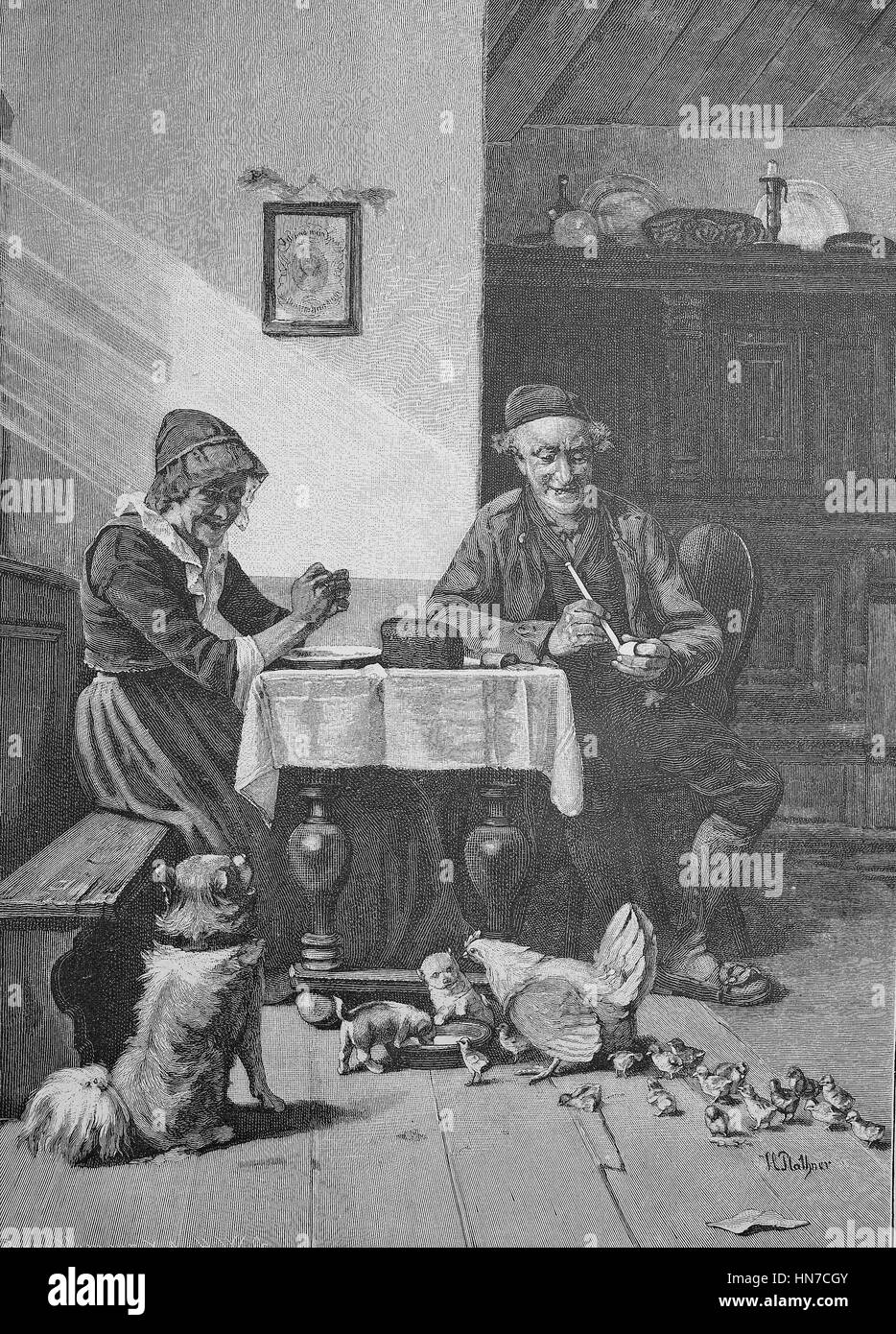 Feeding, in the living-room of a farm, with dog, dog-puppies, chickens and chicks at feeding, Fuetterung, in der Wohnstube eines Bauernhofs, mit Hund, Hundewelpen, Huehnern und Kueken bei der Fuetterung, woodcut from 1885, digital improved Stock Photohttps://www.alamy.com/image-license-details/?v=1https://www.alamy.com/stock-photo-feeding-in-the-living-room-of-a-farm-with-dog-dog-puppies-chickens-133543899.html
Feeding, in the living-room of a farm, with dog, dog-puppies, chickens and chicks at feeding, Fuetterung, in der Wohnstube eines Bauernhofs, mit Hund, Hundewelpen, Huehnern und Kueken bei der Fuetterung, woodcut from 1885, digital improved Stock Photohttps://www.alamy.com/image-license-details/?v=1https://www.alamy.com/stock-photo-feeding-in-the-living-room-of-a-farm-with-dog-dog-puppies-chickens-133543899.htmlRFHN7CGY–Feeding, in the living-room of a farm, with dog, dog-puppies, chickens and chicks at feeding, Fuetterung, in der Wohnstube eines Bauernhofs, mit Hund, Hundewelpen, Huehnern und Kueken bei der Fuetterung, woodcut from 1885, digital improved
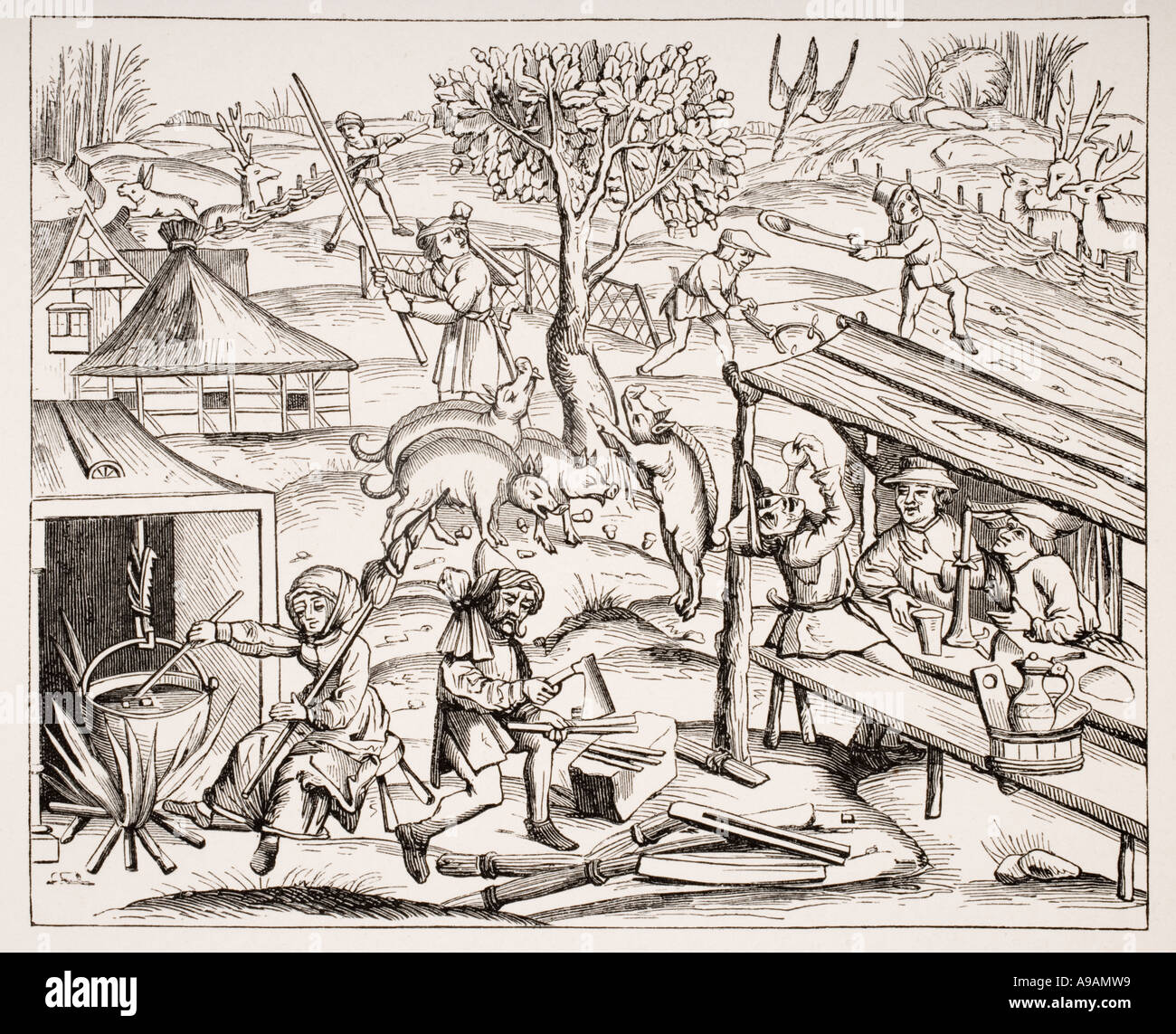 Country Life. 19th century reproduction of a woodcut in a folio edition of Virgil, published in Lyons 1517. Stock Photohttps://www.alamy.com/image-license-details/?v=1https://www.alamy.com/country-life-19th-century-reproduction-of-a-woodcut-in-a-folio-edition-image7032216.html
Country Life. 19th century reproduction of a woodcut in a folio edition of Virgil, published in Lyons 1517. Stock Photohttps://www.alamy.com/image-license-details/?v=1https://www.alamy.com/country-life-19th-century-reproduction-of-a-woodcut-in-a-folio-edition-image7032216.htmlRMA9AMW9–Country Life. 19th century reproduction of a woodcut in a folio edition of Virgil, published in Lyons 1517.
RF2ED5E93–Medieval Building Map Icon Vintage Illustration
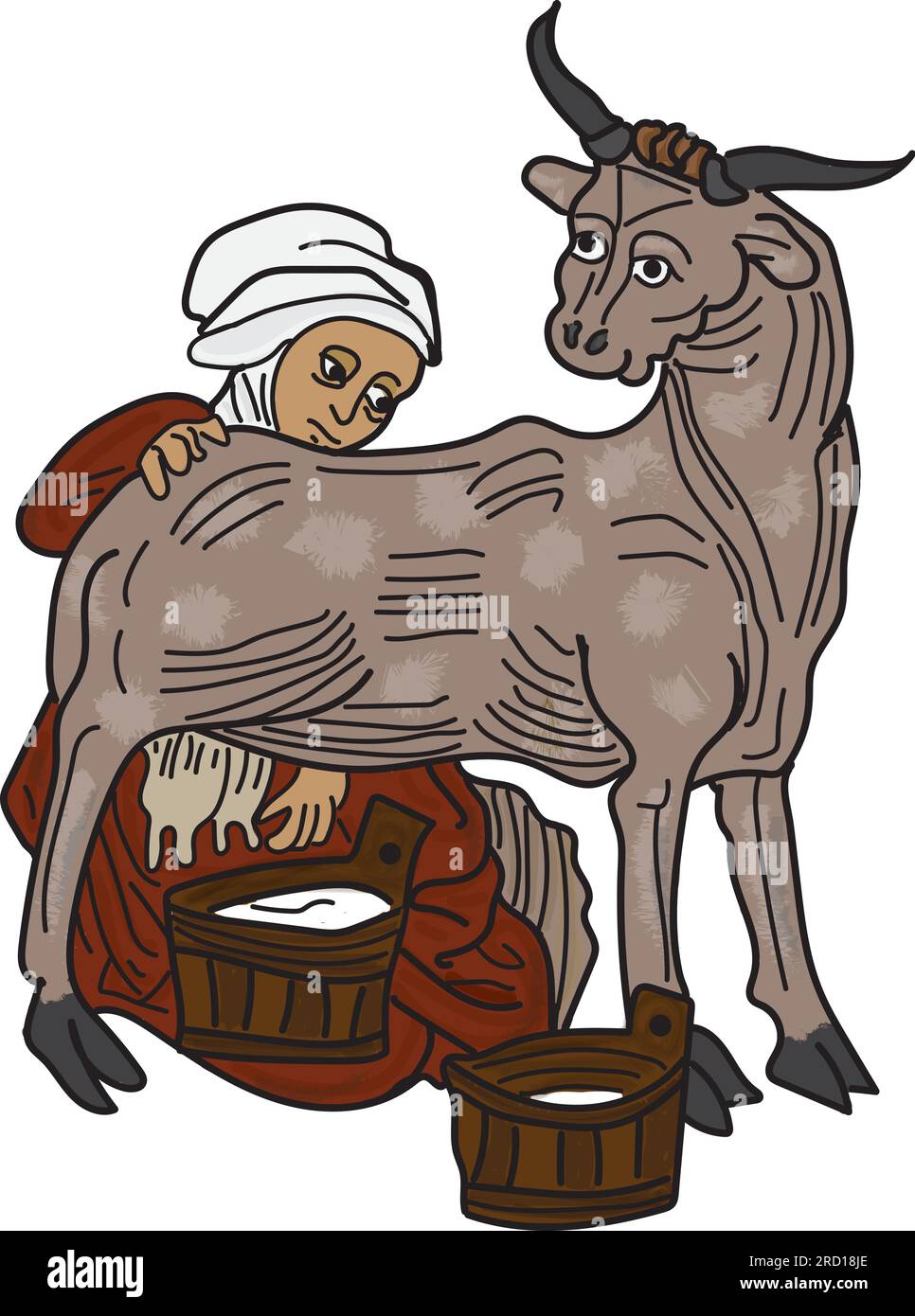 Medieval style woodcut illustration of a woman milking a cow, milkmaid Stock Vectorhttps://www.alamy.com/image-license-details/?v=1https://www.alamy.com/medieval-style-woodcut-illustration-of-a-woman-milking-a-cow-milkmaid-image558751046.html
Medieval style woodcut illustration of a woman milking a cow, milkmaid Stock Vectorhttps://www.alamy.com/image-license-details/?v=1https://www.alamy.com/medieval-style-woodcut-illustration-of-a-woman-milking-a-cow-milkmaid-image558751046.htmlRF2RD18JE–Medieval style woodcut illustration of a woman milking a cow, milkmaid
 Anglo Saxon Britain. Daily life during August in Anglo-Saxon Britain. Victorian woodcut circa 1845. Stock Photohttps://www.alamy.com/image-license-details/?v=1https://www.alamy.com/anglo-saxon-britain-daily-life-during-august-in-anglo-saxon-britain-image62190367.html
Anglo Saxon Britain. Daily life during August in Anglo-Saxon Britain. Victorian woodcut circa 1845. Stock Photohttps://www.alamy.com/image-license-details/?v=1https://www.alamy.com/anglo-saxon-britain-daily-life-during-august-in-anglo-saxon-britain-image62190367.htmlRMDH50CF–Anglo Saxon Britain. Daily life during August in Anglo-Saxon Britain. Victorian woodcut circa 1845.
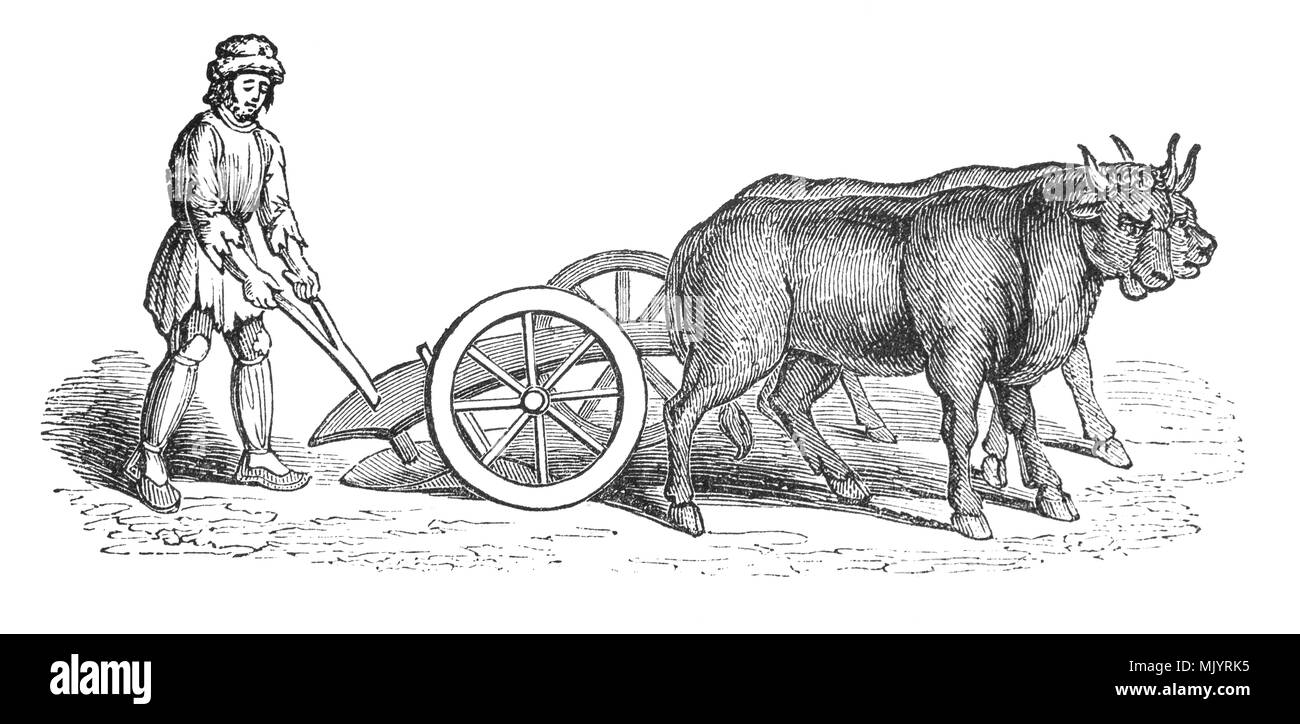 A 15th/16th Century two wheeled plough used to produced a deep furrow and turn the earth after it had been cut by the coulter and share. Pulled by a pair of oxen, a wheeled plough enabled the ploughing depth to be controlled. However, in wet weather the wheels became clogged up with mud and was therefore difficult to use. Wheeled ploughs were mainly used on sandy soils and rarely in heavy clay areas, where moulboard ploughs were popular. Stock Photohttps://www.alamy.com/image-license-details/?v=1https://www.alamy.com/a-15th16th-century-two-wheeled-plough-used-to-produced-a-deep-furrow-and-turn-the-earth-after-it-had-been-cut-by-the-coulter-and-share-pulled-by-a-pair-of-oxen-a-wheeled-plough-enabled-the-ploughing-depth-to-be-controlled-however-in-wet-weather-the-wheels-became-clogged-up-with-mud-and-was-therefore-difficult-to-use-wheeled-ploughs-were-mainly-used-on-sandy-soils-and-rarely-in-heavy-clay-areas-where-moulboard-ploughs-were-popular-image183778761.html
A 15th/16th Century two wheeled plough used to produced a deep furrow and turn the earth after it had been cut by the coulter and share. Pulled by a pair of oxen, a wheeled plough enabled the ploughing depth to be controlled. However, in wet weather the wheels became clogged up with mud and was therefore difficult to use. Wheeled ploughs were mainly used on sandy soils and rarely in heavy clay areas, where moulboard ploughs were popular. Stock Photohttps://www.alamy.com/image-license-details/?v=1https://www.alamy.com/a-15th16th-century-two-wheeled-plough-used-to-produced-a-deep-furrow-and-turn-the-earth-after-it-had-been-cut-by-the-coulter-and-share-pulled-by-a-pair-of-oxen-a-wheeled-plough-enabled-the-ploughing-depth-to-be-controlled-however-in-wet-weather-the-wheels-became-clogged-up-with-mud-and-was-therefore-difficult-to-use-wheeled-ploughs-were-mainly-used-on-sandy-soils-and-rarely-in-heavy-clay-areas-where-moulboard-ploughs-were-popular-image183778761.htmlRMMJYRK5–A 15th/16th Century two wheeled plough used to produced a deep furrow and turn the earth after it had been cut by the coulter and share. Pulled by a pair of oxen, a wheeled plough enabled the ploughing depth to be controlled. However, in wet weather the wheels became clogged up with mud and was therefore difficult to use. Wheeled ploughs were mainly used on sandy soils and rarely in heavy clay areas, where moulboard ploughs were popular.
 Etching engraving handmade style illustration of a medieval farmer farm worker holding scythe standing facing front with pot bucket pail set on isolated white background. Stock Photohttps://www.alamy.com/image-license-details/?v=1https://www.alamy.com/stock-photo-etching-engraving-handmade-style-illustration-of-a-medieval-farmer-89741228.html
Etching engraving handmade style illustration of a medieval farmer farm worker holding scythe standing facing front with pot bucket pail set on isolated white background. Stock Photohttps://www.alamy.com/image-license-details/?v=1https://www.alamy.com/stock-photo-etching-engraving-handmade-style-illustration-of-a-medieval-farmer-89741228.htmlRFF601RT–Etching engraving handmade style illustration of a medieval farmer farm worker holding scythe standing facing front with pot bucket pail set on isolated white background.
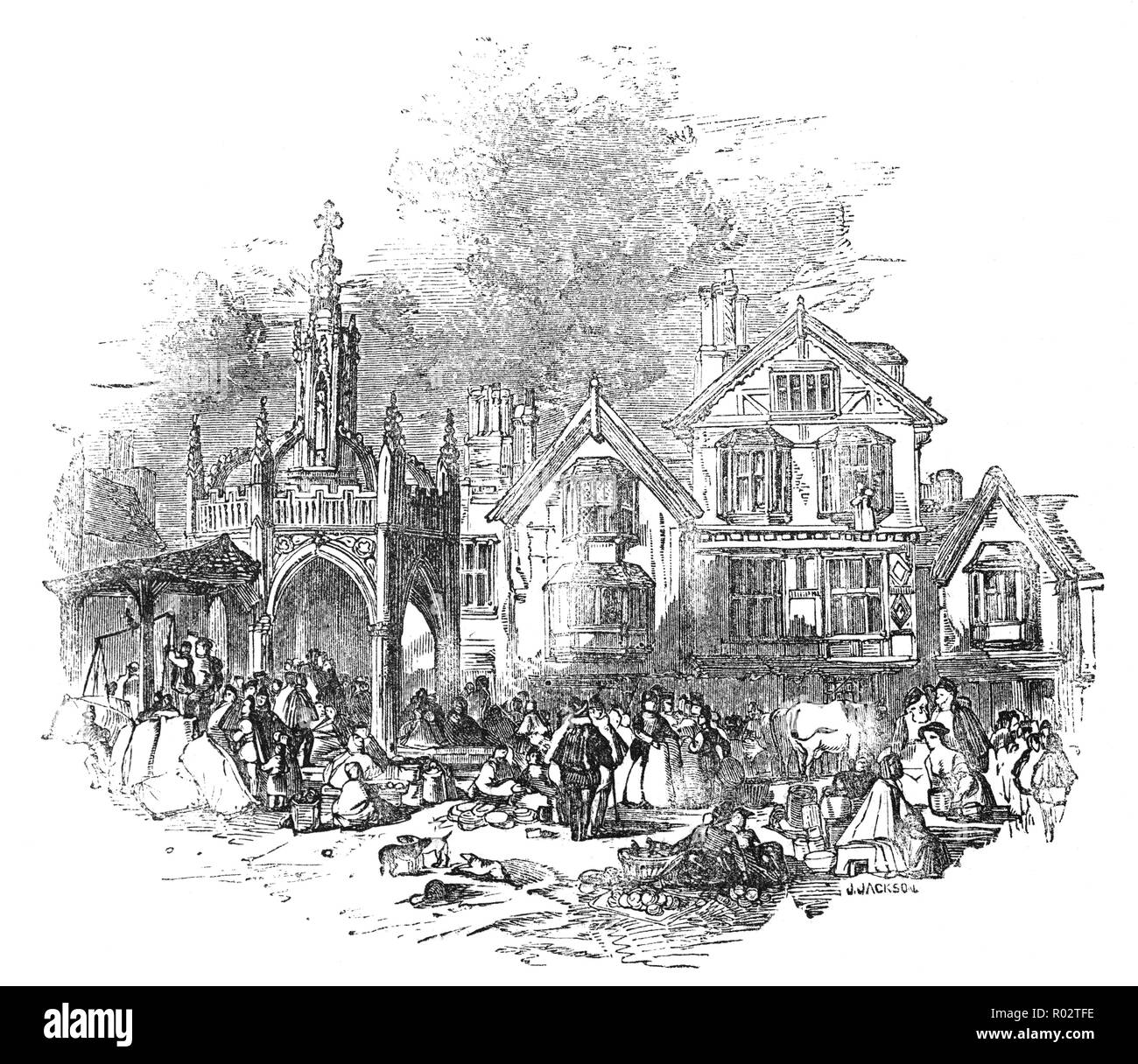 A medieval fair held in the market square of a typical English market town. Fairs were associated with high value goods and non-perishables such as farm tools, homewares, furniture, rugs and ceramics. Although a fair's primary purpose was trade, exchanging money and regional commerce it typically included some elements of entertainment, such as dance, music or tournaments Stock Photohttps://www.alamy.com/image-license-details/?v=1https://www.alamy.com/a-medieval-fair-held-in-the-market-square-of-a-typical-english-market-town-fairs-were-associated-with-high-value-goods-and-non-perishables-such-as-farm-tools-homewares-furniture-rugs-and-ceramics-although-a-fairs-primary-purpose-was-trade-exchanging-money-and-regional-commerce-it-typically-included-some-elements-of-entertainment-such-as-dance-music-or-tournaments-image223797938.html
A medieval fair held in the market square of a typical English market town. Fairs were associated with high value goods and non-perishables such as farm tools, homewares, furniture, rugs and ceramics. Although a fair's primary purpose was trade, exchanging money and regional commerce it typically included some elements of entertainment, such as dance, music or tournaments Stock Photohttps://www.alamy.com/image-license-details/?v=1https://www.alamy.com/a-medieval-fair-held-in-the-market-square-of-a-typical-english-market-town-fairs-were-associated-with-high-value-goods-and-non-perishables-such-as-farm-tools-homewares-furniture-rugs-and-ceramics-although-a-fairs-primary-purpose-was-trade-exchanging-money-and-regional-commerce-it-typically-included-some-elements-of-entertainment-such-as-dance-music-or-tournaments-image223797938.htmlRMR02TFE–A medieval fair held in the market square of a typical English market town. Fairs were associated with high value goods and non-perishables such as farm tools, homewares, furniture, rugs and ceramics. Although a fair's primary purpose was trade, exchanging money and regional commerce it typically included some elements of entertainment, such as dance, music or tournaments
 Medieval illustration of farmers loughing a field, 14th Century Stock Photohttps://www.alamy.com/image-license-details/?v=1https://www.alamy.com/stock-photo-medieval-illustration-of-farmers-loughing-a-field-14th-century-129400935.html
Medieval illustration of farmers loughing a field, 14th Century Stock Photohttps://www.alamy.com/image-license-details/?v=1https://www.alamy.com/stock-photo-medieval-illustration-of-farmers-loughing-a-field-14th-century-129400935.htmlRMHEEM5Y–Medieval illustration of farmers loughing a field, 14th Century
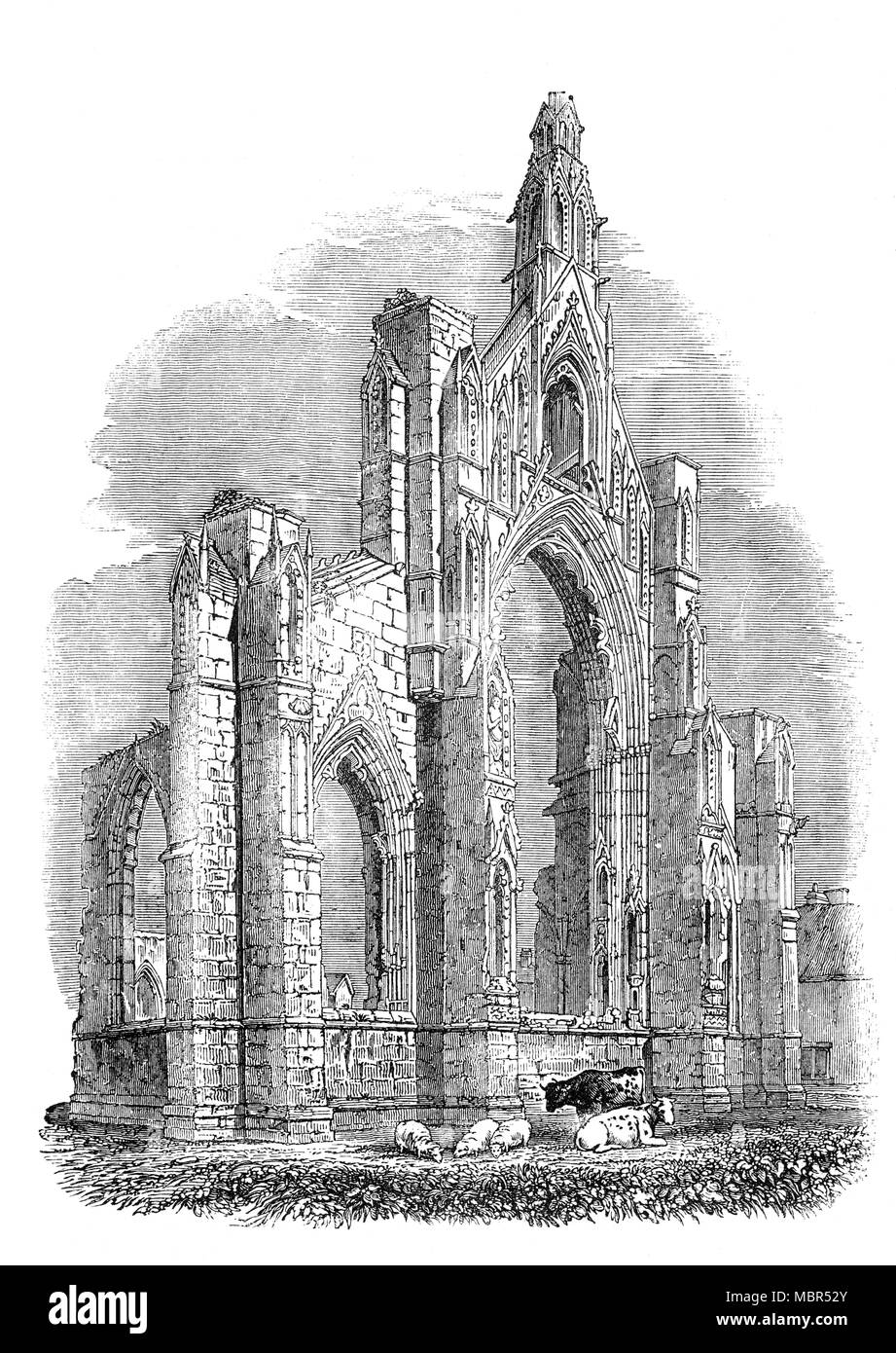 The elaborately decorated ruins of a 14th century chancel and chapter house of Howden Minster, City of York, Yorkshire, England. The minster fell into ruin during the English Civil War, when the Parliamentarians used it as a stable during their stay on the way to lay siege to Wressle Castle damaging the the organ, much of the wooden structures, and some of the masonry. On the night of 29 September 1696, after nearly 150 years of neglect, the roof of the choir fell down. The remains were left where they fell until 1748 when the site was cleared. Stock Photohttps://www.alamy.com/image-license-details/?v=1https://www.alamy.com/the-elaborately-decorated-ruins-of-a-14th-century-chancel-and-chapter-house-of-howden-minster-city-of-york-yorkshire-england-the-minster-fell-into-ruin-during-the-english-civil-war-when-the-parliamentarians-used-it-as-a-stable-during-their-stay-on-the-way-to-lay-siege-to-wressle-castle-damaging-the-the-organ-much-of-the-wooden-structures-and-some-of-the-masonry-on-the-night-of-29-september-1696-after-nearly-150-years-of-neglect-the-roof-of-the-choir-fell-down-the-remains-were-left-where-they-fell-until-1748-when-the-site-was-cleared-image179373795.html
The elaborately decorated ruins of a 14th century chancel and chapter house of Howden Minster, City of York, Yorkshire, England. The minster fell into ruin during the English Civil War, when the Parliamentarians used it as a stable during their stay on the way to lay siege to Wressle Castle damaging the the organ, much of the wooden structures, and some of the masonry. On the night of 29 September 1696, after nearly 150 years of neglect, the roof of the choir fell down. The remains were left where they fell until 1748 when the site was cleared. Stock Photohttps://www.alamy.com/image-license-details/?v=1https://www.alamy.com/the-elaborately-decorated-ruins-of-a-14th-century-chancel-and-chapter-house-of-howden-minster-city-of-york-yorkshire-england-the-minster-fell-into-ruin-during-the-english-civil-war-when-the-parliamentarians-used-it-as-a-stable-during-their-stay-on-the-way-to-lay-siege-to-wressle-castle-damaging-the-the-organ-much-of-the-wooden-structures-and-some-of-the-masonry-on-the-night-of-29-september-1696-after-nearly-150-years-of-neglect-the-roof-of-the-choir-fell-down-the-remains-were-left-where-they-fell-until-1748-when-the-site-was-cleared-image179373795.htmlRMMBR52Y–The elaborately decorated ruins of a 14th century chancel and chapter house of Howden Minster, City of York, Yorkshire, England. The minster fell into ruin during the English Civil War, when the Parliamentarians used it as a stable during their stay on the way to lay siege to Wressle Castle damaging the the organ, much of the wooden structures, and some of the masonry. On the night of 29 September 1696, after nearly 150 years of neglect, the roof of the choir fell down. The remains were left where they fell until 1748 when the site was cleared.
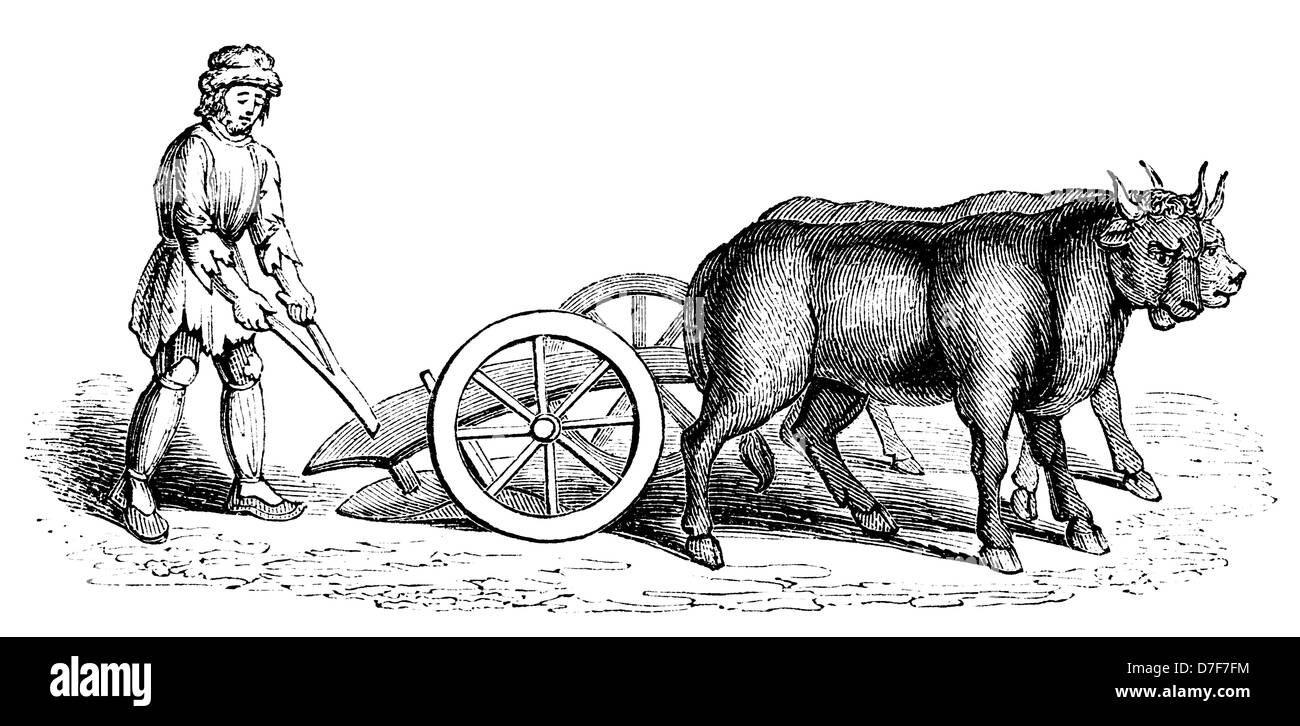 Man Driving Two-Wheeled Plough, Vintage woodcut based on mediaeval manuscript Stock Photohttps://www.alamy.com/image-license-details/?v=1https://www.alamy.com/stock-photo-man-driving-two-wheeled-plough-vintage-woodcut-based-on-mediaeval-56268904.html
Man Driving Two-Wheeled Plough, Vintage woodcut based on mediaeval manuscript Stock Photohttps://www.alamy.com/image-license-details/?v=1https://www.alamy.com/stock-photo-man-driving-two-wheeled-plough-vintage-woodcut-based-on-mediaeval-56268904.htmlRFD7F7FM–Man Driving Two-Wheeled Plough, Vintage woodcut based on mediaeval manuscript
 1870: Anne Hathaway's Cottage is a twelve-roomed farmhouse where Anne Hathaway, the wife of William Shakespeare, lived as a child in the village of Shottery. The earliest part of the house was built prior to the 15th century; the higher part is 17th century. The house was known as Hewlands Farm in Shakespeare's day and is situated about 1 mile (1.6 km) west of Stratford-upon-Avon. Warwickshire, England Stock Photohttps://www.alamy.com/image-license-details/?v=1https://www.alamy.com/1870-anne-hathaways-cottage-is-a-twelve-roomed-farmhouse-where-anne-image150110003.html
1870: Anne Hathaway's Cottage is a twelve-roomed farmhouse where Anne Hathaway, the wife of William Shakespeare, lived as a child in the village of Shottery. The earliest part of the house was built prior to the 15th century; the higher part is 17th century. The house was known as Hewlands Farm in Shakespeare's day and is situated about 1 mile (1.6 km) west of Stratford-upon-Avon. Warwickshire, England Stock Photohttps://www.alamy.com/image-license-details/?v=1https://www.alamy.com/1870-anne-hathaways-cottage-is-a-twelve-roomed-farmhouse-where-anne-image150110003.htmlRMJM62RF–1870: Anne Hathaway's Cottage is a twelve-roomed farmhouse where Anne Hathaway, the wife of William Shakespeare, lived as a child in the village of Shottery. The earliest part of the house was built prior to the 15th century; the higher part is 17th century. The house was known as Hewlands Farm in Shakespeare's day and is situated about 1 mile (1.6 km) west of Stratford-upon-Avon. Warwickshire, England
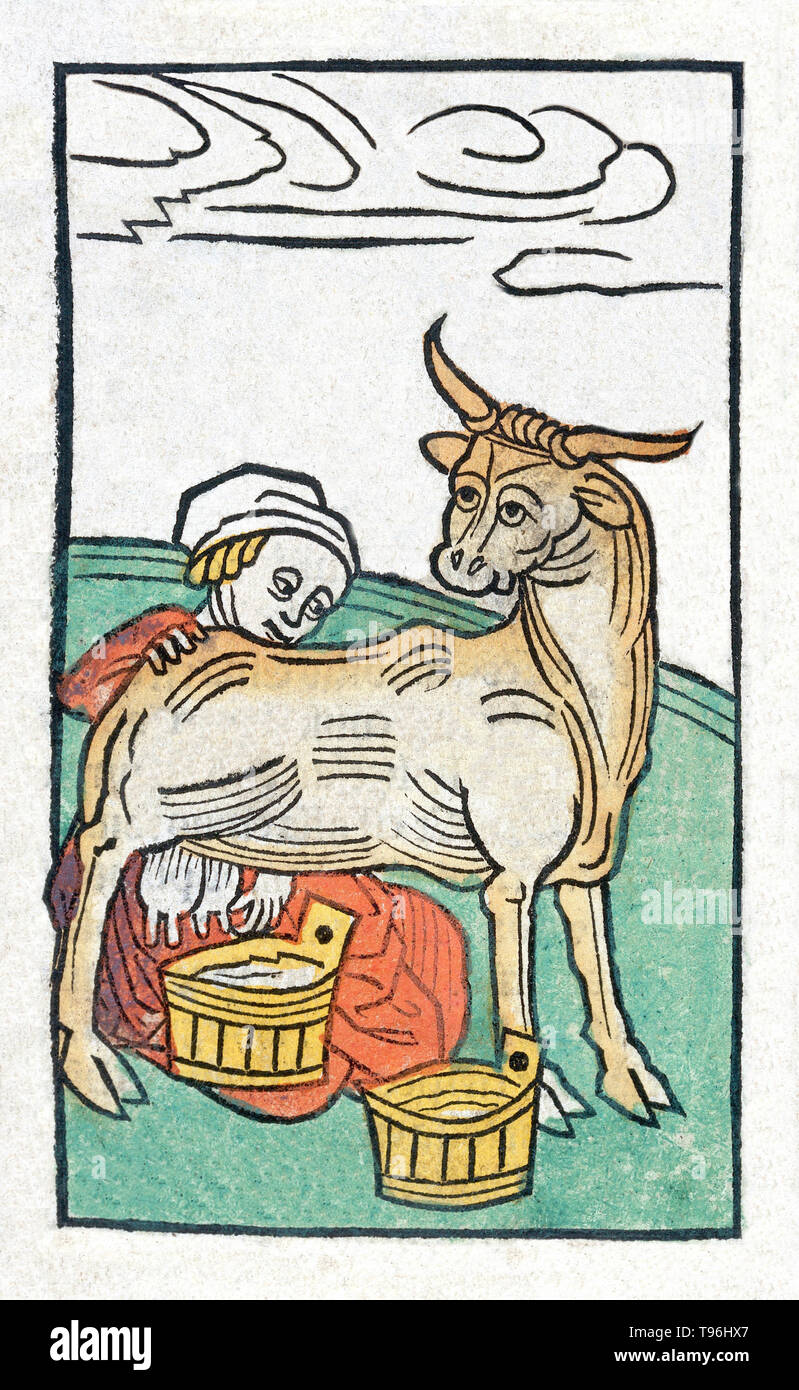 Woman milking cow. The Hortus Sanitatis (Garden of Health), the first natural history encyclopedia, was published by Jacob Meydenbach in Germany, 1491. He describes plants and animals (both real and mythical) together with minerals and various trades, with their medicinal value and method of preparation. The hand-colored woodcut illustrations are stylized but often easily recognizable. 1547 edition. Stock Photohttps://www.alamy.com/image-license-details/?v=1https://www.alamy.com/woman-milking-cow-the-hortus-sanitatis-garden-of-health-the-first-natural-history-encyclopedia-was-published-by-jacob-meydenbach-in-germany-1491-he-describes-plants-and-animals-both-real-and-mythical-together-with-minerals-and-various-trades-with-their-medicinal-value-and-method-of-preparation-the-hand-colored-woodcut-illustrations-are-stylized-but-often-easily-recognizable-1547-edition-image246622831.html
Woman milking cow. The Hortus Sanitatis (Garden of Health), the first natural history encyclopedia, was published by Jacob Meydenbach in Germany, 1491. He describes plants and animals (both real and mythical) together with minerals and various trades, with their medicinal value and method of preparation. The hand-colored woodcut illustrations are stylized but often easily recognizable. 1547 edition. Stock Photohttps://www.alamy.com/image-license-details/?v=1https://www.alamy.com/woman-milking-cow-the-hortus-sanitatis-garden-of-health-the-first-natural-history-encyclopedia-was-published-by-jacob-meydenbach-in-germany-1491-he-describes-plants-and-animals-both-real-and-mythical-together-with-minerals-and-various-trades-with-their-medicinal-value-and-method-of-preparation-the-hand-colored-woodcut-illustrations-are-stylized-but-often-easily-recognizable-1547-edition-image246622831.htmlRMT96HX7–Woman milking cow. The Hortus Sanitatis (Garden of Health), the first natural history encyclopedia, was published by Jacob Meydenbach in Germany, 1491. He describes plants and animals (both real and mythical) together with minerals and various trades, with their medicinal value and method of preparation. The hand-colored woodcut illustrations are stylized but often easily recognizable. 1547 edition.
 Harvest time and Anglo Saxon farmers winnow and thresh corn in 8th Century England. Stock Photohttps://www.alamy.com/image-license-details/?v=1https://www.alamy.com/stock-image-harvest-time-and-anglo-saxon-farmers-winnow-and-thresh-corn-in-8th-165453279.html
Harvest time and Anglo Saxon farmers winnow and thresh corn in 8th Century England. Stock Photohttps://www.alamy.com/image-license-details/?v=1https://www.alamy.com/stock-image-harvest-time-and-anglo-saxon-farmers-winnow-and-thresh-corn-in-8th-165453279.htmlRMKH519K–Harvest time and Anglo Saxon farmers winnow and thresh corn in 8th Century England.
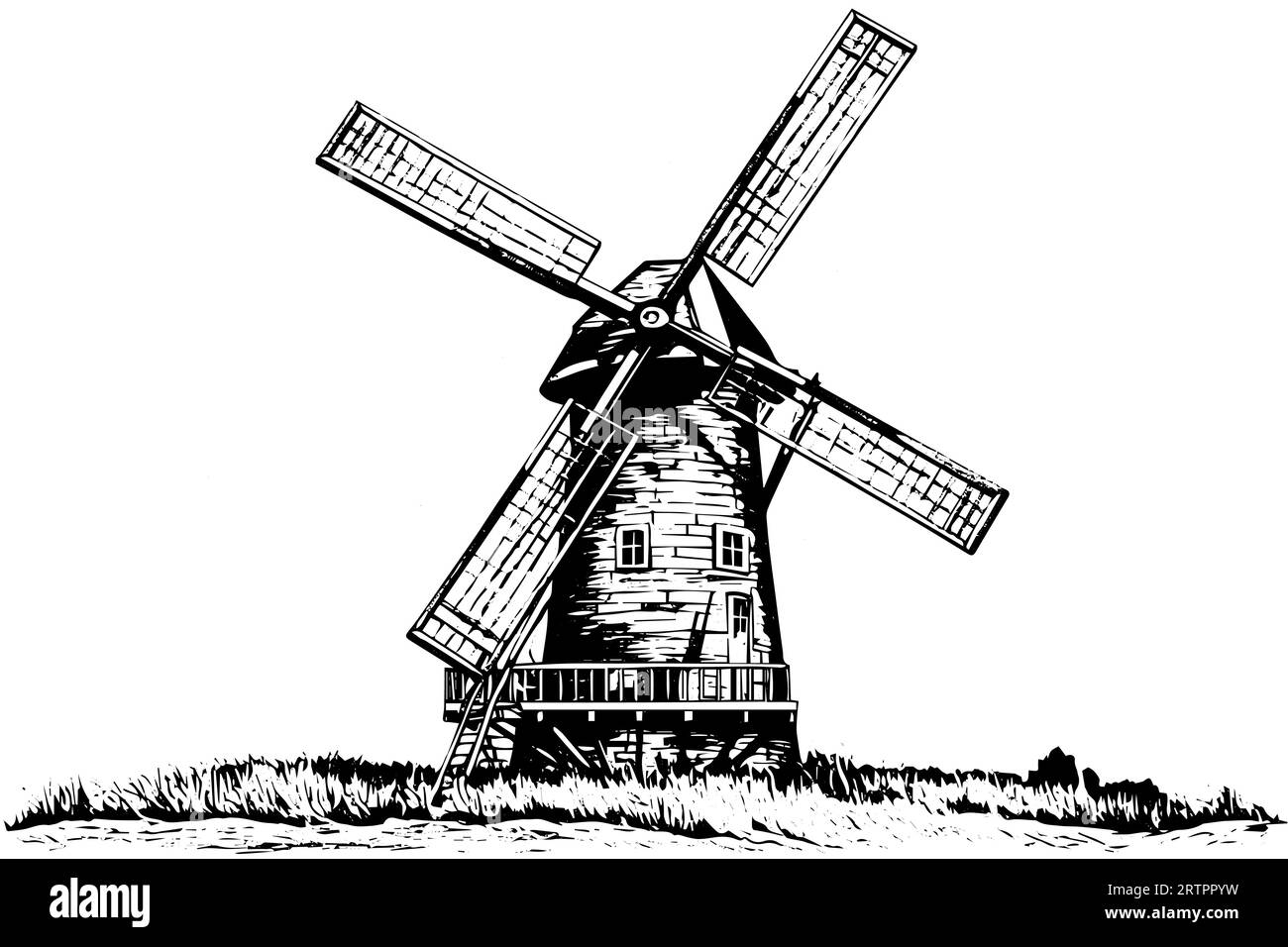 Windmil in the field hand drawn vintage sketch. Engraving style vector illustration. Stock Vectorhttps://www.alamy.com/image-license-details/?v=1https://www.alamy.com/windmil-in-the-field-hand-drawn-vintage-sketch-engraving-style-vector-illustration-image565984493.html
Windmil in the field hand drawn vintage sketch. Engraving style vector illustration. Stock Vectorhttps://www.alamy.com/image-license-details/?v=1https://www.alamy.com/windmil-in-the-field-hand-drawn-vintage-sketch-engraving-style-vector-illustration-image565984493.htmlRF2RTPPYW–Windmil in the field hand drawn vintage sketch. Engraving style vector illustration.
 Peasant carrying a shovel in the 1400s. Hand-colored woodcut Stock Photohttps://www.alamy.com/image-license-details/?v=1https://www.alamy.com/stock-photo-peasant-carrying-a-shovel-in-the-1400s-hand-colored-woodcut-27116846.html
Peasant carrying a shovel in the 1400s. Hand-colored woodcut Stock Photohttps://www.alamy.com/image-license-details/?v=1https://www.alamy.com/stock-photo-peasant-carrying-a-shovel-in-the-1400s-hand-colored-woodcut-27116846.htmlRMBG37PP–Peasant carrying a shovel in the 1400s. Hand-colored woodcut
 Knights in armour on horseback woodcut from Boccaccio's de claris mulieribus (on famous women), published in Ulm 1473 Stock Photohttps://www.alamy.com/image-license-details/?v=1https://www.alamy.com/stock-photo-knights-in-armour-on-horseback-woodcut-from-boccaccios-de-claris-mulieribus-84962105.html
Knights in armour on horseback woodcut from Boccaccio's de claris mulieribus (on famous women), published in Ulm 1473 Stock Photohttps://www.alamy.com/image-license-details/?v=1https://www.alamy.com/stock-photo-knights-in-armour-on-horseback-woodcut-from-boccaccios-de-claris-mulieribus-84962105.htmlRMEX6A0W–Knights in armour on horseback woodcut from Boccaccio's de claris mulieribus (on famous women), published in Ulm 1473
 Wheat ear - vintage engraved vector illustration (hand drawn style) Stock Vectorhttps://www.alamy.com/image-license-details/?v=1https://www.alamy.com/wheat-ear-vintage-engraved-vector-illustration-hand-drawn-style-image456938208.html
Wheat ear - vintage engraved vector illustration (hand drawn style) Stock Vectorhttps://www.alamy.com/image-license-details/?v=1https://www.alamy.com/wheat-ear-vintage-engraved-vector-illustration-hand-drawn-style-image456938208.htmlRF2HFB99M–Wheat ear - vintage engraved vector illustration (hand drawn style)
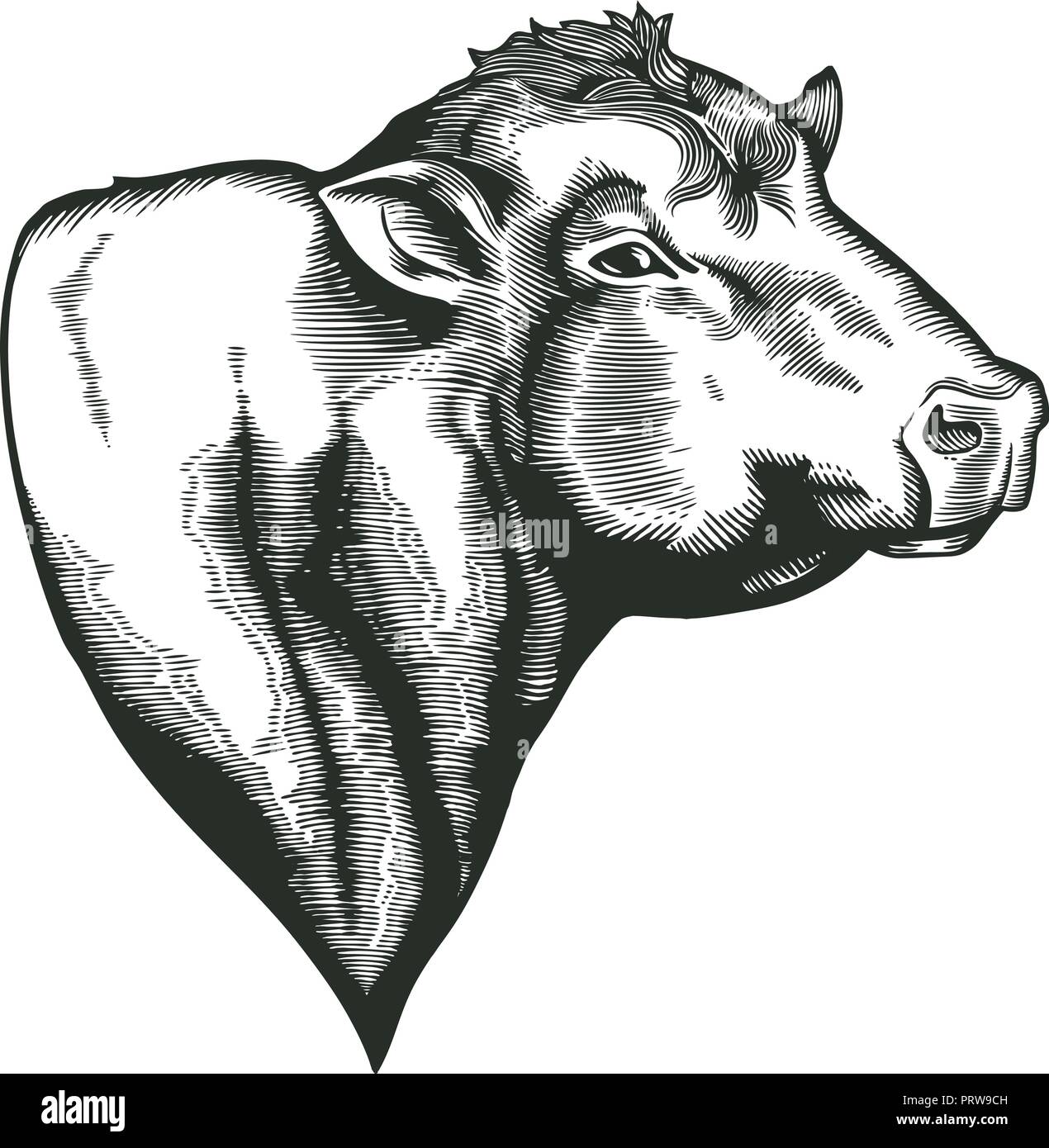 Head of bull of dangus breed drawn in vintage woodcut style. Farm animal isolated on white background. Vector illustration for agricultural market identity, products logo, advertisement. Stock Vectorhttps://www.alamy.com/image-license-details/?v=1https://www.alamy.com/head-of-bull-of-dangus-breed-drawn-in-vintage-woodcut-style-farm-animal-isolated-on-white-background-vector-illustration-for-agricultural-market-identity-products-logo-advertisement-image221217713.html
Head of bull of dangus breed drawn in vintage woodcut style. Farm animal isolated on white background. Vector illustration for agricultural market identity, products logo, advertisement. Stock Vectorhttps://www.alamy.com/image-license-details/?v=1https://www.alamy.com/head-of-bull-of-dangus-breed-drawn-in-vintage-woodcut-style-farm-animal-isolated-on-white-background-vector-illustration-for-agricultural-market-identity-products-logo-advertisement-image221217713.htmlRFPRW9CH–Head of bull of dangus breed drawn in vintage woodcut style. Farm animal isolated on white background. Vector illustration for agricultural market identity, products logo, advertisement.
 Medieval Farmer Holding Scythe Etching Stock Vectorhttps://www.alamy.com/image-license-details/?v=1https://www.alamy.com/stock-photo-medieval-farmer-holding-scythe-etching-115529073.html
Medieval Farmer Holding Scythe Etching Stock Vectorhttps://www.alamy.com/image-license-details/?v=1https://www.alamy.com/stock-photo-medieval-farmer-holding-scythe-etching-115529073.htmlRFGKXPE9–Medieval Farmer Holding Scythe Etching
 Sowing the seed, Woodcut, Augsburg, Germany, 1480, digitally restored Stock Photohttps://www.alamy.com/image-license-details/?v=1https://www.alamy.com/sowing-the-seed-woodcut-augsburg-germany-1480-digitally-restored-image387548714.html
Sowing the seed, Woodcut, Augsburg, Germany, 1480, digitally restored Stock Photohttps://www.alamy.com/image-license-details/?v=1https://www.alamy.com/sowing-the-seed-woodcut-augsburg-germany-1480-digitally-restored-image387548714.htmlRM2DEEA9E–Sowing the seed, Woodcut, Augsburg, Germany, 1480, digitally restored
RF2GG1TH9–Medieval Building Map Icon Vintage Illustration
 Woman of Latin descent next to a white horned cow, wooden bucket at side. Stock Vectorhttps://www.alamy.com/image-license-details/?v=1https://www.alamy.com/woman-of-latin-descent-next-to-a-white-horned-cow-wooden-bucket-at-side-image558942681.html
Woman of Latin descent next to a white horned cow, wooden bucket at side. Stock Vectorhttps://www.alamy.com/image-license-details/?v=1https://www.alamy.com/woman-of-latin-descent-next-to-a-white-horned-cow-wooden-bucket-at-side-image558942681.htmlRF2RDA12H–Woman of Latin descent next to a white horned cow, wooden bucket at side.
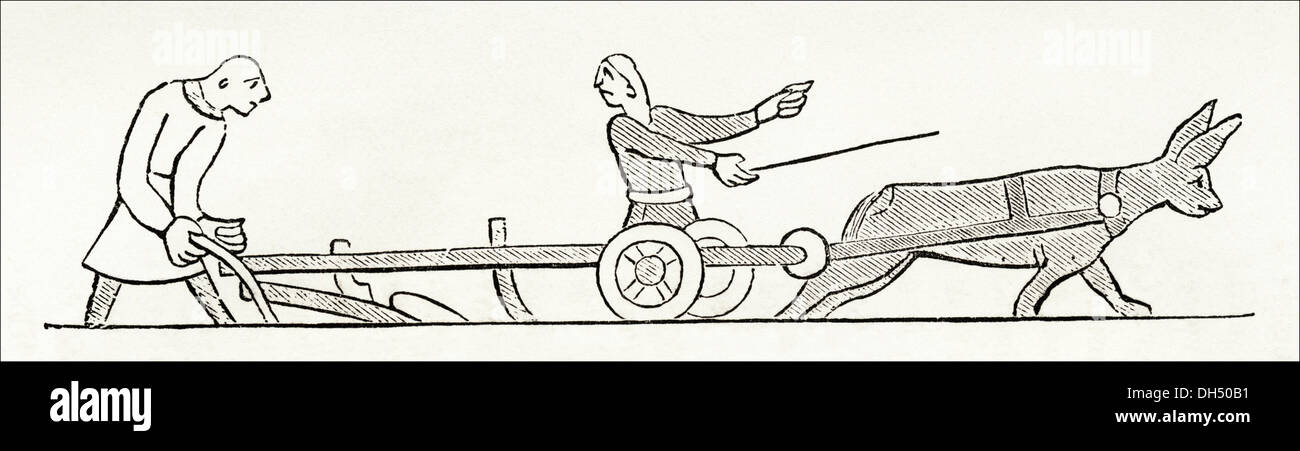 Anglo Saxon Britain. Daily life men ploughing in Anglo-Saxon Britain. Victorian woodcut circa 1845. Stock Photohttps://www.alamy.com/image-license-details/?v=1https://www.alamy.com/anglo-saxon-britain-daily-life-men-ploughing-in-anglo-saxon-britain-image62190325.html
Anglo Saxon Britain. Daily life men ploughing in Anglo-Saxon Britain. Victorian woodcut circa 1845. Stock Photohttps://www.alamy.com/image-license-details/?v=1https://www.alamy.com/anglo-saxon-britain-daily-life-men-ploughing-in-anglo-saxon-britain-image62190325.htmlRMDH50B1–Anglo Saxon Britain. Daily life men ploughing in Anglo-Saxon Britain. Victorian woodcut circa 1845.
 Medieval Farmer Holding Scythe Etching Stock Photohttps://www.alamy.com/image-license-details/?v=1https://www.alamy.com/stock-photo-medieval-farmer-holding-scythe-etching-103104506.html
Medieval Farmer Holding Scythe Etching Stock Photohttps://www.alamy.com/image-license-details/?v=1https://www.alamy.com/stock-photo-medieval-farmer-holding-scythe-etching-103104506.htmlRMFYMPRP–Medieval Farmer Holding Scythe Etching
 Dat boek van der navolghinge ihesu Christi, 1489. Stock Photohttps://www.alamy.com/image-license-details/?v=1https://www.alamy.com/dat-boek-van-der-navolghinge-ihesu-christi-1489-image382621364.html
Dat boek van der navolghinge ihesu Christi, 1489. Stock Photohttps://www.alamy.com/image-license-details/?v=1https://www.alamy.com/dat-boek-van-der-navolghinge-ihesu-christi-1489-image382621364.htmlRM2D6DWCM–Dat boek van der navolghinge ihesu Christi, 1489.
 Swine Stock Photohttps://www.alamy.com/image-license-details/?v=1https://www.alamy.com/swine-image477173578.html
Swine Stock Photohttps://www.alamy.com/image-license-details/?v=1https://www.alamy.com/swine-image477173578.htmlRF2JM93NE–Swine
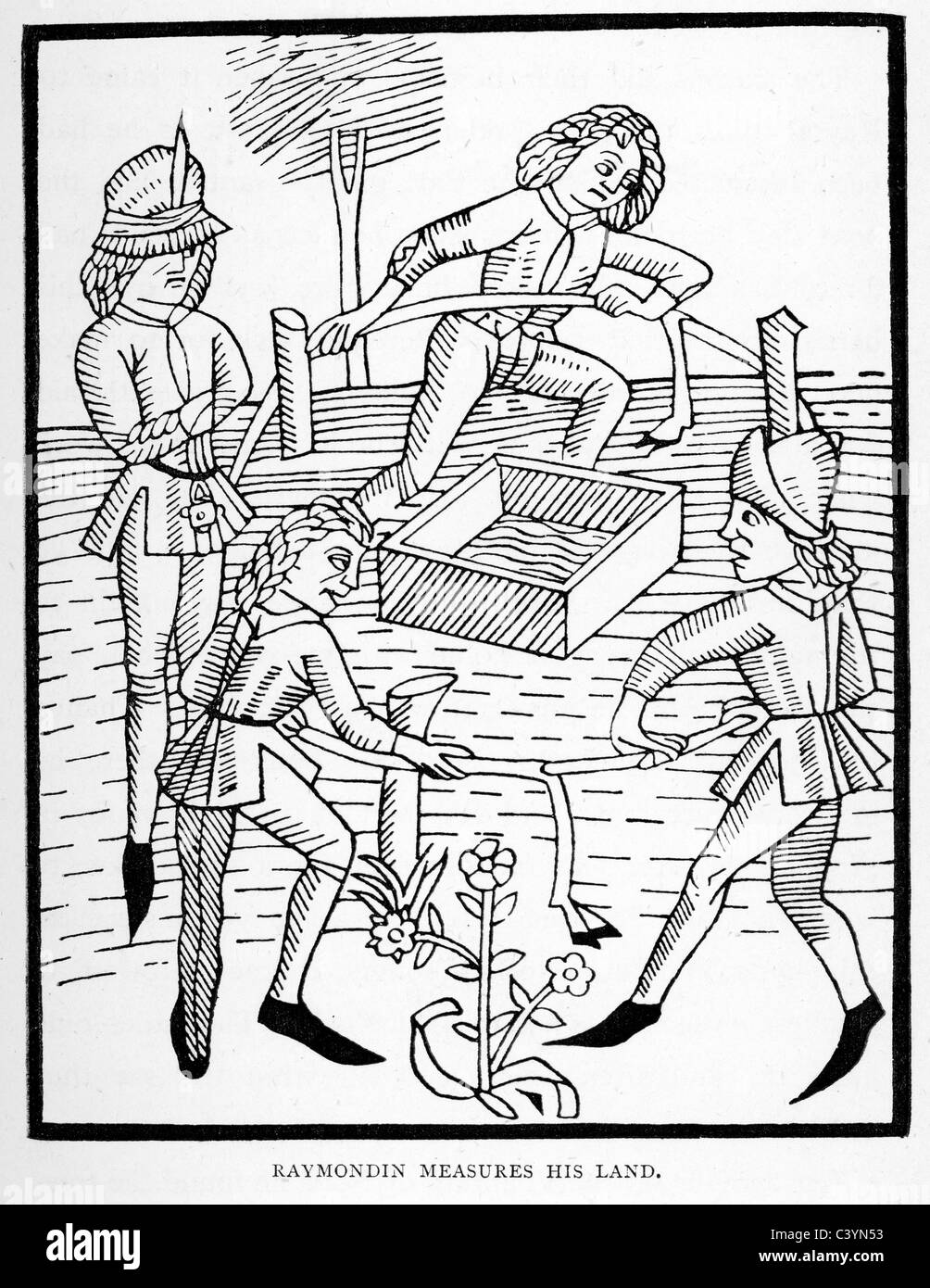 Medieval woodcut from the story of Melusine. Raymondin measures his land Stock Photohttps://www.alamy.com/image-license-details/?v=1https://www.alamy.com/stock-photo-medieval-woodcut-from-the-story-of-melusine-raymondin-measures-his-36874015.html
Medieval woodcut from the story of Melusine. Raymondin measures his land Stock Photohttps://www.alamy.com/image-license-details/?v=1https://www.alamy.com/stock-photo-medieval-woodcut-from-the-story-of-melusine-raymondin-measures-his-36874015.htmlRMC3YN53–Medieval woodcut from the story of Melusine. Raymondin measures his land
 The Anglo-Saxon Invasion of England took place from the mid-fifth to early seventh centuries, following the end of Roman power in Britain around the year 410. The 'monthly' life of the times is illustrated in a series of pictures. The Anglo-Saxon Calendar 10/12: October aka Wyn-monat or Wine Month: The south of England was warm enough for small vineyards and the side illustrations show a grape presser preparing the wine-making process. Whilst on the farm autumn planting of seed took place in the fields. Meanwhile, the nobles and falconers caught herons and wild duck. Stock Photohttps://www.alamy.com/image-license-details/?v=1https://www.alamy.com/stock-image-the-anglo-saxon-invasion-of-england-took-place-from-the-mid-fifth-165453228.html
The Anglo-Saxon Invasion of England took place from the mid-fifth to early seventh centuries, following the end of Roman power in Britain around the year 410. The 'monthly' life of the times is illustrated in a series of pictures. The Anglo-Saxon Calendar 10/12: October aka Wyn-monat or Wine Month: The south of England was warm enough for small vineyards and the side illustrations show a grape presser preparing the wine-making process. Whilst on the farm autumn planting of seed took place in the fields. Meanwhile, the nobles and falconers caught herons and wild duck. Stock Photohttps://www.alamy.com/image-license-details/?v=1https://www.alamy.com/stock-image-the-anglo-saxon-invasion-of-england-took-place-from-the-mid-fifth-165453228.htmlRMKH517T–The Anglo-Saxon Invasion of England took place from the mid-fifth to early seventh centuries, following the end of Roman power in Britain around the year 410. The 'monthly' life of the times is illustrated in a series of pictures. The Anglo-Saxon Calendar 10/12: October aka Wyn-monat or Wine Month: The south of England was warm enough for small vineyards and the side illustrations show a grape presser preparing the wine-making process. Whilst on the farm autumn planting of seed took place in the fields. Meanwhile, the nobles and falconers caught herons and wild duck.
 Windmil in the field hand drawn vintage sketch. Engraving style vector illustration. Stock Vectorhttps://www.alamy.com/image-license-details/?v=1https://www.alamy.com/windmil-in-the-field-hand-drawn-vintage-sketch-engraving-style-vector-illustration-image565981287.html
Windmil in the field hand drawn vintage sketch. Engraving style vector illustration. Stock Vectorhttps://www.alamy.com/image-license-details/?v=1https://www.alamy.com/windmil-in-the-field-hand-drawn-vintage-sketch-engraving-style-vector-illustration-image565981287.htmlRF2RTPJWB–Windmil in the field hand drawn vintage sketch. Engraving style vector illustration.
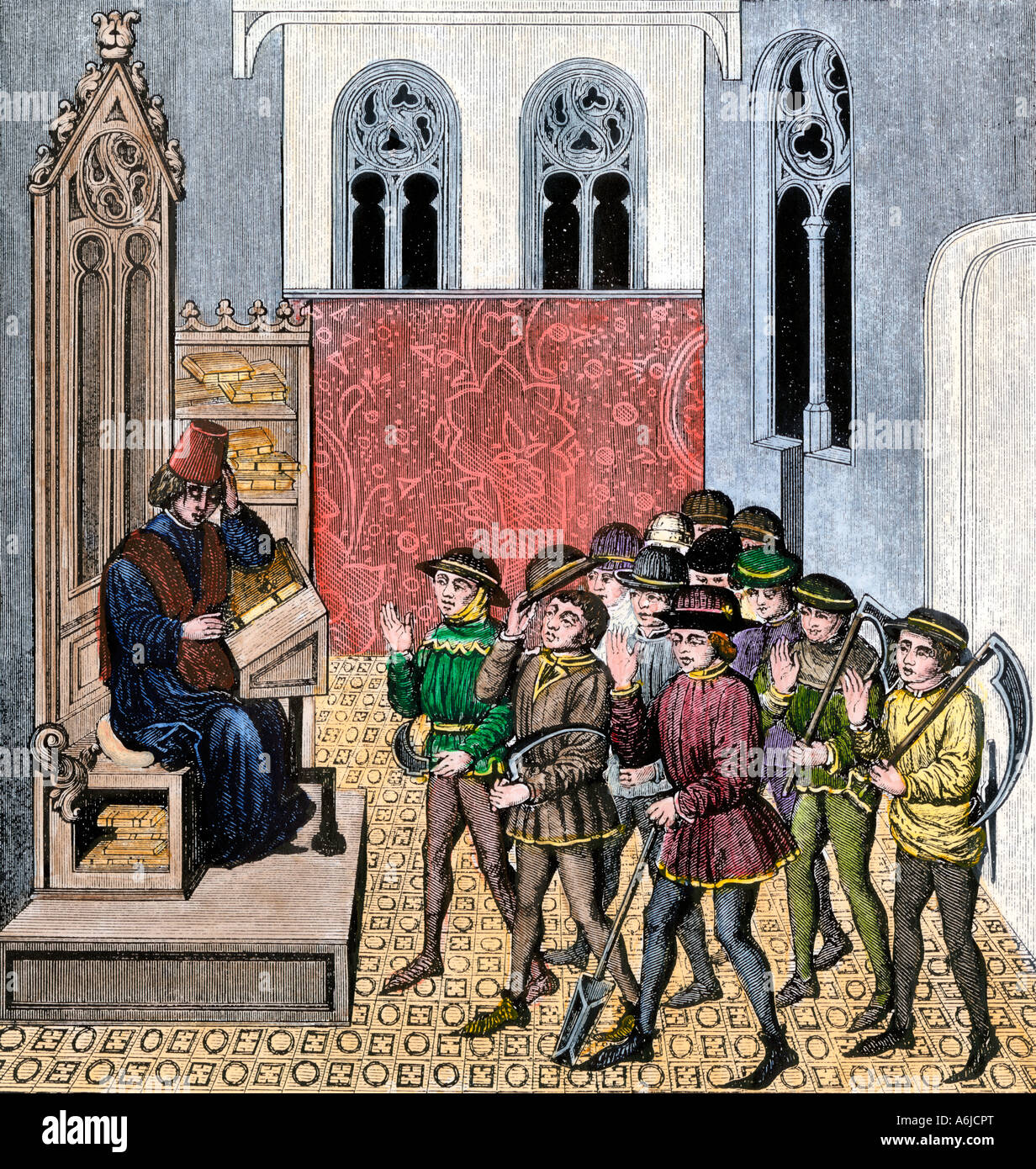 Peasants receiving orders from their lord before going to work 1400s. Hand-colored woodcut Stock Photohttps://www.alamy.com/image-license-details/?v=1https://www.alamy.com/stock-photo-peasants-receiving-orders-from-their-lord-before-going-to-work-1400s-11588687.html
Peasants receiving orders from their lord before going to work 1400s. Hand-colored woodcut Stock Photohttps://www.alamy.com/image-license-details/?v=1https://www.alamy.com/stock-photo-peasants-receiving-orders-from-their-lord-before-going-to-work-1400s-11588687.htmlRMA6JCPT–Peasants receiving orders from their lord before going to work 1400s. Hand-colored woodcut
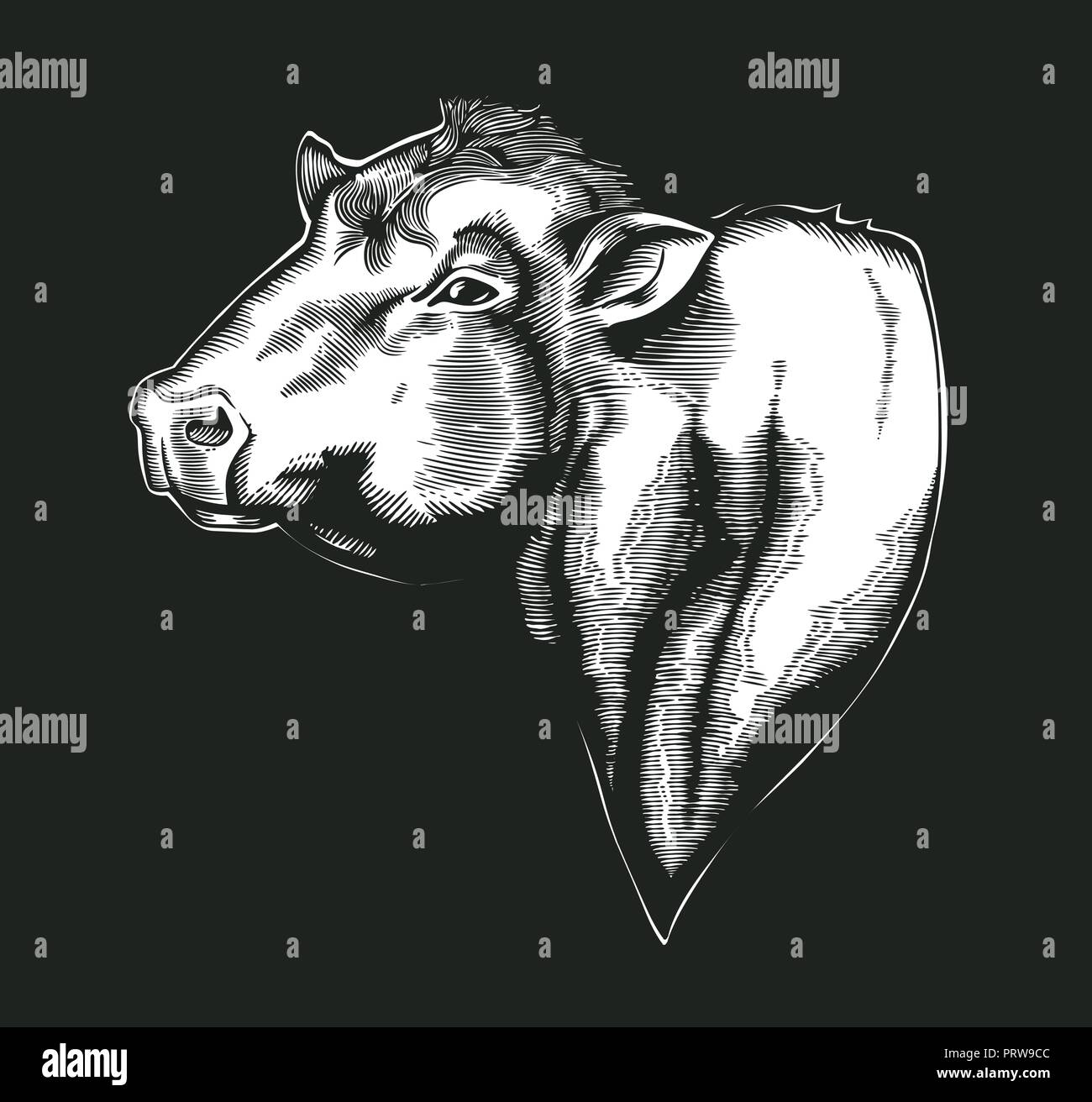 Head of bull of dangus breed drawn in vintage woodcut style. Farm animal isolated on white background. Vector illustration for agricultural market identity, products logo, advertisement. Stock Vectorhttps://www.alamy.com/image-license-details/?v=1https://www.alamy.com/head-of-bull-of-dangus-breed-drawn-in-vintage-woodcut-style-farm-animal-isolated-on-white-background-vector-illustration-for-agricultural-market-identity-products-logo-advertisement-image221217708.html
Head of bull of dangus breed drawn in vintage woodcut style. Farm animal isolated on white background. Vector illustration for agricultural market identity, products logo, advertisement. Stock Vectorhttps://www.alamy.com/image-license-details/?v=1https://www.alamy.com/head-of-bull-of-dangus-breed-drawn-in-vintage-woodcut-style-farm-animal-isolated-on-white-background-vector-illustration-for-agricultural-market-identity-products-logo-advertisement-image221217708.htmlRFPRW9CC–Head of bull of dangus breed drawn in vintage woodcut style. Farm animal isolated on white background. Vector illustration for agricultural market identity, products logo, advertisement.
 Sowing the seed, Woodcut, Augsburg, Germany, 1480, digitally restored Stock Photohttps://www.alamy.com/image-license-details/?v=1https://www.alamy.com/sowing-the-seed-woodcut-augsburg-germany-1480-digitally-restored-image387548684.html
Sowing the seed, Woodcut, Augsburg, Germany, 1480, digitally restored Stock Photohttps://www.alamy.com/image-license-details/?v=1https://www.alamy.com/sowing-the-seed-woodcut-augsburg-germany-1480-digitally-restored-image387548684.htmlRM2DEEA8C–Sowing the seed, Woodcut, Augsburg, Germany, 1480, digitally restored
RF2FM82E4–Medieval Building Map Icon Vintage Illustration
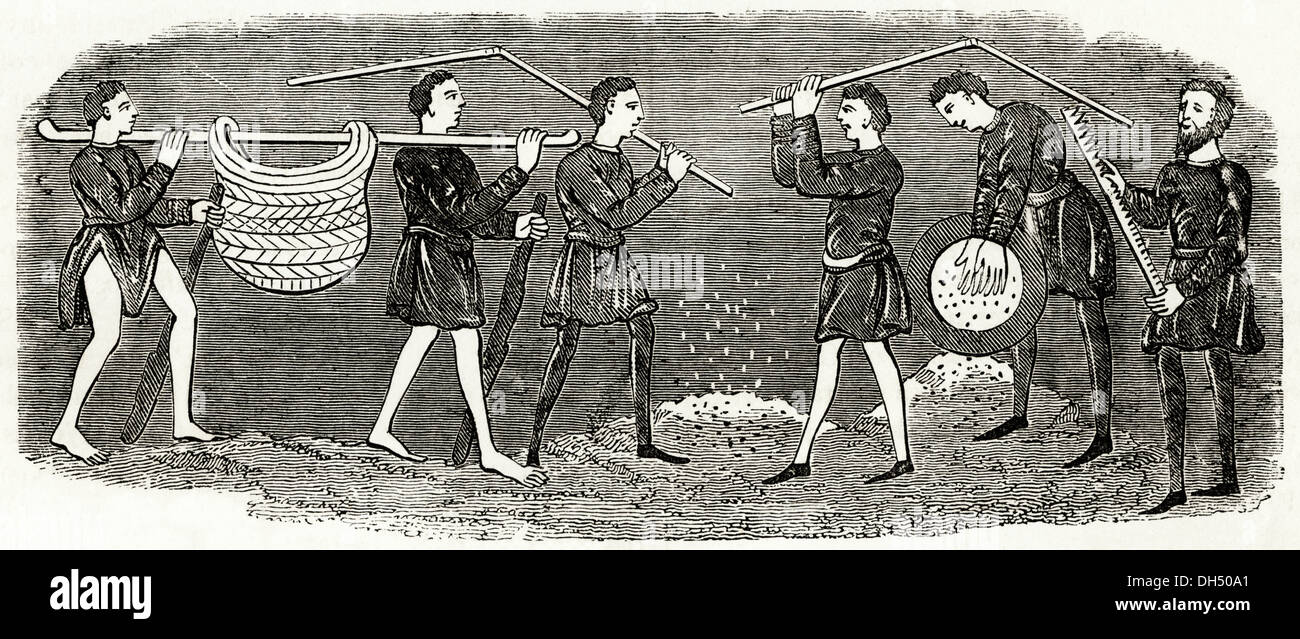 Anglo Saxon Britain. Daily life men threshing & winnowing corn in Anglo-Saxon Britain. Victorian woodcut circa 1845. Stock Photohttps://www.alamy.com/image-license-details/?v=1https://www.alamy.com/anglo-saxon-britain-daily-life-men-threshing-winnowing-corn-in-anglo-image62190297.html
Anglo Saxon Britain. Daily life men threshing & winnowing corn in Anglo-Saxon Britain. Victorian woodcut circa 1845. Stock Photohttps://www.alamy.com/image-license-details/?v=1https://www.alamy.com/anglo-saxon-britain-daily-life-men-threshing-winnowing-corn-in-anglo-image62190297.htmlRMDH50A1–Anglo Saxon Britain. Daily life men threshing & winnowing corn in Anglo-Saxon Britain. Victorian woodcut circa 1845.
 Flemish Rebellion, plate 7 from Historical Scenes from the Life of Emperor Maximilian I from the Triumphal Arch, 1515-17, printed c. 1520. Stock Photohttps://www.alamy.com/image-license-details/?v=1https://www.alamy.com/flemish-rebellion-plate-7-from-historical-scenes-from-the-life-of-emperor-maximilian-i-from-the-triumphal-arch-1515-17-printed-c-1520-image462412946.html
Flemish Rebellion, plate 7 from Historical Scenes from the Life of Emperor Maximilian I from the Triumphal Arch, 1515-17, printed c. 1520. Stock Photohttps://www.alamy.com/image-license-details/?v=1https://www.alamy.com/flemish-rebellion-plate-7-from-historical-scenes-from-the-life-of-emperor-maximilian-i-from-the-triumphal-arch-1515-17-printed-c-1520-image462412946.htmlRM2HT8MC2–Flemish Rebellion, plate 7 from Historical Scenes from the Life of Emperor Maximilian I from the Triumphal Arch, 1515-17, printed c. 1520.
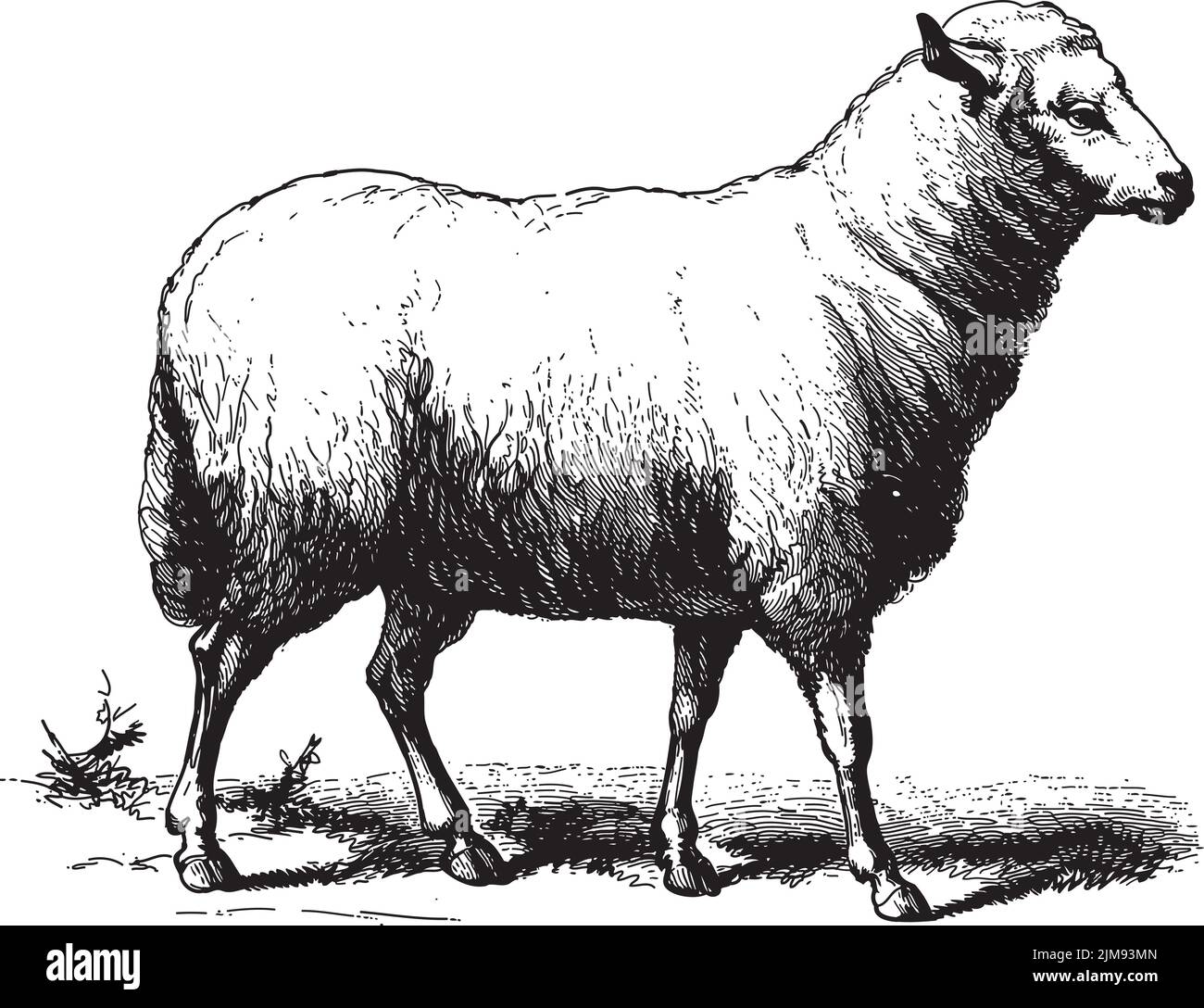 Sheep Stock Photohttps://www.alamy.com/image-license-details/?v=1https://www.alamy.com/sheep-image477173557.html
Sheep Stock Photohttps://www.alamy.com/image-license-details/?v=1https://www.alamy.com/sheep-image477173557.htmlRF2JM93MN–Sheep
 A cartoon of an Anglo Saxon famers harrowing and sowing seed in 8th Century England.(from the Bayeux Tapestry) Stock Photohttps://www.alamy.com/image-license-details/?v=1https://www.alamy.com/stock-image-a-cartoon-of-an-anglo-saxon-famers-harrowing-and-sowing-seed-in-8th-165453273.html
A cartoon of an Anglo Saxon famers harrowing and sowing seed in 8th Century England.(from the Bayeux Tapestry) Stock Photohttps://www.alamy.com/image-license-details/?v=1https://www.alamy.com/stock-image-a-cartoon-of-an-anglo-saxon-famers-harrowing-and-sowing-seed-in-8th-165453273.htmlRMKH519D–A cartoon of an Anglo Saxon famers harrowing and sowing seed in 8th Century England.(from the Bayeux Tapestry)
 Windmil in the field hand drawn vintage sketch. Engraving style vector illustration. Stock Vectorhttps://www.alamy.com/image-license-details/?v=1https://www.alamy.com/windmil-in-the-field-hand-drawn-vintage-sketch-engraving-style-vector-illustration-image565989813.html
Windmil in the field hand drawn vintage sketch. Engraving style vector illustration. Stock Vectorhttps://www.alamy.com/image-license-details/?v=1https://www.alamy.com/windmil-in-the-field-hand-drawn-vintage-sketch-engraving-style-vector-illustration-image565989813.htmlRF2RTR1NW–Windmil in the field hand drawn vintage sketch. Engraving style vector illustration.
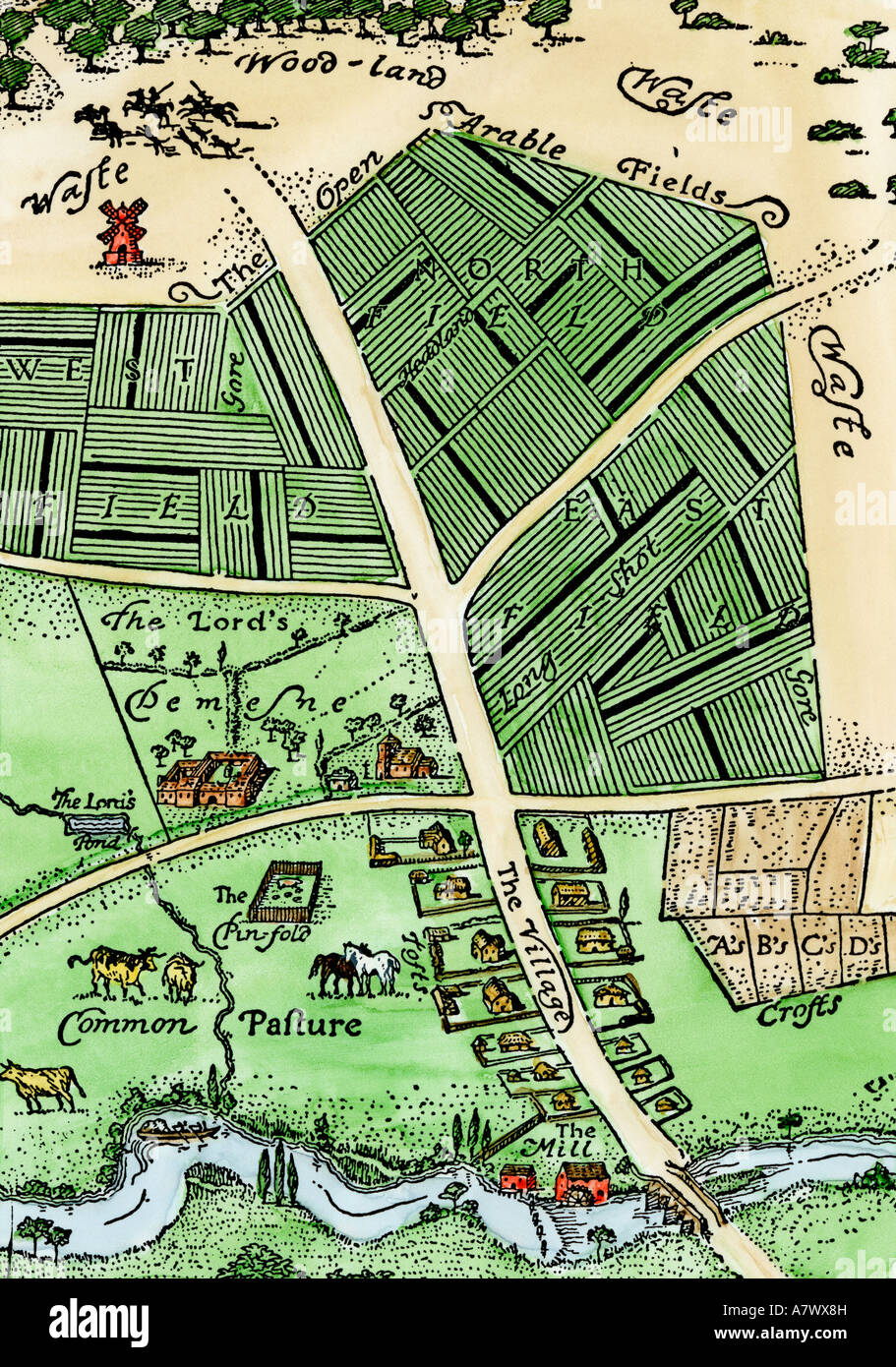 Arrangement of manor lands near a village in the Middle Ages. Hand-colored woodcut Stock Photohttps://www.alamy.com/image-license-details/?v=1https://www.alamy.com/stock-photo-arrangement-of-manor-lands-near-a-village-in-the-middle-ages-hand-11922496.html
Arrangement of manor lands near a village in the Middle Ages. Hand-colored woodcut Stock Photohttps://www.alamy.com/image-license-details/?v=1https://www.alamy.com/stock-photo-arrangement-of-manor-lands-near-a-village-in-the-middle-ages-hand-11922496.htmlRMA7WX8H–Arrangement of manor lands near a village in the Middle Ages. Hand-colored woodcut
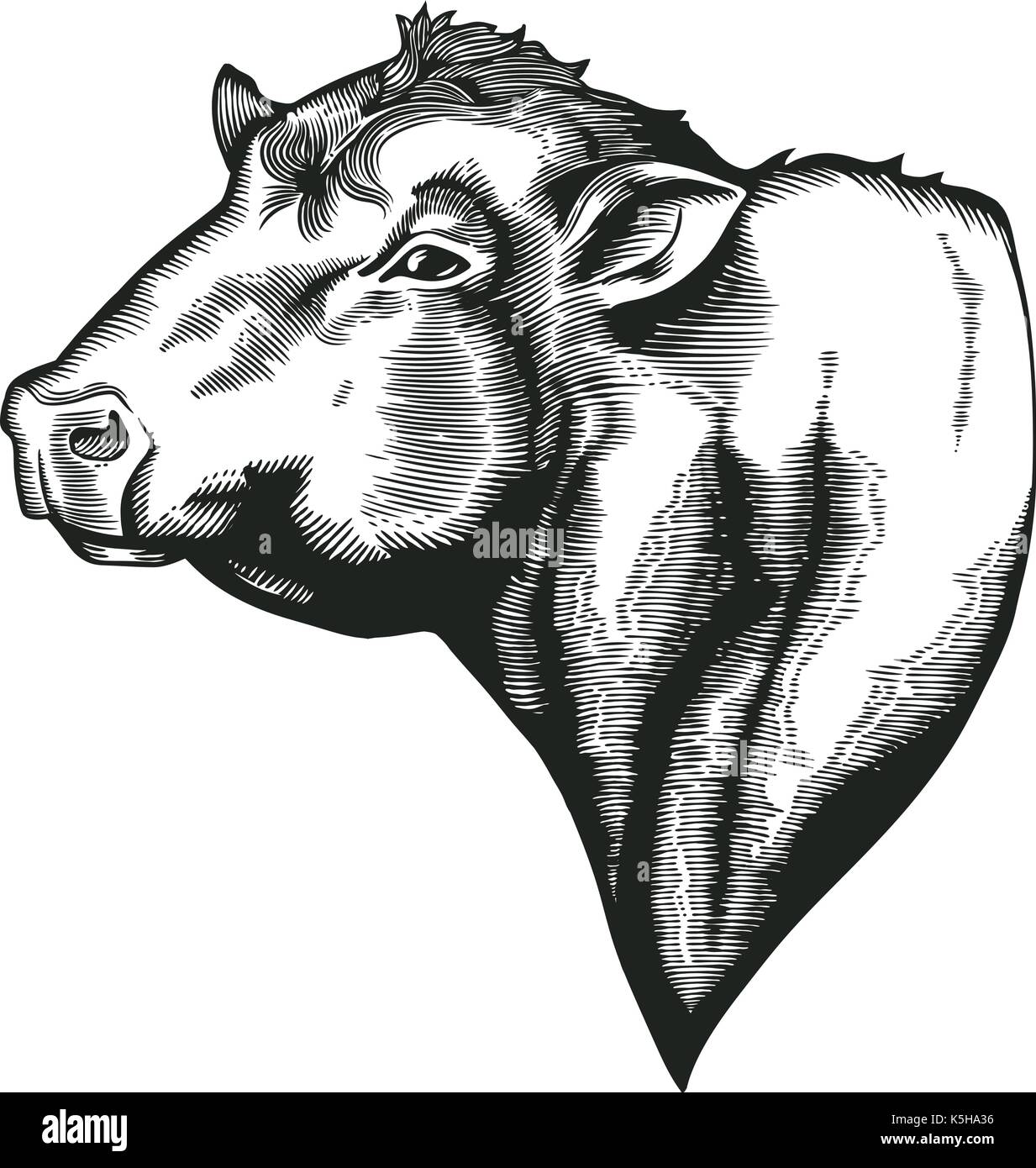 Head of bull of dangus breed drawn in vintage woodcut style. Farm animal isolated on white background. Vector illustration for agricultural market identity, products logo, advertisement Stock Vectorhttps://www.alamy.com/image-license-details/?v=1https://www.alamy.com/head-of-bull-of-dangus-breed-drawn-in-vintage-woodcut-style-farm-animal-image158347706.html
Head of bull of dangus breed drawn in vintage woodcut style. Farm animal isolated on white background. Vector illustration for agricultural market identity, products logo, advertisement Stock Vectorhttps://www.alamy.com/image-license-details/?v=1https://www.alamy.com/head-of-bull-of-dangus-breed-drawn-in-vintage-woodcut-style-farm-animal-image158347706.htmlRFK5HA36–Head of bull of dangus breed drawn in vintage woodcut style. Farm animal isolated on white background. Vector illustration for agricultural market identity, products logo, advertisement
RF2GFMW23–Medieval Building Map Icon Vintage Illustration
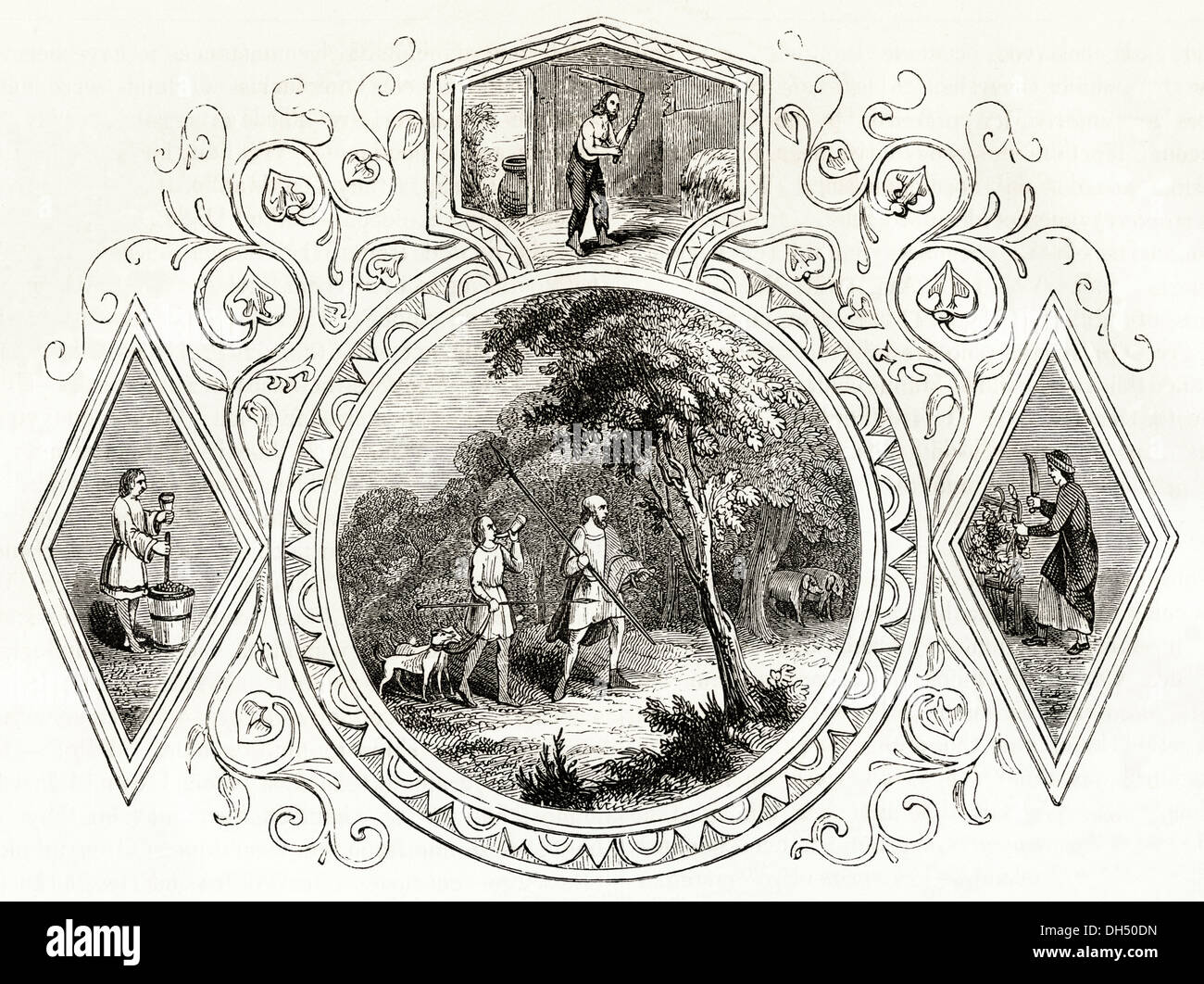 Anglo Saxon Britain. Daily life during September in Anglo-Saxon Britain. Victorian woodcut circa 1845. Stock Photohttps://www.alamy.com/image-license-details/?v=1https://www.alamy.com/anglo-saxon-britain-daily-life-during-september-in-anglo-saxon-britain-image62190401.html
Anglo Saxon Britain. Daily life during September in Anglo-Saxon Britain. Victorian woodcut circa 1845. Stock Photohttps://www.alamy.com/image-license-details/?v=1https://www.alamy.com/anglo-saxon-britain-daily-life-during-september-in-anglo-saxon-britain-image62190401.htmlRMDH50DN–Anglo Saxon Britain. Daily life during September in Anglo-Saxon Britain. Victorian woodcut circa 1845.
 A cartoon of an Anglo Saxon wheel plough in 8th Century England.(from the Bayeux Tapestry) Stock Photohttps://www.alamy.com/image-license-details/?v=1https://www.alamy.com/stock-image-a-cartoon-of-an-anglo-saxon-wheel-plough-in-8th-century-englandfrom-165453274.html
A cartoon of an Anglo Saxon wheel plough in 8th Century England.(from the Bayeux Tapestry) Stock Photohttps://www.alamy.com/image-license-details/?v=1https://www.alamy.com/stock-image-a-cartoon-of-an-anglo-saxon-wheel-plough-in-8th-century-englandfrom-165453274.htmlRMKH519E–A cartoon of an Anglo Saxon wheel plough in 8th Century England.(from the Bayeux Tapestry)
 Windmil in the field hand drawn vintage sketch. Engraving style vector illustration. Stock Vectorhttps://www.alamy.com/image-license-details/?v=1https://www.alamy.com/windmil-in-the-field-hand-drawn-vintage-sketch-engraving-style-vector-illustration-image565976799.html
Windmil in the field hand drawn vintage sketch. Engraving style vector illustration. Stock Vectorhttps://www.alamy.com/image-license-details/?v=1https://www.alamy.com/windmil-in-the-field-hand-drawn-vintage-sketch-engraving-style-vector-illustration-image565976799.htmlRF2RTPD53–Windmil in the field hand drawn vintage sketch. Engraving style vector illustration.
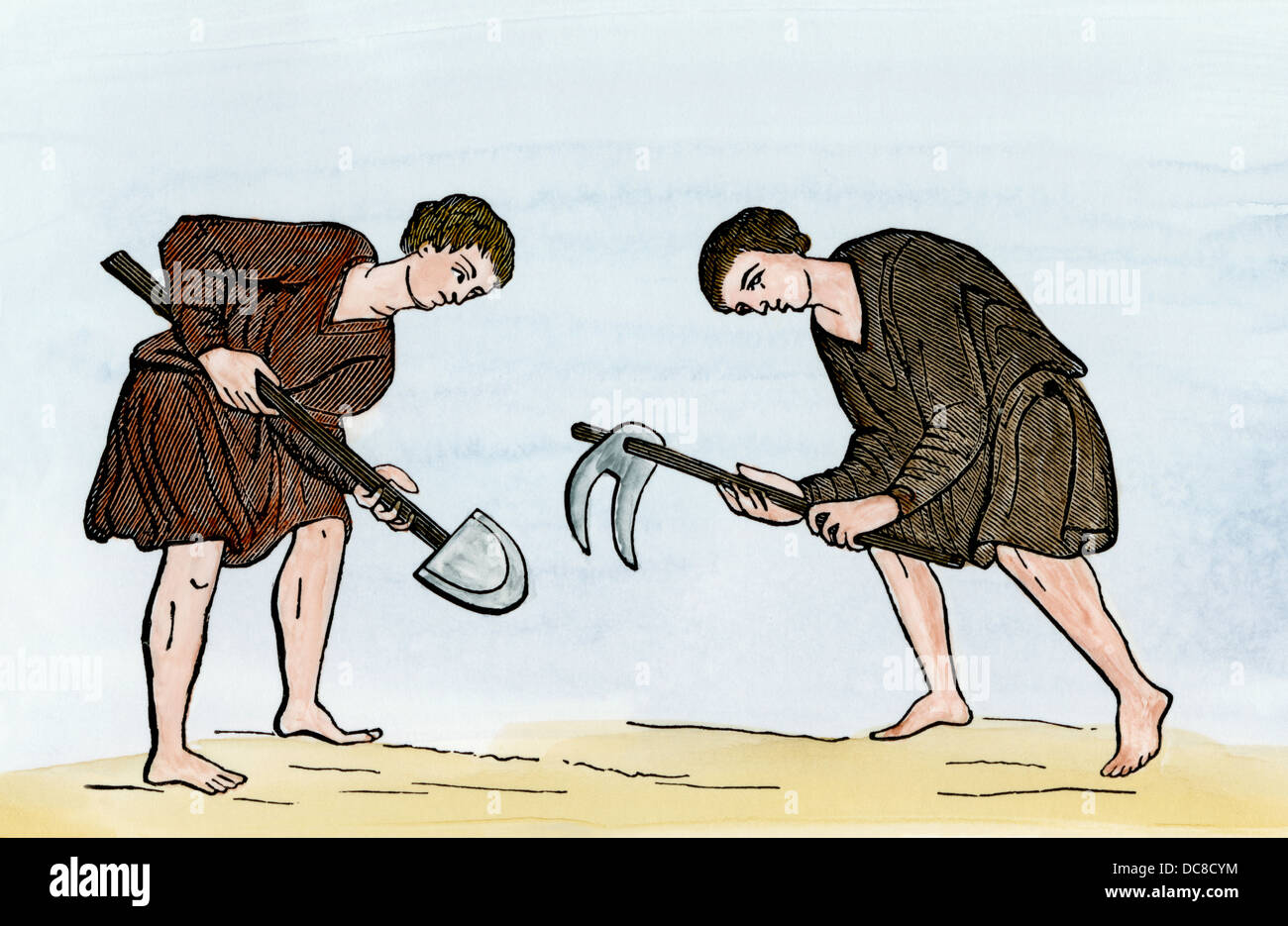 European serfs farming with a hoe and shovel, 1100s. Hand-colored woodcut Stock Photohttps://www.alamy.com/image-license-details/?v=1https://www.alamy.com/stock-photo-european-serfs-farming-with-a-hoe-and-shovel-1100s-hand-colored-woodcut-59192776.html
European serfs farming with a hoe and shovel, 1100s. Hand-colored woodcut Stock Photohttps://www.alamy.com/image-license-details/?v=1https://www.alamy.com/stock-photo-european-serfs-farming-with-a-hoe-and-shovel-1100s-hand-colored-woodcut-59192776.htmlRMDC8CYM–European serfs farming with a hoe and shovel, 1100s. Hand-colored woodcut
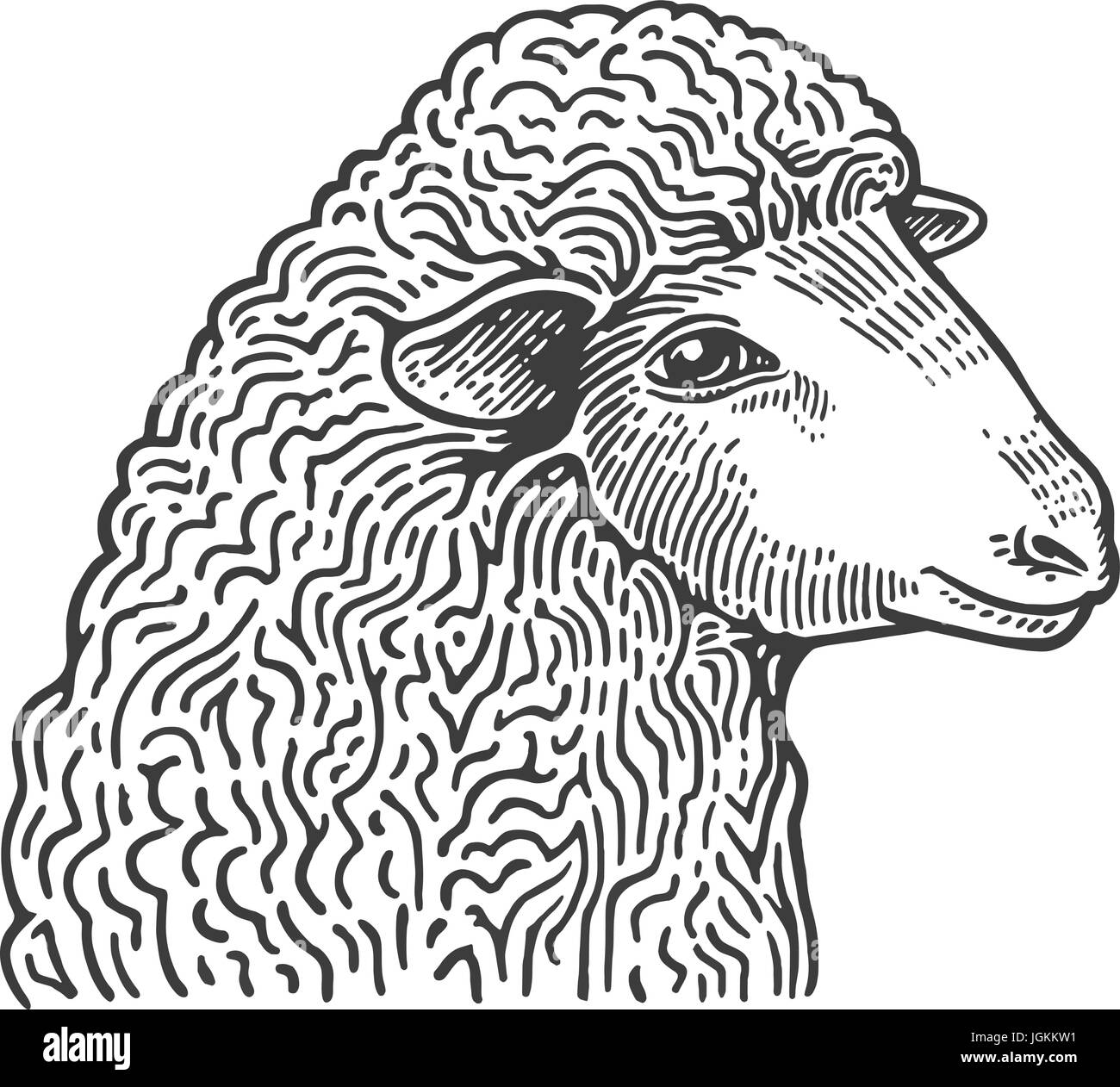 Head of sheep hand drawn in style of medieval engraving. Domestic farm animal isolated on white background. Vector illustration in monochrome colors for restaurant menu, butcher shop, website, logo. Stock Vectorhttps://www.alamy.com/image-license-details/?v=1https://www.alamy.com/stock-photo-head-of-sheep-hand-drawn-in-style-of-medieval-engraving-domestic-farm-147950125.html
Head of sheep hand drawn in style of medieval engraving. Domestic farm animal isolated on white background. Vector illustration in monochrome colors for restaurant menu, butcher shop, website, logo. Stock Vectorhttps://www.alamy.com/image-license-details/?v=1https://www.alamy.com/stock-photo-head-of-sheep-hand-drawn-in-style-of-medieval-engraving-domestic-farm-147950125.htmlRFJGKKW1–Head of sheep hand drawn in style of medieval engraving. Domestic farm animal isolated on white background. Vector illustration in monochrome colors for restaurant menu, butcher shop, website, logo.
RF2EAEHTY–Medieval Building Map Icon Vintage Illustration
 Anglo Saxon Britain. Daily life men harrowing & sowing corn in Anglo-Saxon Britain. Victorian woodcut circa 1845. Stock Photohttps://www.alamy.com/image-license-details/?v=1https://www.alamy.com/anglo-saxon-britain-daily-life-men-harrowing-sowing-corn-in-anglo-image62190333.html
Anglo Saxon Britain. Daily life men harrowing & sowing corn in Anglo-Saxon Britain. Victorian woodcut circa 1845. Stock Photohttps://www.alamy.com/image-license-details/?v=1https://www.alamy.com/anglo-saxon-britain-daily-life-men-harrowing-sowing-corn-in-anglo-image62190333.htmlRMDH50B9–Anglo Saxon Britain. Daily life men harrowing & sowing corn in Anglo-Saxon Britain. Victorian woodcut circa 1845.
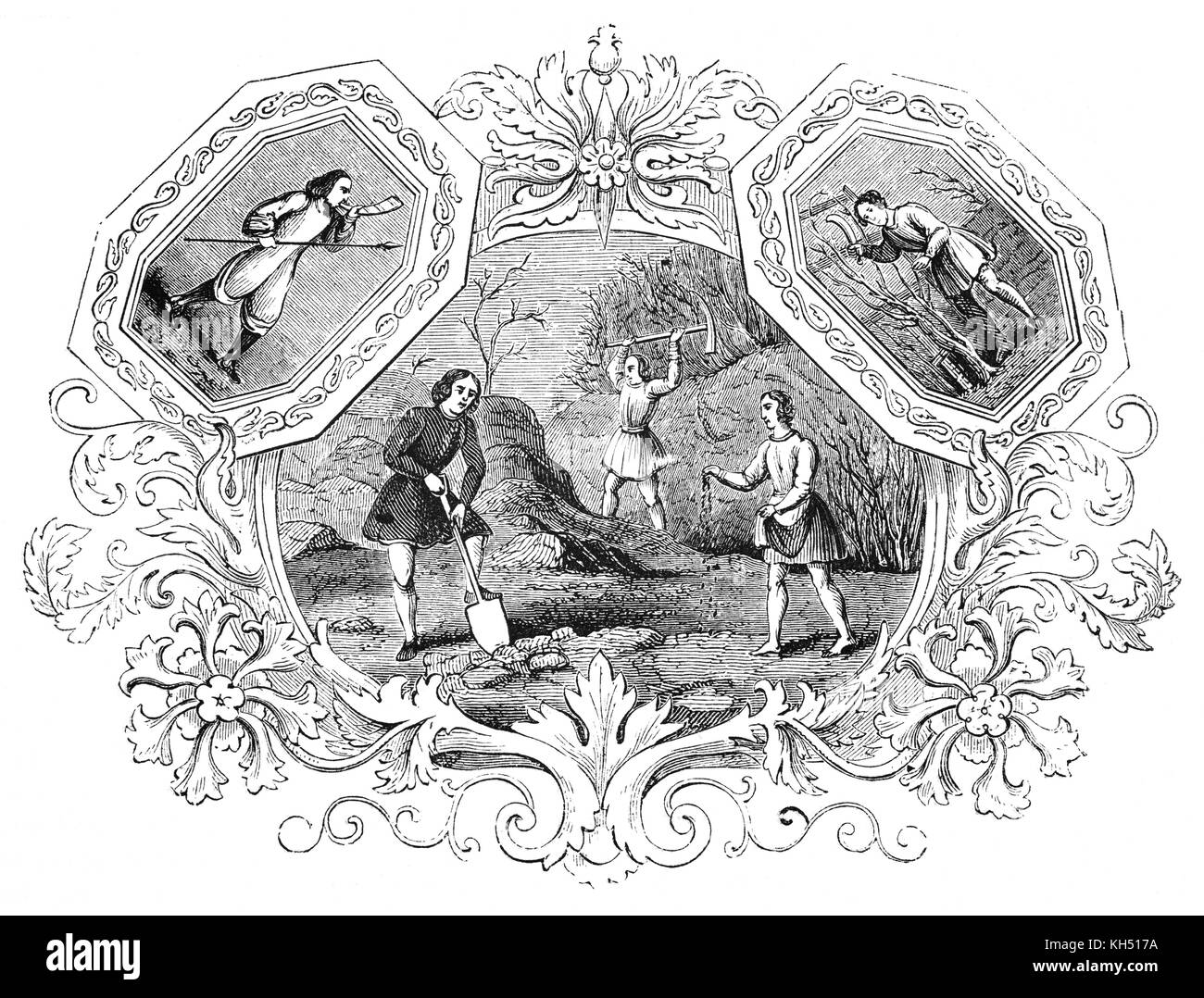 The Anglo-Saxon Invasion of England took place from the mid-fifth to early seventh centuries, following the end of Roman power in Britain around the year 410. The 'monthly' life of the times is illustrated in a series of pictures. The Anglo-Saxon Calendar 3/12: March aka Lenet-Month: from the lengthening of the day, and a word that went on to be used by early Christians for Lent. In the fields, they used spades and pick;axes to prepare the earth ready for seed planting, and pruned fruit in the garden. The left panel show an eel fisherman. Stock Photohttps://www.alamy.com/image-license-details/?v=1https://www.alamy.com/stock-image-the-anglo-saxon-invasion-of-england-took-place-from-the-mid-fifth-165453214.html
The Anglo-Saxon Invasion of England took place from the mid-fifth to early seventh centuries, following the end of Roman power in Britain around the year 410. The 'monthly' life of the times is illustrated in a series of pictures. The Anglo-Saxon Calendar 3/12: March aka Lenet-Month: from the lengthening of the day, and a word that went on to be used by early Christians for Lent. In the fields, they used spades and pick;axes to prepare the earth ready for seed planting, and pruned fruit in the garden. The left panel show an eel fisherman. Stock Photohttps://www.alamy.com/image-license-details/?v=1https://www.alamy.com/stock-image-the-anglo-saxon-invasion-of-england-took-place-from-the-mid-fifth-165453214.htmlRMKH517A–The Anglo-Saxon Invasion of England took place from the mid-fifth to early seventh centuries, following the end of Roman power in Britain around the year 410. The 'monthly' life of the times is illustrated in a series of pictures. The Anglo-Saxon Calendar 3/12: March aka Lenet-Month: from the lengthening of the day, and a word that went on to be used by early Christians for Lent. In the fields, they used spades and pick;axes to prepare the earth ready for seed planting, and pruned fruit in the garden. The left panel show an eel fisherman.
 Windmil in the field hand drawn vintage sketch. Engraving style vector illustration. Stock Vectorhttps://www.alamy.com/image-license-details/?v=1https://www.alamy.com/windmil-in-the-field-hand-drawn-vintage-sketch-engraving-style-vector-illustration-image565982201.html
Windmil in the field hand drawn vintage sketch. Engraving style vector illustration. Stock Vectorhttps://www.alamy.com/image-license-details/?v=1https://www.alamy.com/windmil-in-the-field-hand-drawn-vintage-sketch-engraving-style-vector-illustration-image565982201.htmlRF2RTPM21–Windmil in the field hand drawn vintage sketch. Engraving style vector illustration.
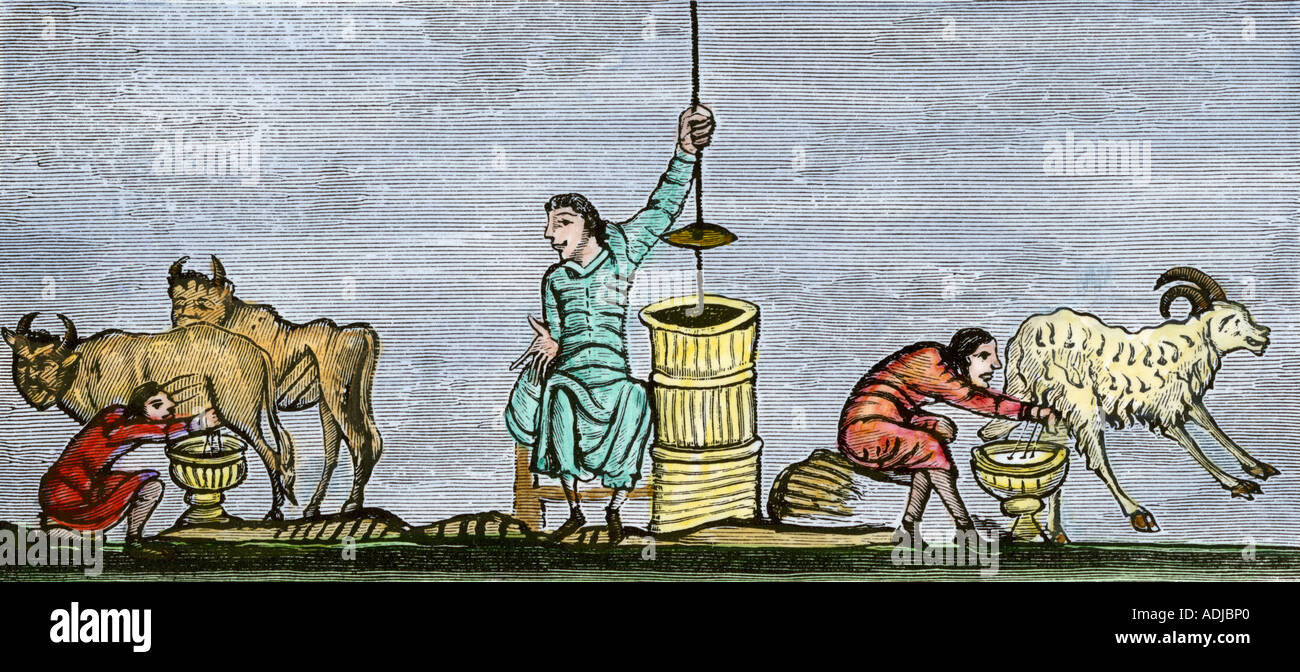 Milking cows and a goat and churning butter in the 12th century. Hand-colored woodcut Stock Photohttps://www.alamy.com/image-license-details/?v=1https://www.alamy.com/milking-cows-and-a-goat-and-churning-butter-in-the-12th-century-hand-image7675551.html
Milking cows and a goat and churning butter in the 12th century. Hand-colored woodcut Stock Photohttps://www.alamy.com/image-license-details/?v=1https://www.alamy.com/milking-cows-and-a-goat-and-churning-butter-in-the-12th-century-hand-image7675551.htmlRMADJBP0–Milking cows and a goat and churning butter in the 12th century. Hand-colored woodcut
 Head of sheep drawn in etching style. Farmed ruminant animal isolated on white background. Vector illustration for farm market identity, butchery and woolen products logo, advertisement, banner. Stock Vectorhttps://www.alamy.com/image-license-details/?v=1https://www.alamy.com/stock-photo-head-of-sheep-drawn-in-etching-style-farmed-ruminant-animal-isolated-149433693.html
Head of sheep drawn in etching style. Farmed ruminant animal isolated on white background. Vector illustration for farm market identity, butchery and woolen products logo, advertisement, banner. Stock Vectorhttps://www.alamy.com/image-license-details/?v=1https://www.alamy.com/stock-photo-head-of-sheep-drawn-in-etching-style-farmed-ruminant-animal-isolated-149433693.htmlRFJK385H–Head of sheep drawn in etching style. Farmed ruminant animal isolated on white background. Vector illustration for farm market identity, butchery and woolen products logo, advertisement, banner.
RF2HJ73J6–Medieval Building Map Icon Vintage Illustration
 Anglo Saxon Britain. Daily life during January in Anglo-Saxon Britain. Victorian woodcut circa 1845. Stock Photohttps://www.alamy.com/image-license-details/?v=1https://www.alamy.com/anglo-saxon-britain-daily-life-during-january-in-anglo-saxon-britain-image61954369.html
Anglo Saxon Britain. Daily life during January in Anglo-Saxon Britain. Victorian woodcut circa 1845. Stock Photohttps://www.alamy.com/image-license-details/?v=1https://www.alamy.com/anglo-saxon-britain-daily-life-during-january-in-anglo-saxon-britain-image61954369.htmlRMDGP7C1–Anglo Saxon Britain. Daily life during January in Anglo-Saxon Britain. Victorian woodcut circa 1845.
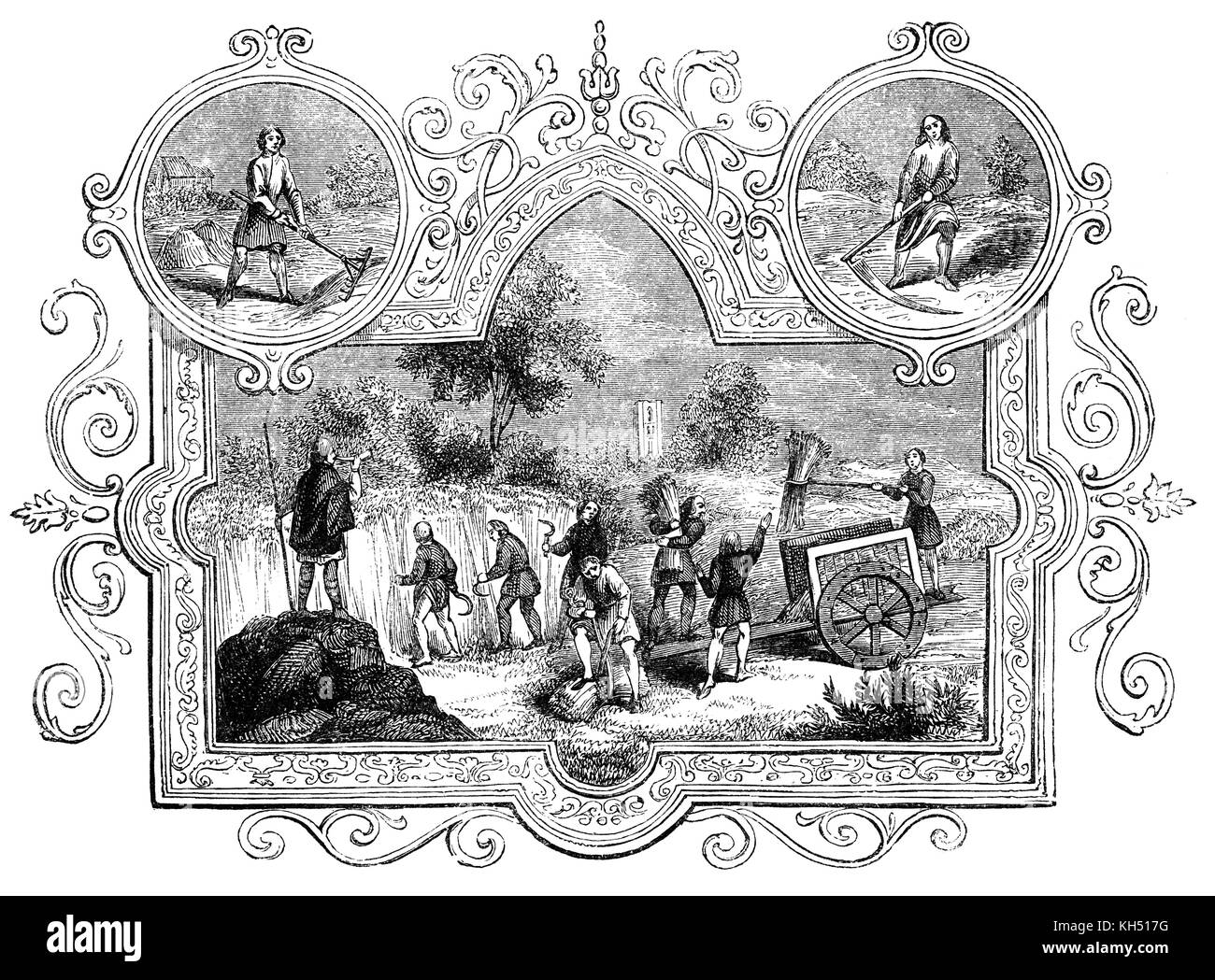 The Anglo-Saxon Invasion of England took place from the mid-fifth to early seventh centuries, following the end of Roman power in Britain around the year 410. The 'monthly' life of the times is illustrated in a series of pictures. The Anglo-Saxon Calendar 7/12: July aka Hey-monat: was the month for gathering in the hay. The fam workers used scythes, sickles and rakes to gather the crop for use as thatch, animal fodder and carpeting the floor. Stock Photohttps://www.alamy.com/image-license-details/?v=1https://www.alamy.com/stock-image-the-anglo-saxon-invasion-of-england-took-place-from-the-mid-fifth-165453220.html
The Anglo-Saxon Invasion of England took place from the mid-fifth to early seventh centuries, following the end of Roman power in Britain around the year 410. The 'monthly' life of the times is illustrated in a series of pictures. The Anglo-Saxon Calendar 7/12: July aka Hey-monat: was the month for gathering in the hay. The fam workers used scythes, sickles and rakes to gather the crop for use as thatch, animal fodder and carpeting the floor. Stock Photohttps://www.alamy.com/image-license-details/?v=1https://www.alamy.com/stock-image-the-anglo-saxon-invasion-of-england-took-place-from-the-mid-fifth-165453220.htmlRMKH517G–The Anglo-Saxon Invasion of England took place from the mid-fifth to early seventh centuries, following the end of Roman power in Britain around the year 410. The 'monthly' life of the times is illustrated in a series of pictures. The Anglo-Saxon Calendar 7/12: July aka Hey-monat: was the month for gathering in the hay. The fam workers used scythes, sickles and rakes to gather the crop for use as thatch, animal fodder and carpeting the floor.
 Windmil in the field hand drawn vintage sketch. Engraving style vector illustration. Stock Vectorhttps://www.alamy.com/image-license-details/?v=1https://www.alamy.com/windmil-in-the-field-hand-drawn-vintage-sketch-engraving-style-vector-illustration-image565991021.html
Windmil in the field hand drawn vintage sketch. Engraving style vector illustration. Stock Vectorhttps://www.alamy.com/image-license-details/?v=1https://www.alamy.com/windmil-in-the-field-hand-drawn-vintage-sketch-engraving-style-vector-illustration-image565991021.htmlRF2RTR391–Windmil in the field hand drawn vintage sketch. Engraving style vector illustration.
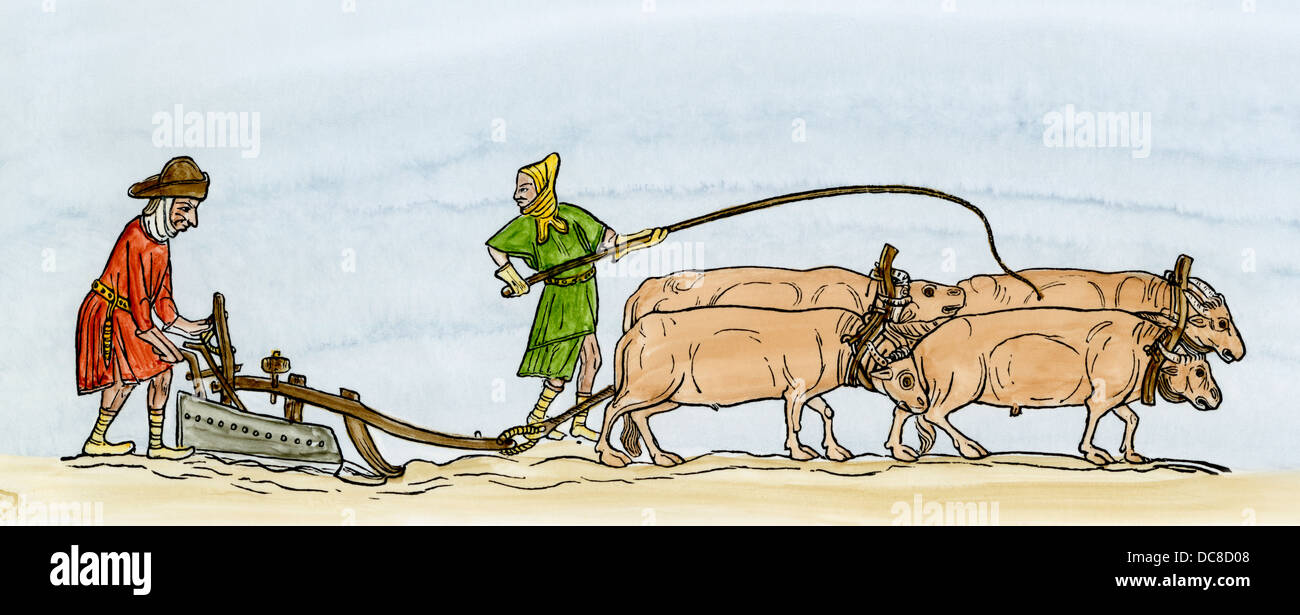 European peasants using oxen to plow a field, circa 1340. Hand-colored woodcut Stock Photohttps://www.alamy.com/image-license-details/?v=1https://www.alamy.com/stock-photo-european-peasants-using-oxen-to-plow-a-field-circa-1340-hand-colored-59192792.html
European peasants using oxen to plow a field, circa 1340. Hand-colored woodcut Stock Photohttps://www.alamy.com/image-license-details/?v=1https://www.alamy.com/stock-photo-european-peasants-using-oxen-to-plow-a-field-circa-1340-hand-colored-59192792.htmlRMDC8D08–European peasants using oxen to plow a field, circa 1340. Hand-colored woodcut
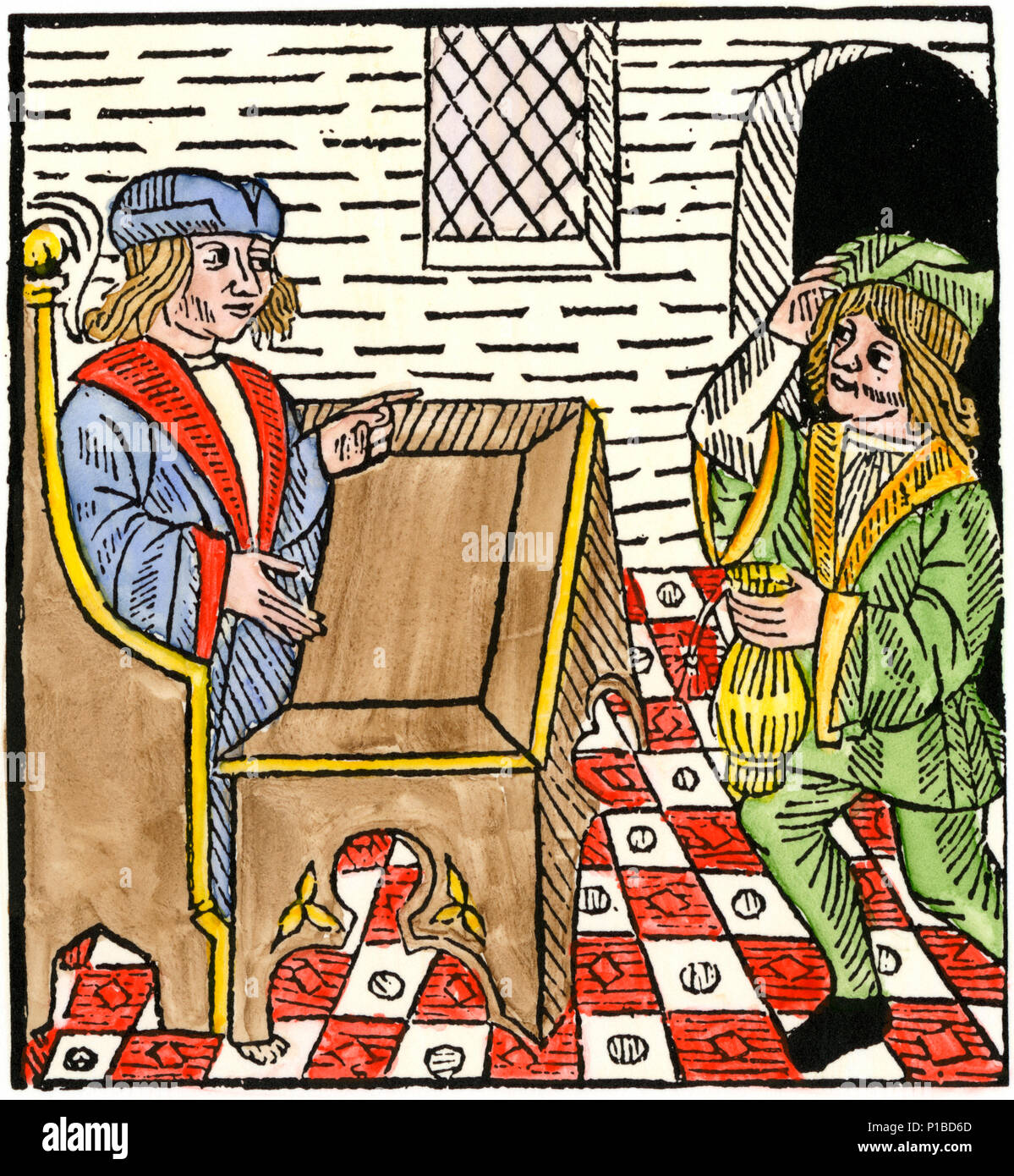 Tenant paying rent, from a book of surveying printed in England, 1523. Hand-colored woodcut Stock Photohttps://www.alamy.com/image-license-details/?v=1https://www.alamy.com/tenant-paying-rent-from-a-book-of-surveying-printed-in-england-1523-hand-colored-woodcut-image207390917.html
Tenant paying rent, from a book of surveying printed in England, 1523. Hand-colored woodcut Stock Photohttps://www.alamy.com/image-license-details/?v=1https://www.alamy.com/tenant-paying-rent-from-a-book-of-surveying-printed-in-england-1523-hand-colored-woodcut-image207390917.htmlRMP1BD6D–Tenant paying rent, from a book of surveying printed in England, 1523. Hand-colored woodcut
 Head of ram hand drawn in antique etching style. Livestock animal isolated on white background. Vector illustration in monochrome colors for butchery logotype, farm products advertisement, banner. Stock Vectorhttps://www.alamy.com/image-license-details/?v=1https://www.alamy.com/stock-photo-head-of-ram-hand-drawn-in-antique-etching-style-livestock-animal-isolated-149433669.html
Head of ram hand drawn in antique etching style. Livestock animal isolated on white background. Vector illustration in monochrome colors for butchery logotype, farm products advertisement, banner. Stock Vectorhttps://www.alamy.com/image-license-details/?v=1https://www.alamy.com/stock-photo-head-of-ram-hand-drawn-in-antique-etching-style-livestock-animal-isolated-149433669.htmlRFJK384N–Head of ram hand drawn in antique etching style. Livestock animal isolated on white background. Vector illustration in monochrome colors for butchery logotype, farm products advertisement, banner.
RF2GNER3R–Medieval Building Map Icon Vintage Illustration
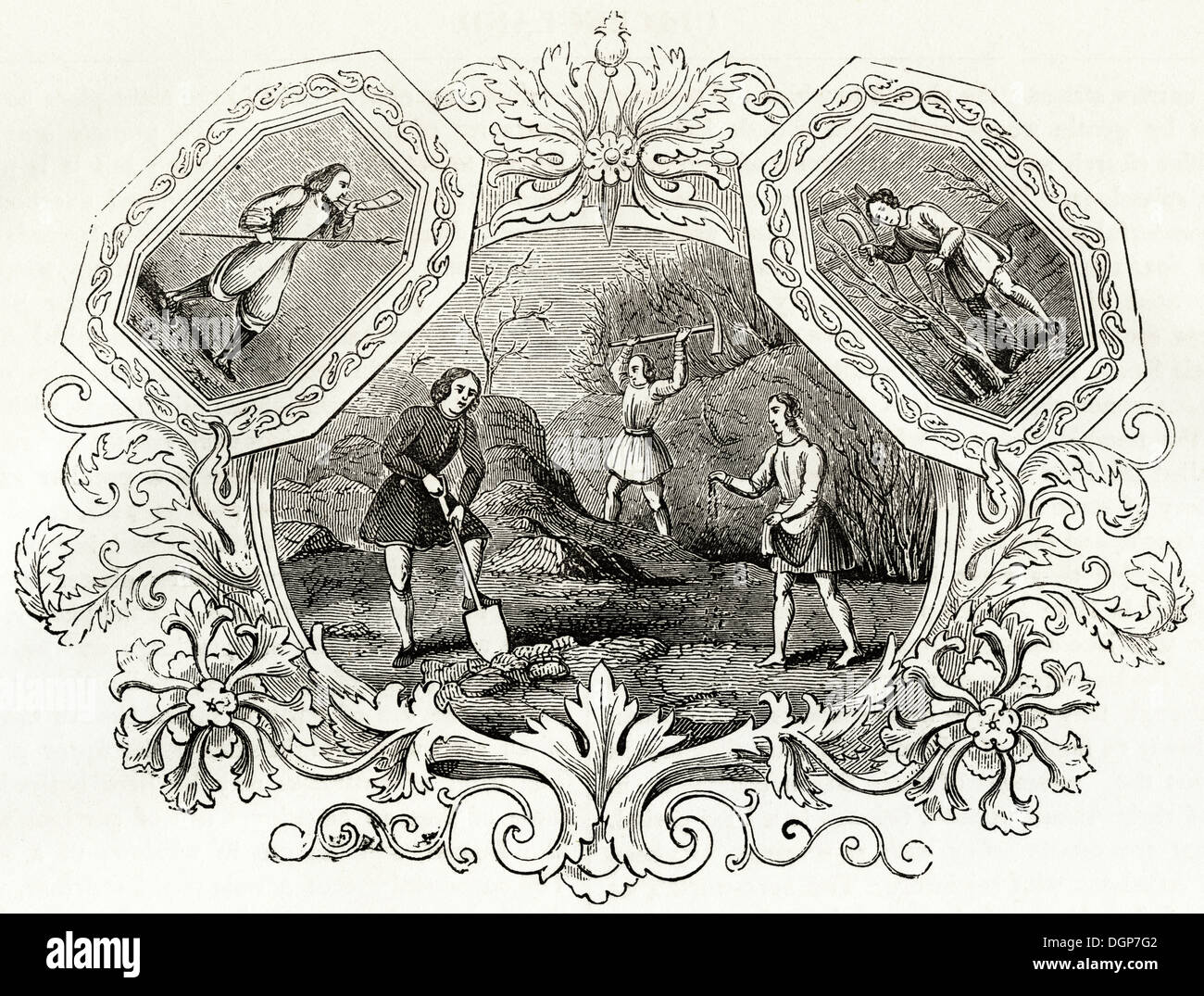 Anglo Saxon Britain. Daily life during March in Anglo-Saxon Britain. Victorian woodcut circa 1845. Stock Photohttps://www.alamy.com/image-license-details/?v=1https://www.alamy.com/anglo-saxon-britain-daily-life-during-march-in-anglo-saxon-britain-image61954482.html
Anglo Saxon Britain. Daily life during March in Anglo-Saxon Britain. Victorian woodcut circa 1845. Stock Photohttps://www.alamy.com/image-license-details/?v=1https://www.alamy.com/anglo-saxon-britain-daily-life-during-march-in-anglo-saxon-britain-image61954482.htmlRMDGP7G2–Anglo Saxon Britain. Daily life during March in Anglo-Saxon Britain. Victorian woodcut circa 1845.
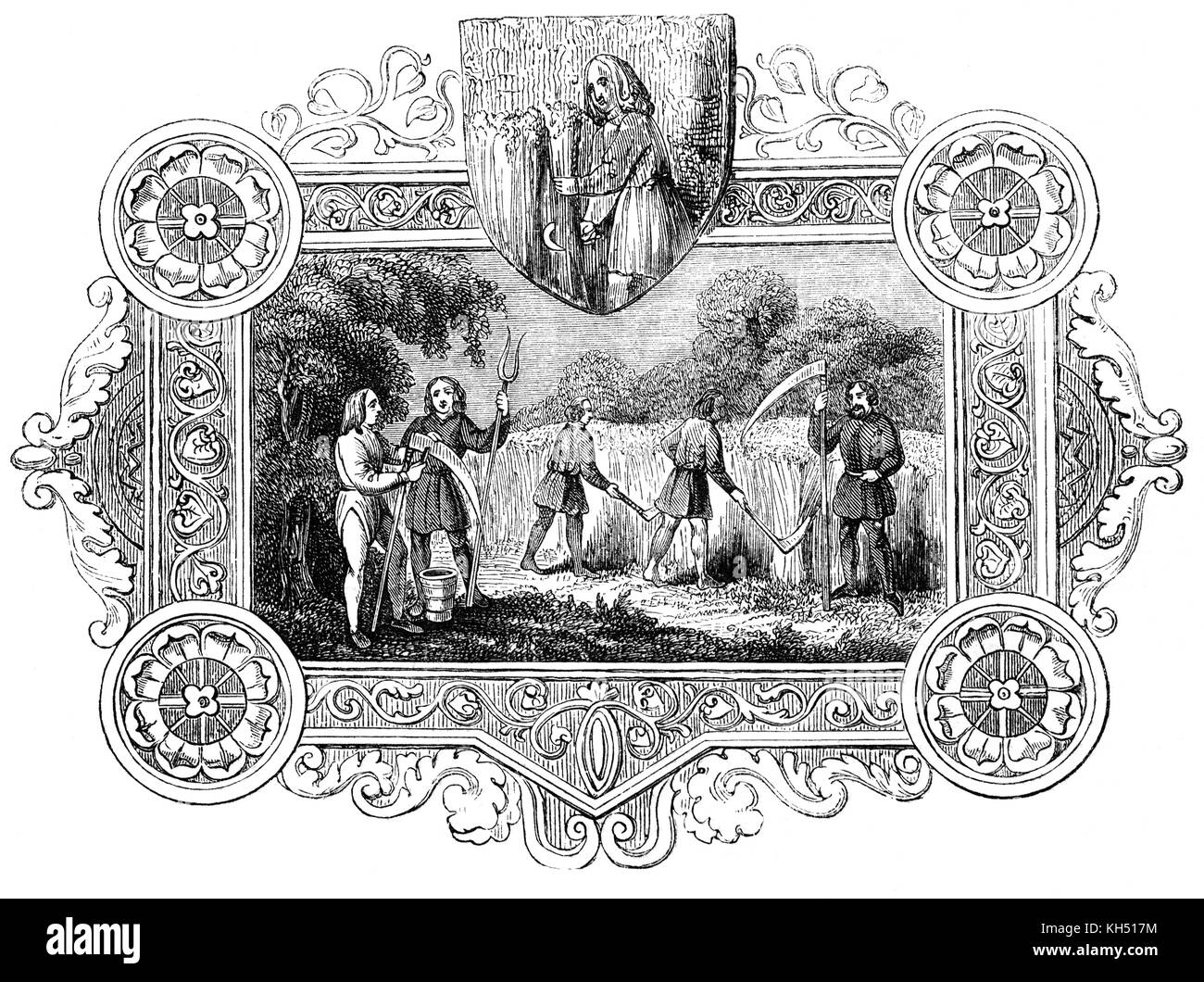 The Anglo-Saxon Invasion of England took place from the mid-fifth to early seventh centuries, following the end of Roman power in Britain around the year 410. The 'monthly' life of the times is illustrated in a series of pictures. The Anglo-Saxon Calendar 8/12: August aka Arn-monat or Barn-monat: in which the corn was gathered for storage in barns. The illustration shows scythes for cutting and a pitch-fork for collecting the crop. In the event of a crop failure the resorted to colewort and pulses. Stock Photohttps://www.alamy.com/image-license-details/?v=1https://www.alamy.com/stock-image-the-anglo-saxon-invasion-of-england-took-place-from-the-mid-fifth-165453224.html
The Anglo-Saxon Invasion of England took place from the mid-fifth to early seventh centuries, following the end of Roman power in Britain around the year 410. The 'monthly' life of the times is illustrated in a series of pictures. The Anglo-Saxon Calendar 8/12: August aka Arn-monat or Barn-monat: in which the corn was gathered for storage in barns. The illustration shows scythes for cutting and a pitch-fork for collecting the crop. In the event of a crop failure the resorted to colewort and pulses. Stock Photohttps://www.alamy.com/image-license-details/?v=1https://www.alamy.com/stock-image-the-anglo-saxon-invasion-of-england-took-place-from-the-mid-fifth-165453224.htmlRMKH517M–The Anglo-Saxon Invasion of England took place from the mid-fifth to early seventh centuries, following the end of Roman power in Britain around the year 410. The 'monthly' life of the times is illustrated in a series of pictures. The Anglo-Saxon Calendar 8/12: August aka Arn-monat or Barn-monat: in which the corn was gathered for storage in barns. The illustration shows scythes for cutting and a pitch-fork for collecting the crop. In the event of a crop failure the resorted to colewort and pulses.
 Head of ram hand drawn in antique etching style. Livestock animal isolated on white background. Vector illustration in monochrome colors for butchery logotype, farm products advertisement, banner. Stock Vectorhttps://www.alamy.com/image-license-details/?v=1https://www.alamy.com/stock-photo-head-of-ram-hand-drawn-in-antique-etching-style-livestock-animal-isolated-147950138.html
Head of ram hand drawn in antique etching style. Livestock animal isolated on white background. Vector illustration in monochrome colors for butchery logotype, farm products advertisement, banner. Stock Vectorhttps://www.alamy.com/image-license-details/?v=1https://www.alamy.com/stock-photo-head-of-ram-hand-drawn-in-antique-etching-style-livestock-animal-isolated-147950138.htmlRFJGKKWE–Head of ram hand drawn in antique etching style. Livestock animal isolated on white background. Vector illustration in monochrome colors for butchery logotype, farm products advertisement, banner.
RF2EA271J–Medieval Building Map Icon Vintage Illustration
 Anglo Saxon Britain. Daily life during May in Anglo-Saxon Britain. Victorian woodcut circa 1845. Stock Photohttps://www.alamy.com/image-license-details/?v=1https://www.alamy.com/anglo-saxon-britain-daily-life-during-may-in-anglo-saxon-britain-victorian-image62190139.html
Anglo Saxon Britain. Daily life during May in Anglo-Saxon Britain. Victorian woodcut circa 1845. Stock Photohttps://www.alamy.com/image-license-details/?v=1https://www.alamy.com/anglo-saxon-britain-daily-life-during-may-in-anglo-saxon-britain-victorian-image62190139.htmlRMDH504B–Anglo Saxon Britain. Daily life during May in Anglo-Saxon Britain. Victorian woodcut circa 1845.
 The Anglo-Saxon Invasion of England took place from the mid-fifth to early seventh centuries, following the end of Roman power in Britain around the year 410. The 'monthly' life of the times is illustrated in a series of pictures. The Anglo-Saxon Calendar 12/12: December aka Winter-monat; later it was also known as Heligh-monat or Holy Month: The illustrations show a woodman bring home wood and the jolly yeoman drinking wine from a horn. The mail picture shows the farm workers winnowing the corn whilst a farmer notches a stick to count the number baskets of corn are borne to his granary. Stock Photohttps://www.alamy.com/image-license-details/?v=1https://www.alamy.com/stock-image-the-anglo-saxon-invasion-of-england-took-place-from-the-mid-fifth-165453231.html
The Anglo-Saxon Invasion of England took place from the mid-fifth to early seventh centuries, following the end of Roman power in Britain around the year 410. The 'monthly' life of the times is illustrated in a series of pictures. The Anglo-Saxon Calendar 12/12: December aka Winter-monat; later it was also known as Heligh-monat or Holy Month: The illustrations show a woodman bring home wood and the jolly yeoman drinking wine from a horn. The mail picture shows the farm workers winnowing the corn whilst a farmer notches a stick to count the number baskets of corn are borne to his granary. Stock Photohttps://www.alamy.com/image-license-details/?v=1https://www.alamy.com/stock-image-the-anglo-saxon-invasion-of-england-took-place-from-the-mid-fifth-165453231.htmlRMKH517Y–The Anglo-Saxon Invasion of England took place from the mid-fifth to early seventh centuries, following the end of Roman power in Britain around the year 410. The 'monthly' life of the times is illustrated in a series of pictures. The Anglo-Saxon Calendar 12/12: December aka Winter-monat; later it was also known as Heligh-monat or Holy Month: The illustrations show a woodman bring home wood and the jolly yeoman drinking wine from a horn. The mail picture shows the farm workers winnowing the corn whilst a farmer notches a stick to count the number baskets of corn are borne to his granary.
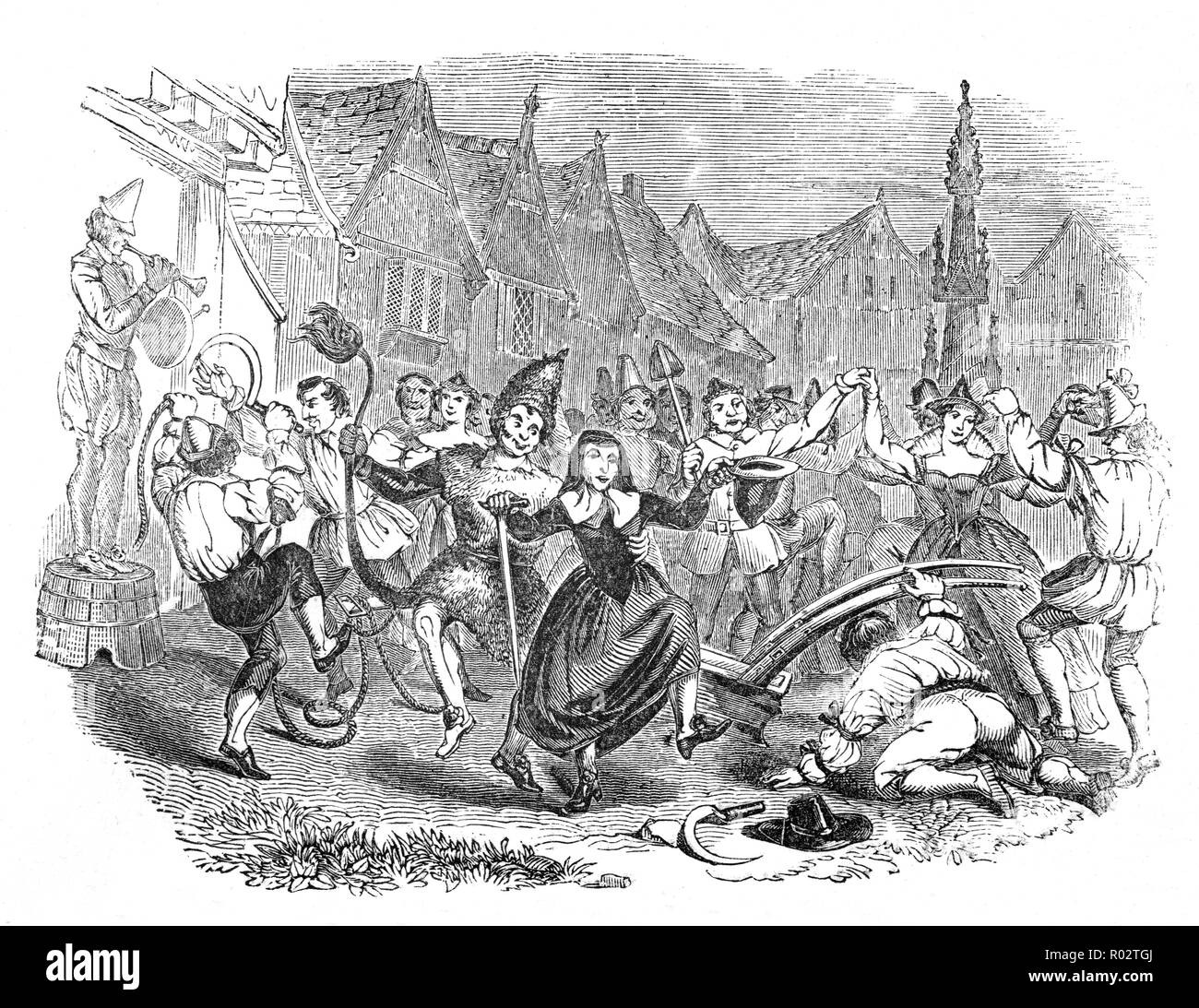 The old English festival, Plough Monday was the first Monday after 6th January and was the day on which things would return to normal after the Twelve Days of Christmas as people returned to work. On the first day of the new agricultural year, thirty or forty men, stripped to their clean white shirts, decorated with gay-coloured ribbons tied in large knots and bows, drag along a plough. They are usually accompanied by an old woman, a boy or a humorous countryman to represent a fool who carries a box to collect money from the spectators. They are accompanied by musicians and Morris-dancers. Stock Photohttps://www.alamy.com/image-license-details/?v=1https://www.alamy.com/the-old-english-festival-plough-monday-was-the-first-monday-after-6th-january-and-was-the-day-on-which-things-would-return-to-normal-after-the-twelve-days-of-christmas-as-people-returned-to-work-on-the-first-day-of-the-new-agricultural-year-thirty-or-forty-men-stripped-to-their-clean-white-shirts-decorated-with-gay-coloured-ribbons-tied-in-large-knots-and-bows-drag-along-a-plough-they-are-usually-accompanied-by-an-old-woman-a-boy-or-a-humorous-countryman-to-represent-a-fool-who-carries-a-box-to-collect-money-from-the-spectators-they-are-accompanied-by-musicians-and-morris-dancers-image223797970.html
The old English festival, Plough Monday was the first Monday after 6th January and was the day on which things would return to normal after the Twelve Days of Christmas as people returned to work. On the first day of the new agricultural year, thirty or forty men, stripped to their clean white shirts, decorated with gay-coloured ribbons tied in large knots and bows, drag along a plough. They are usually accompanied by an old woman, a boy or a humorous countryman to represent a fool who carries a box to collect money from the spectators. They are accompanied by musicians and Morris-dancers. Stock Photohttps://www.alamy.com/image-license-details/?v=1https://www.alamy.com/the-old-english-festival-plough-monday-was-the-first-monday-after-6th-january-and-was-the-day-on-which-things-would-return-to-normal-after-the-twelve-days-of-christmas-as-people-returned-to-work-on-the-first-day-of-the-new-agricultural-year-thirty-or-forty-men-stripped-to-their-clean-white-shirts-decorated-with-gay-coloured-ribbons-tied-in-large-knots-and-bows-drag-along-a-plough-they-are-usually-accompanied-by-an-old-woman-a-boy-or-a-humorous-countryman-to-represent-a-fool-who-carries-a-box-to-collect-money-from-the-spectators-they-are-accompanied-by-musicians-and-morris-dancers-image223797970.htmlRMR02TGJ–The old English festival, Plough Monday was the first Monday after 6th January and was the day on which things would return to normal after the Twelve Days of Christmas as people returned to work. On the first day of the new agricultural year, thirty or forty men, stripped to their clean white shirts, decorated with gay-coloured ribbons tied in large knots and bows, drag along a plough. They are usually accompanied by an old woman, a boy or a humorous countryman to represent a fool who carries a box to collect money from the spectators. They are accompanied by musicians and Morris-dancers.
 The Anglo-Saxon Invasion of England took place from the mid-fifth to early seventh centuries, following the end of Roman power in Britain around the year 410. The 'monthly' life of the times is illustrated in a series of pictures. The Anglo-Saxon Calendar 4/12: April aka Oster-Month: In which the main illustration shows a nobleman entertaining in style, whilst the farmworkers continue their work in the fields Stock Photohttps://www.alamy.com/image-license-details/?v=1https://www.alamy.com/stock-image-the-anglo-saxon-invasion-of-england-took-place-from-the-mid-fifth-165453215.html
The Anglo-Saxon Invasion of England took place from the mid-fifth to early seventh centuries, following the end of Roman power in Britain around the year 410. The 'monthly' life of the times is illustrated in a series of pictures. The Anglo-Saxon Calendar 4/12: April aka Oster-Month: In which the main illustration shows a nobleman entertaining in style, whilst the farmworkers continue their work in the fields Stock Photohttps://www.alamy.com/image-license-details/?v=1https://www.alamy.com/stock-image-the-anglo-saxon-invasion-of-england-took-place-from-the-mid-fifth-165453215.htmlRMKH517B–The Anglo-Saxon Invasion of England took place from the mid-fifth to early seventh centuries, following the end of Roman power in Britain around the year 410. The 'monthly' life of the times is illustrated in a series of pictures. The Anglo-Saxon Calendar 4/12: April aka Oster-Month: In which the main illustration shows a nobleman entertaining in style, whilst the farmworkers continue their work in the fields
RF2J16FE5–Medieval Building Map Icon Vintage Illustration
 Beets Beetroot Vegetable Woodcut Illustration Stock Vectorhttps://www.alamy.com/image-license-details/?v=1https://www.alamy.com/beets-beetroot-vegetable-woodcut-illustration-image439355617.html
Beets Beetroot Vegetable Woodcut Illustration Stock Vectorhttps://www.alamy.com/image-license-details/?v=1https://www.alamy.com/beets-beetroot-vegetable-woodcut-illustration-image439355617.htmlRF2GEPAG1–Beets Beetroot Vegetable Woodcut Illustration
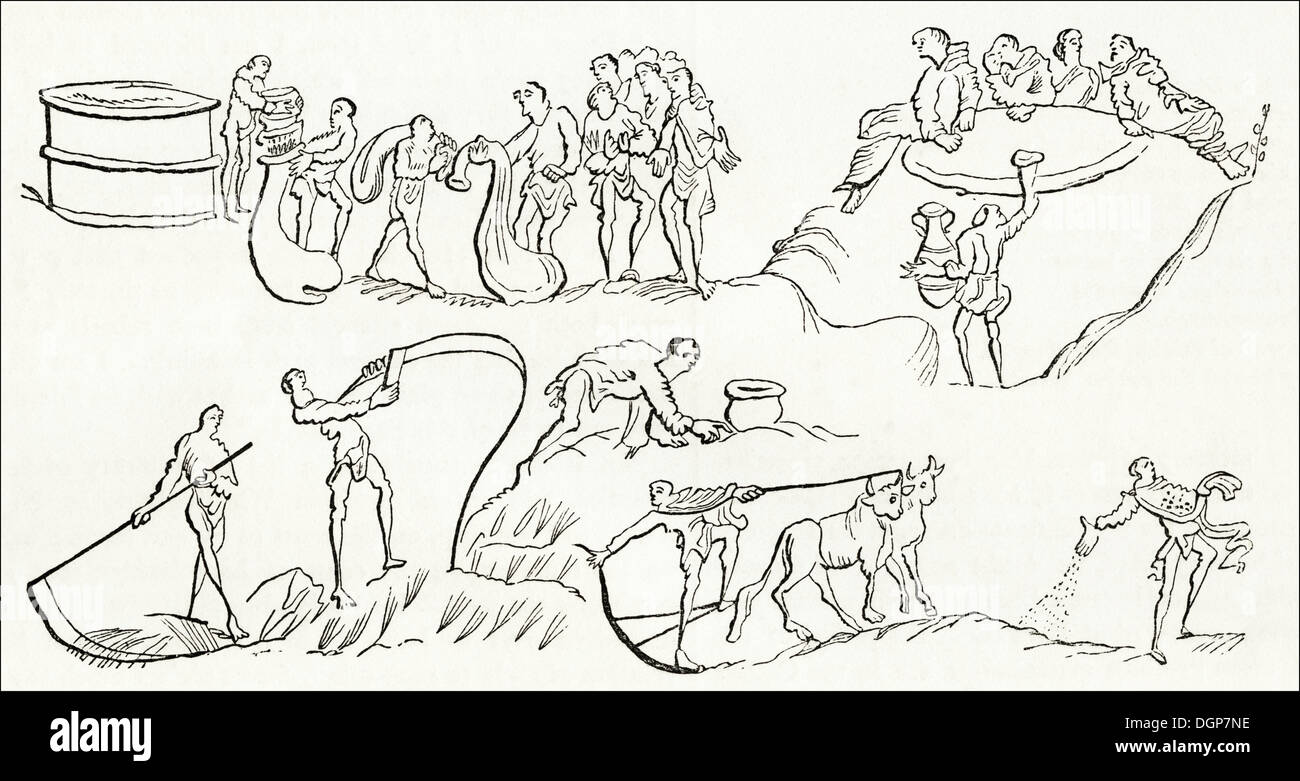 Anglo Saxon Britain. Daily life, ploughing, sowing, mowing, gleaning, measuring corn & Harvest Supper in Anglo-Saxon Britain. Victorian woodcut circa 1845. Stock Photohttps://www.alamy.com/image-license-details/?v=1https://www.alamy.com/anglo-saxon-britain-daily-life-ploughing-sowing-mowing-gleaning-measuring-image61954634.html
Anglo Saxon Britain. Daily life, ploughing, sowing, mowing, gleaning, measuring corn & Harvest Supper in Anglo-Saxon Britain. Victorian woodcut circa 1845. Stock Photohttps://www.alamy.com/image-license-details/?v=1https://www.alamy.com/anglo-saxon-britain-daily-life-ploughing-sowing-mowing-gleaning-measuring-image61954634.htmlRMDGP7NE–Anglo Saxon Britain. Daily life, ploughing, sowing, mowing, gleaning, measuring corn & Harvest Supper in Anglo-Saxon Britain. Victorian woodcut circa 1845.
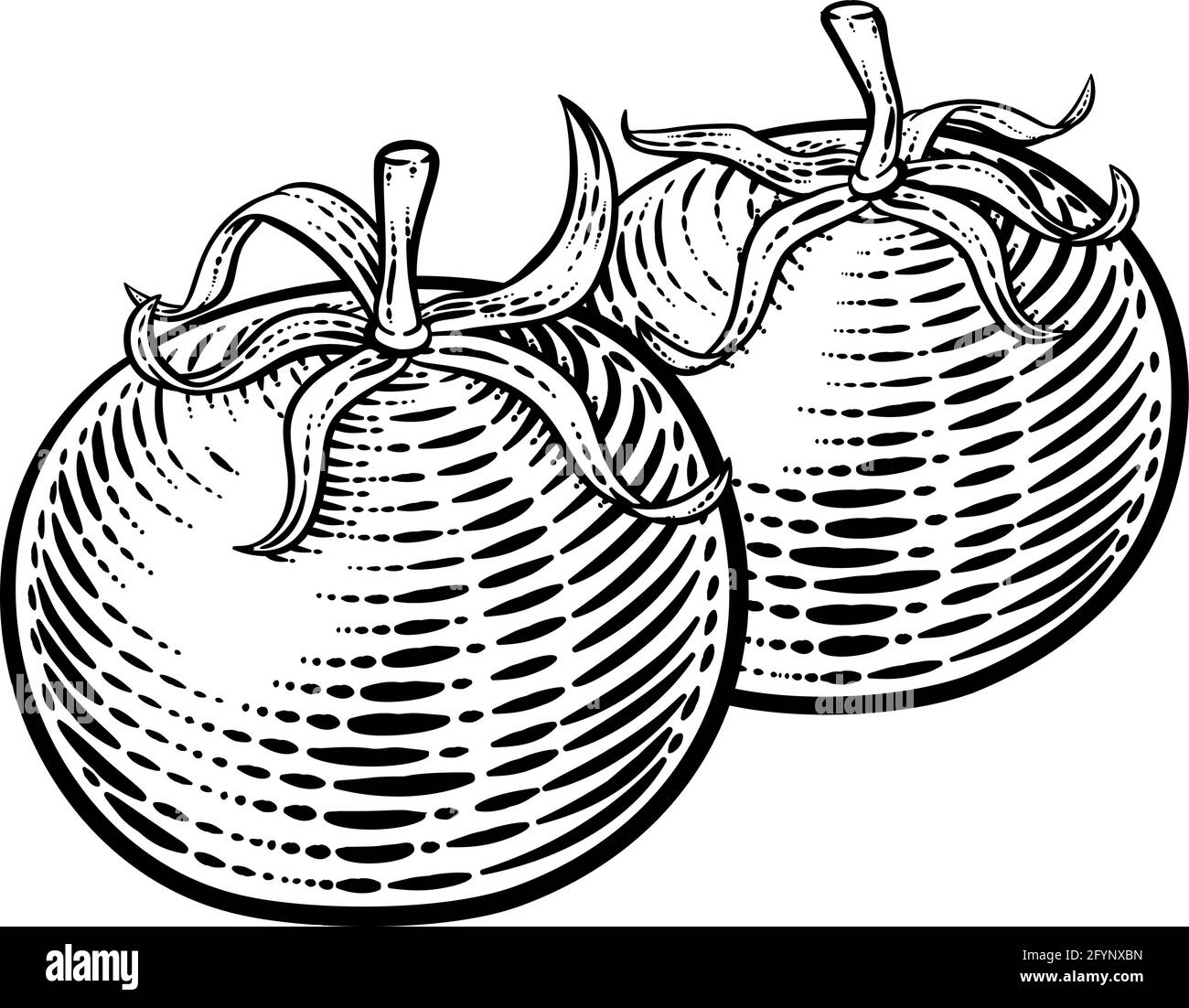 Tomatoes Vegetable Vintage Woodcut Illustration Stock Vectorhttps://www.alamy.com/image-license-details/?v=1https://www.alamy.com/tomatoes-vegetable-vintage-woodcut-illustration-image430126249.html
Tomatoes Vegetable Vintage Woodcut Illustration Stock Vectorhttps://www.alamy.com/image-license-details/?v=1https://www.alamy.com/tomatoes-vegetable-vintage-woodcut-illustration-image430126249.htmlRF2FYNXBN–Tomatoes Vegetable Vintage Woodcut Illustration
 Corn Vegetable Vintage Woodcut Illustration Stock Vectorhttps://www.alamy.com/image-license-details/?v=1https://www.alamy.com/corn-vegetable-vintage-woodcut-illustration-image426569086.html
Corn Vegetable Vintage Woodcut Illustration Stock Vectorhttps://www.alamy.com/image-license-details/?v=1https://www.alamy.com/corn-vegetable-vintage-woodcut-illustration-image426569086.htmlRF2FNYW66–Corn Vegetable Vintage Woodcut Illustration
RF2GMWPRM–Medieval Building Map Icon Vintage Illustration
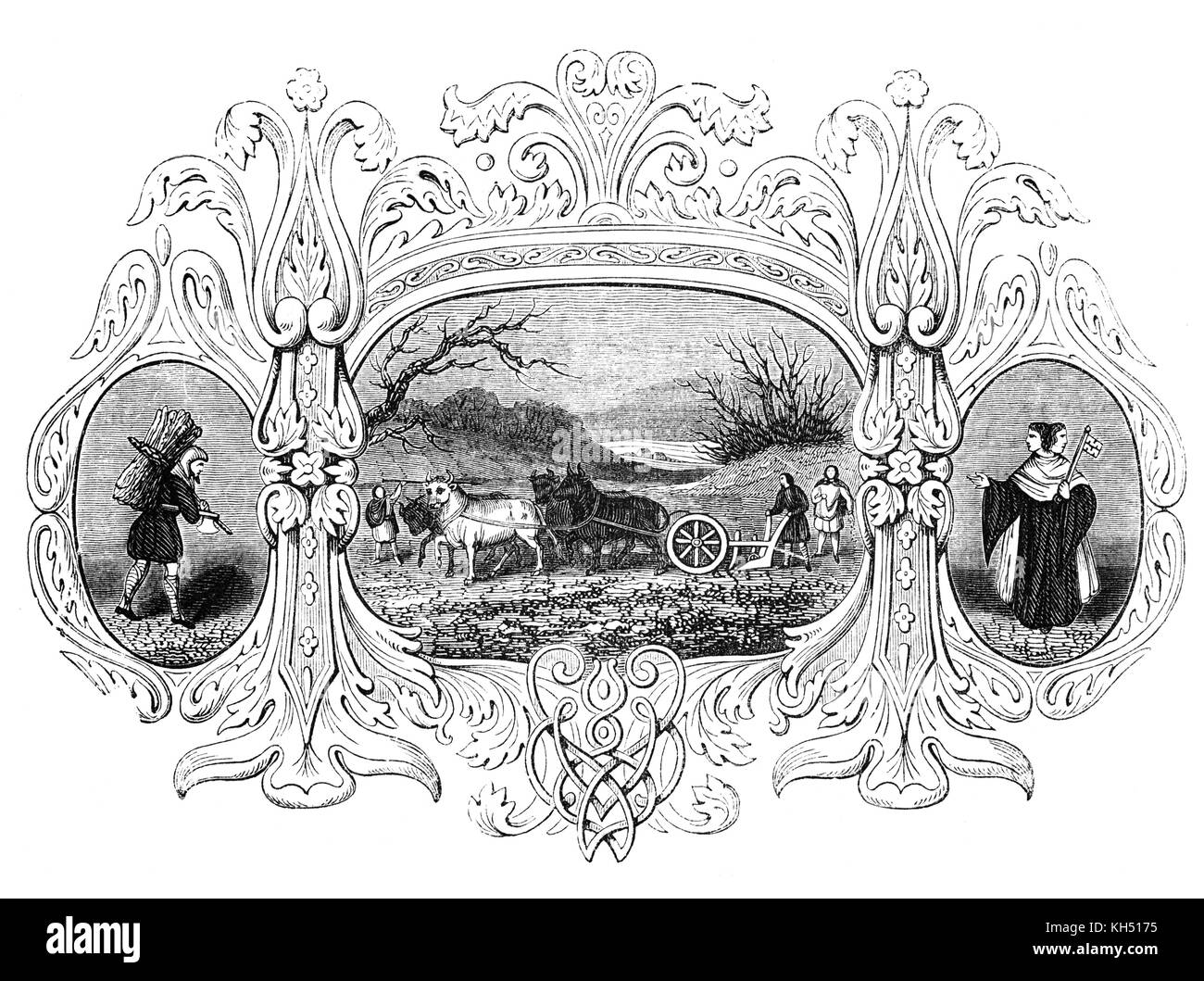 The Anglo-Saxon Invasion of England took place from the mid-fifth to early seventh centuries, following the end of Roman power in Britain around the year 410. The 'monthly' life of the times is illustrated in a series of pictures. 1/12: January aka Wolf-Monat in which the earth is broken by a ploughman using four oxen. The side panels illustrate the collection of fuel, and the two headed Janus representing literal and learned art. Stock Photohttps://www.alamy.com/image-license-details/?v=1https://www.alamy.com/stock-image-the-anglo-saxon-invasion-of-england-took-place-from-the-mid-fifth-165453209.html
The Anglo-Saxon Invasion of England took place from the mid-fifth to early seventh centuries, following the end of Roman power in Britain around the year 410. The 'monthly' life of the times is illustrated in a series of pictures. 1/12: January aka Wolf-Monat in which the earth is broken by a ploughman using four oxen. The side panels illustrate the collection of fuel, and the two headed Janus representing literal and learned art. Stock Photohttps://www.alamy.com/image-license-details/?v=1https://www.alamy.com/stock-image-the-anglo-saxon-invasion-of-england-took-place-from-the-mid-fifth-165453209.htmlRMKH5175–The Anglo-Saxon Invasion of England took place from the mid-fifth to early seventh centuries, following the end of Roman power in Britain around the year 410. The 'monthly' life of the times is illustrated in a series of pictures. 1/12: January aka Wolf-Monat in which the earth is broken by a ploughman using four oxen. The side panels illustrate the collection of fuel, and the two headed Janus representing literal and learned art.
 View of Tewkesbury Abbey Gloucestershire. Victorian woodcut circa 1845 Stock Photohttps://www.alamy.com/image-license-details/?v=1https://www.alamy.com/stock-photo-view-of-tewkesbury-abbey-gloucestershire-victorian-woodcut-circa-1845-131073152.html
View of Tewkesbury Abbey Gloucestershire. Victorian woodcut circa 1845 Stock Photohttps://www.alamy.com/image-license-details/?v=1https://www.alamy.com/stock-photo-view-of-tewkesbury-abbey-gloucestershire-victorian-woodcut-circa-1845-131073152.htmlRMHH6W40–View of Tewkesbury Abbey Gloucestershire. Victorian woodcut circa 1845
RF2EGR089–Medieval Building Map Icon Vintage Illustration
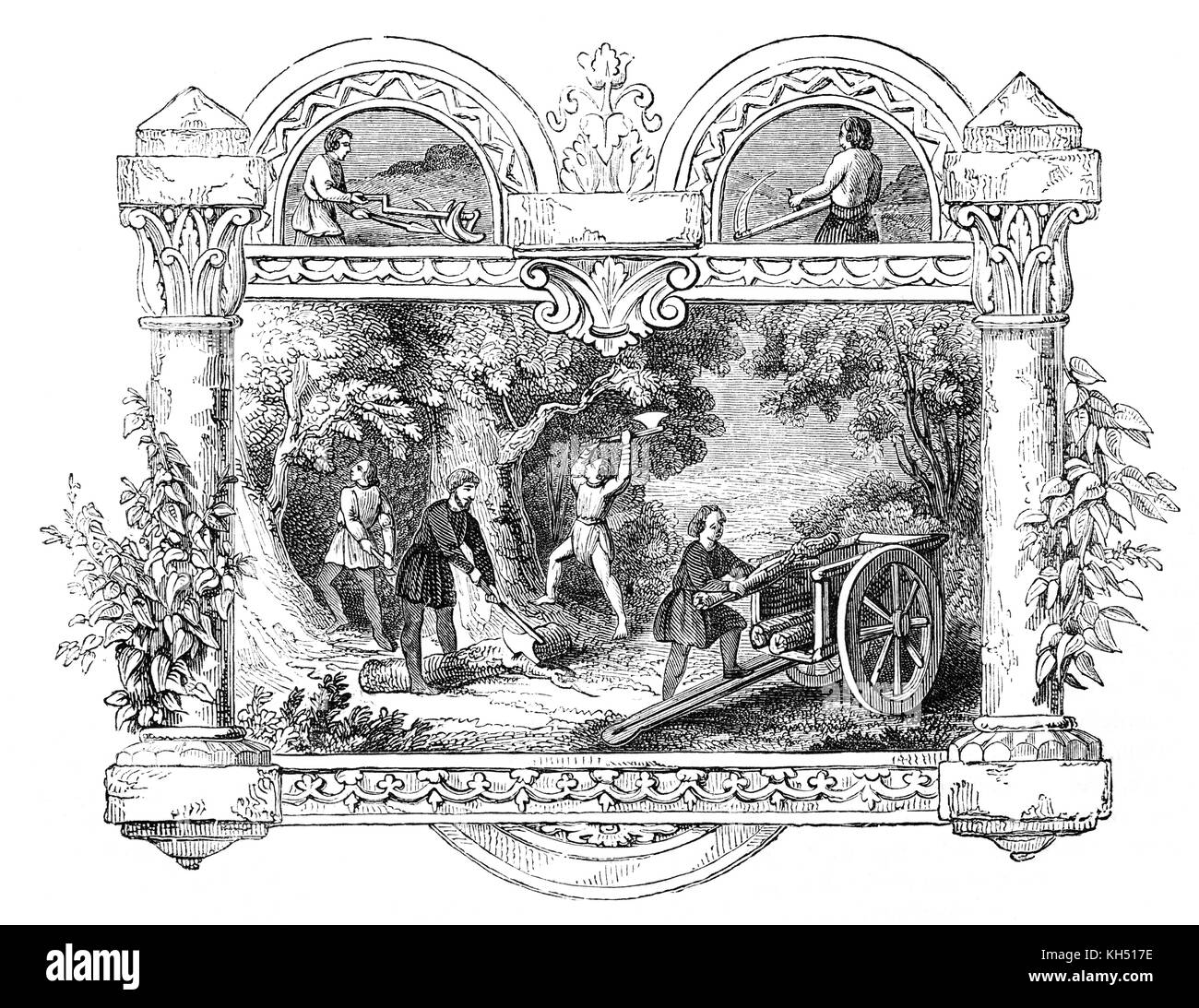 The Anglo-Saxon Invasion of England took place from the mid-fifth to early seventh centuries, following the end of Roman power in Britain around the year 410. The 'monthly' life of the times is illustrated in a series of pictures. The Anglo-Saxon Calendar 6/12: June aka Weyd-monat: apart from continuing to maintain the field crops, June was an opportunity to harvest wood from the forest, both for building and warmth. Stock Photohttps://www.alamy.com/image-license-details/?v=1https://www.alamy.com/stock-image-the-anglo-saxon-invasion-of-england-took-place-from-the-mid-fifth-165453218.html
The Anglo-Saxon Invasion of England took place from the mid-fifth to early seventh centuries, following the end of Roman power in Britain around the year 410. The 'monthly' life of the times is illustrated in a series of pictures. The Anglo-Saxon Calendar 6/12: June aka Weyd-monat: apart from continuing to maintain the field crops, June was an opportunity to harvest wood from the forest, both for building and warmth. Stock Photohttps://www.alamy.com/image-license-details/?v=1https://www.alamy.com/stock-image-the-anglo-saxon-invasion-of-england-took-place-from-the-mid-fifth-165453218.htmlRMKH517E–The Anglo-Saxon Invasion of England took place from the mid-fifth to early seventh centuries, following the end of Roman power in Britain around the year 410. The 'monthly' life of the times is illustrated in a series of pictures. The Anglo-Saxon Calendar 6/12: June aka Weyd-monat: apart from continuing to maintain the field crops, June was an opportunity to harvest wood from the forest, both for building and warmth.
 Ruins of the Augustine Monastery in Canterbury with daily life in foreground. Victorian woodcut engraving circa 1845. Stock Photohttps://www.alamy.com/image-license-details/?v=1https://www.alamy.com/stock-photo-ruins-of-the-augustine-monastery-in-canterbury-with-daily-life-in-92978620.html
Ruins of the Augustine Monastery in Canterbury with daily life in foreground. Victorian woodcut engraving circa 1845. Stock Photohttps://www.alamy.com/image-license-details/?v=1https://www.alamy.com/stock-photo-ruins-of-the-augustine-monastery-in-canterbury-with-daily-life-in-92978620.htmlRMFB7F50–Ruins of the Augustine Monastery in Canterbury with daily life in foreground. Victorian woodcut engraving circa 1845.
RF2H7YR6Y–Medieval Building Map Icon Vintage Illustration
 The Anglo-Saxon Invasion of England took place from the mid-fifth to early seventh centuries, following the end of Roman power in Britain around the year 410. The 'monthly' life of the times is illustrated in a series of pictures. The Anglo-Saxon Calendar 5/12: May aka Trimilki: In which the lengthening days pertmitted the farmers to milk three times each day. Attire was changing and linen was used as well as wool. Gardens began to produce food and the noblemen used hawks to add additional meat to their diet. Stock Photohttps://www.alamy.com/image-license-details/?v=1https://www.alamy.com/stock-image-the-anglo-saxon-invasion-of-england-took-place-from-the-mid-fifth-165453217.html
The Anglo-Saxon Invasion of England took place from the mid-fifth to early seventh centuries, following the end of Roman power in Britain around the year 410. The 'monthly' life of the times is illustrated in a series of pictures. The Anglo-Saxon Calendar 5/12: May aka Trimilki: In which the lengthening days pertmitted the farmers to milk three times each day. Attire was changing and linen was used as well as wool. Gardens began to produce food and the noblemen used hawks to add additional meat to their diet. Stock Photohttps://www.alamy.com/image-license-details/?v=1https://www.alamy.com/stock-image-the-anglo-saxon-invasion-of-england-took-place-from-the-mid-fifth-165453217.htmlRMKH517D–The Anglo-Saxon Invasion of England took place from the mid-fifth to early seventh centuries, following the end of Roman power in Britain around the year 410. The 'monthly' life of the times is illustrated in a series of pictures. The Anglo-Saxon Calendar 5/12: May aka Trimilki: In which the lengthening days pertmitted the farmers to milk three times each day. Attire was changing and linen was used as well as wool. Gardens began to produce food and the noblemen used hawks to add additional meat to their diet.
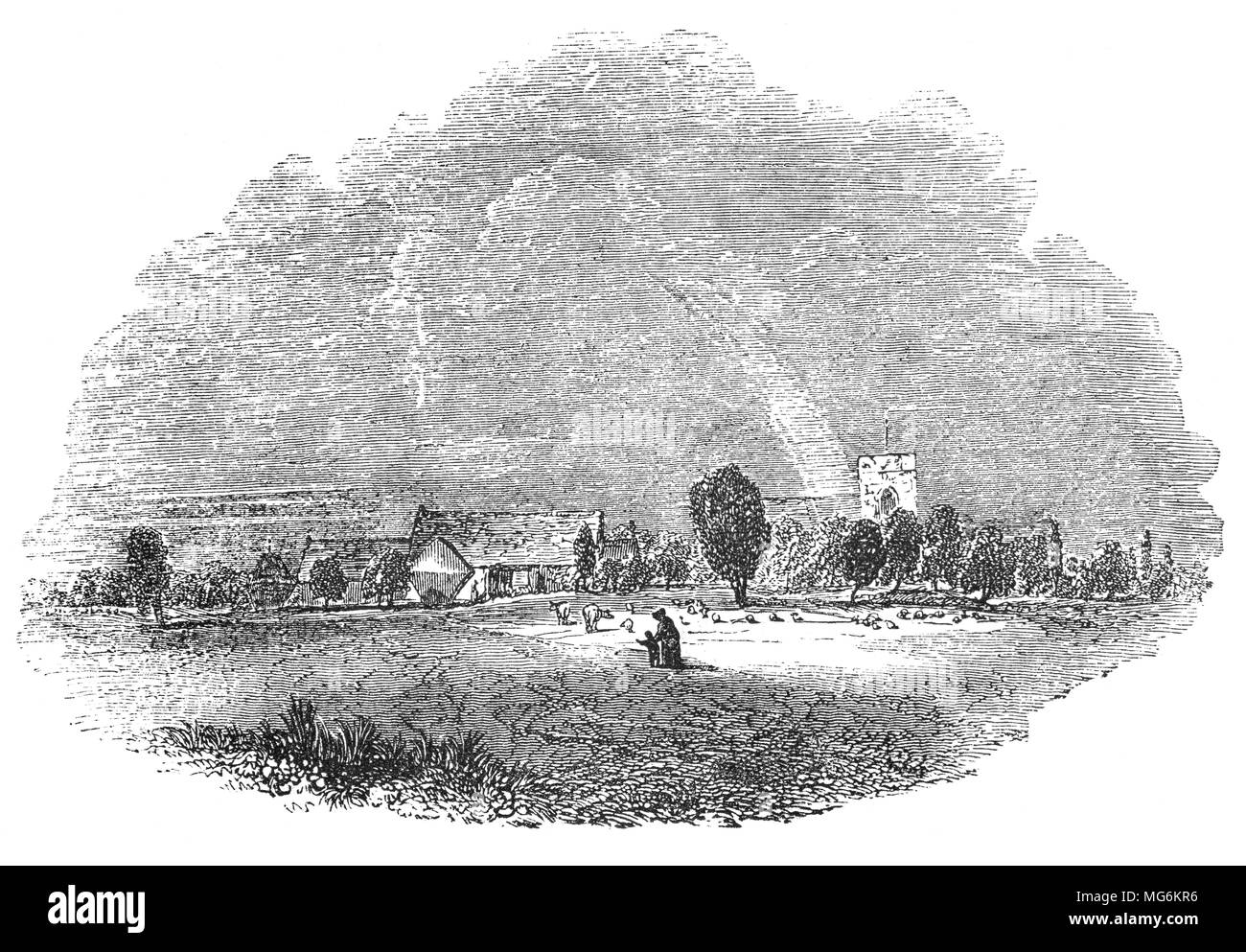 Chertsey is a town in the Runnymede borough of Surrey, England near where the Magna Carta was signed. Located on the right bank of the River Thames where it is met by a corollary, the Abbey River and a tributary, the River Bourne or Chertsey Bourne. The Abbey grew to become one of the largest Benedictine abbeys in England, supported by large fiefs in the northwest corner of Sussex and Surrey until it was dissolved by Henry VIII in 1536. Stock Photohttps://www.alamy.com/image-license-details/?v=1https://www.alamy.com/chertsey-is-a-town-in-the-runnymede-borough-of-surrey-england-near-where-the-magna-carta-was-signed-located-on-the-right-bank-of-the-river-thames-where-it-is-met-by-a-corollary-the-abbey-river-and-a-tributary-the-river-bourne-or-chertsey-bourne-the-abbey-grew-to-become-one-of-the-largest-benedictine-abbeys-in-england-supported-by-large-fiefs-in-the-northwest-corner-of-sussex-and-surrey-until-it-was-dissolved-by-henry-viii-in-1536-image182085434.html
Chertsey is a town in the Runnymede borough of Surrey, England near where the Magna Carta was signed. Located on the right bank of the River Thames where it is met by a corollary, the Abbey River and a tributary, the River Bourne or Chertsey Bourne. The Abbey grew to become one of the largest Benedictine abbeys in England, supported by large fiefs in the northwest corner of Sussex and Surrey until it was dissolved by Henry VIII in 1536. Stock Photohttps://www.alamy.com/image-license-details/?v=1https://www.alamy.com/chertsey-is-a-town-in-the-runnymede-borough-of-surrey-england-near-where-the-magna-carta-was-signed-located-on-the-right-bank-of-the-river-thames-where-it-is-met-by-a-corollary-the-abbey-river-and-a-tributary-the-river-bourne-or-chertsey-bourne-the-abbey-grew-to-become-one-of-the-largest-benedictine-abbeys-in-england-supported-by-large-fiefs-in-the-northwest-corner-of-sussex-and-surrey-until-it-was-dissolved-by-henry-viii-in-1536-image182085434.htmlRMMG6KR6–Chertsey is a town in the Runnymede borough of Surrey, England near where the Magna Carta was signed. Located on the right bank of the River Thames where it is met by a corollary, the Abbey River and a tributary, the River Bourne or Chertsey Bourne. The Abbey grew to become one of the largest Benedictine abbeys in England, supported by large fiefs in the northwest corner of Sussex and Surrey until it was dissolved by Henry VIII in 1536.
 Several months of Anglo Saxon agricultural activity in 8th Century England including ploughing, sewing, mowing, gleaning and measuring corn leading to a harvest supper. Stock Photohttps://www.alamy.com/image-license-details/?v=1https://www.alamy.com/stock-image-several-months-of-anglo-saxon-agricultural-activity-in-8th-century-165453267.html
Several months of Anglo Saxon agricultural activity in 8th Century England including ploughing, sewing, mowing, gleaning and measuring corn leading to a harvest supper. Stock Photohttps://www.alamy.com/image-license-details/?v=1https://www.alamy.com/stock-image-several-months-of-anglo-saxon-agricultural-activity-in-8th-century-165453267.htmlRMKH5197–Several months of Anglo Saxon agricultural activity in 8th Century England including ploughing, sewing, mowing, gleaning and measuring corn leading to a harvest supper.
 Ruins of Lewes Priory Southover East Sussex. Victorian woodcut engraving circa 1845. Stock Photohttps://www.alamy.com/image-license-details/?v=1https://www.alamy.com/stock-photo-ruins-of-lewes-priory-southover-east-sussex-victorian-woodcut-engraving-85624323.html
Ruins of Lewes Priory Southover East Sussex. Victorian woodcut engraving circa 1845. Stock Photohttps://www.alamy.com/image-license-details/?v=1https://www.alamy.com/stock-photo-ruins-of-lewes-priory-southover-east-sussex-victorian-woodcut-engraving-85624323.htmlRMEY8EKF–Ruins of Lewes Priory Southover East Sussex. Victorian woodcut engraving circa 1845.
RF2EBAG0T–Medieval Building Map Icon Vintage Illustration
 The Anglo-Saxon Invasion of England took place from the mid-fifth to early seventh centuries, following the end of Roman power in Britain around the year 410. The 'monthly' life of the times is illustrated in a series of pictures. The Anglo-Saxon Calendar 9/12: September aka Gerst-monat or Barley Month: the month for the barley harvest and barley beer making, an activity that can be seen in the tree smaller illustrations. The main picture shows nobles hunting the wild boar fattened on acorns, for which they used boar spears and specially bred hunting dogs. Stock Photohttps://www.alamy.com/image-license-details/?v=1https://www.alamy.com/stock-image-the-anglo-saxon-invasion-of-england-took-place-from-the-mid-fifth-165453226.html
The Anglo-Saxon Invasion of England took place from the mid-fifth to early seventh centuries, following the end of Roman power in Britain around the year 410. The 'monthly' life of the times is illustrated in a series of pictures. The Anglo-Saxon Calendar 9/12: September aka Gerst-monat or Barley Month: the month for the barley harvest and barley beer making, an activity that can be seen in the tree smaller illustrations. The main picture shows nobles hunting the wild boar fattened on acorns, for which they used boar spears and specially bred hunting dogs. Stock Photohttps://www.alamy.com/image-license-details/?v=1https://www.alamy.com/stock-image-the-anglo-saxon-invasion-of-england-took-place-from-the-mid-fifth-165453226.htmlRMKH517P–The Anglo-Saxon Invasion of England took place from the mid-fifth to early seventh centuries, following the end of Roman power in Britain around the year 410. The 'monthly' life of the times is illustrated in a series of pictures. The Anglo-Saxon Calendar 9/12: September aka Gerst-monat or Barley Month: the month for the barley harvest and barley beer making, an activity that can be seen in the tree smaller illustrations. The main picture shows nobles hunting the wild boar fattened on acorns, for which they used boar spears and specially bred hunting dogs.
 Anglo Saxon Britain. Daily life, wine press in Anglo-Saxon Britain. Victorian woodcut circa 1845. Stock Photohttps://www.alamy.com/image-license-details/?v=1https://www.alamy.com/anglo-saxon-britain-daily-life-wine-press-in-anglo-saxon-britain-victorian-image62191300.html
Anglo Saxon Britain. Daily life, wine press in Anglo-Saxon Britain. Victorian woodcut circa 1845. Stock Photohttps://www.alamy.com/image-license-details/?v=1https://www.alamy.com/anglo-saxon-britain-daily-life-wine-press-in-anglo-saxon-britain-victorian-image62191300.htmlRMDH51HT–Anglo Saxon Britain. Daily life, wine press in Anglo-Saxon Britain. Victorian woodcut circa 1845.
RF2EA6G0X–Medieval Building Map Icon Vintage Illustration
 The Anglo-Saxon Invasion of England took place from the mid-fifth to early seventh centuries, following the end of Roman power in Britain around the year 410. The 'monthly' life of the times is illustrated in a series of pictures. The Anglo-Saxon Calendar 2/12: February aka Sprout-kele during which the kele-wort is collected for cooking in broth. Kele is a word used before 'herb' came into use. The illustration shows them collecting the newly sprouting leaves; and workers pruning wood also used for used for burning and warmth. Stock Photohttps://www.alamy.com/image-license-details/?v=1https://www.alamy.com/stock-image-the-anglo-saxon-invasion-of-england-took-place-from-the-mid-fifth-165453211.html
The Anglo-Saxon Invasion of England took place from the mid-fifth to early seventh centuries, following the end of Roman power in Britain around the year 410. The 'monthly' life of the times is illustrated in a series of pictures. The Anglo-Saxon Calendar 2/12: February aka Sprout-kele during which the kele-wort is collected for cooking in broth. Kele is a word used before 'herb' came into use. The illustration shows them collecting the newly sprouting leaves; and workers pruning wood also used for used for burning and warmth. Stock Photohttps://www.alamy.com/image-license-details/?v=1https://www.alamy.com/stock-image-the-anglo-saxon-invasion-of-england-took-place-from-the-mid-fifth-165453211.htmlRMKH5177–The Anglo-Saxon Invasion of England took place from the mid-fifth to early seventh centuries, following the end of Roman power in Britain around the year 410. The 'monthly' life of the times is illustrated in a series of pictures. The Anglo-Saxon Calendar 2/12: February aka Sprout-kele during which the kele-wort is collected for cooking in broth. Kele is a word used before 'herb' came into use. The illustration shows them collecting the newly sprouting leaves; and workers pruning wood also used for used for burning and warmth.
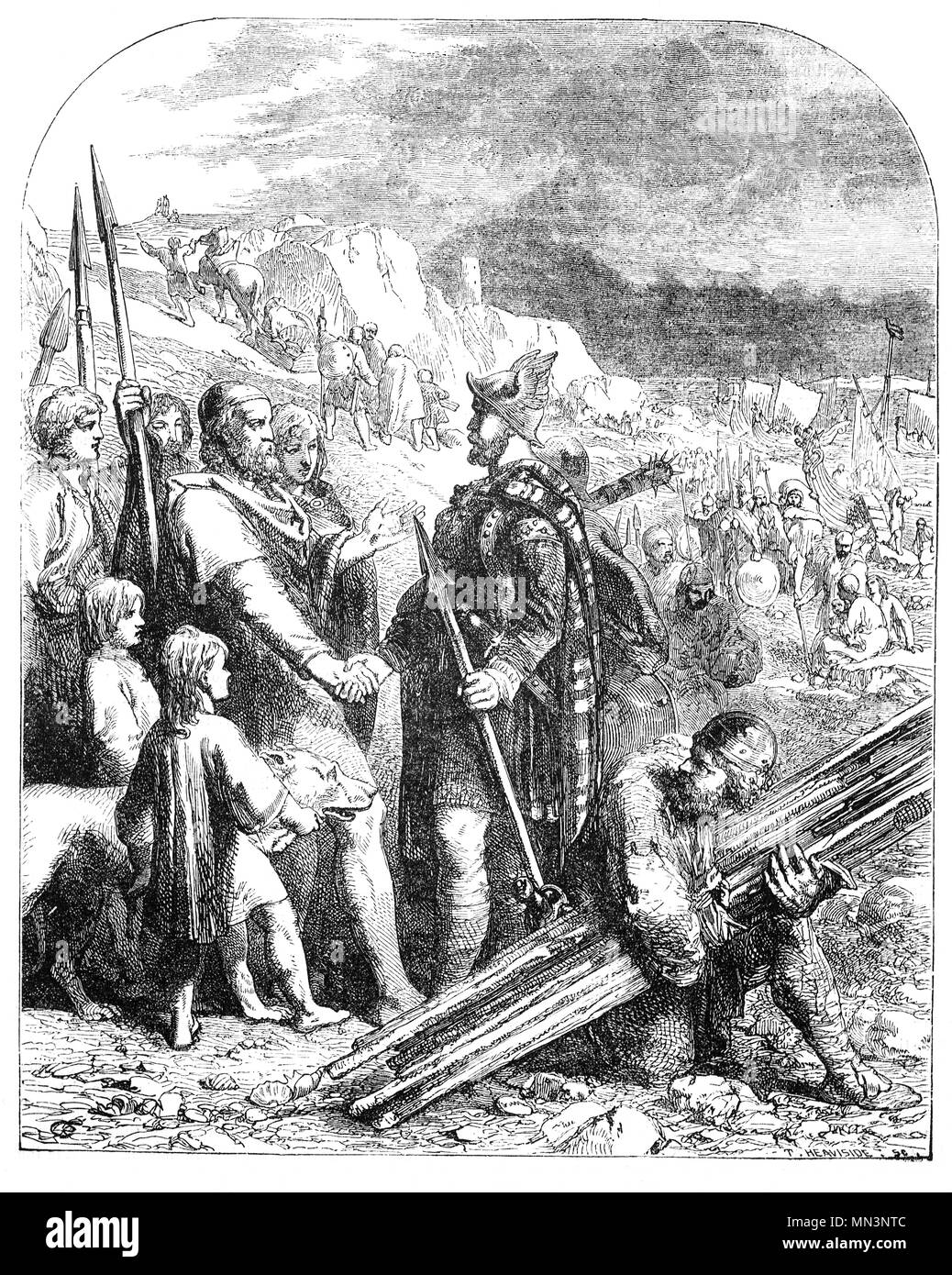 A treaty of peace between the Saxons and the British in the 5th Century. Following the end of the Roman presence in England, the Saxons came to fight, others peacefully, to find land to farm. The Anglo-Saxons knew Britain was a rich land; their own lands often flooded, making it difficult to grow enough food. The British fought them off but the war between Britons and Saxons seems to have ended in some sort of compromise Stock Photohttps://www.alamy.com/image-license-details/?v=1https://www.alamy.com/a-treaty-of-peace-between-the-saxons-and-the-british-in-the-5th-century-following-the-end-of-the-roman-presence-in-england-the-saxons-came-to-fight-others-peacefully-to-find-land-to-farm-the-anglo-saxons-knew-britain-was-a-rich-land-their-own-lands-often-flooded-making-it-difficult-to-grow-enough-food-the-british-fought-them-off-but-the-war-between-britons-and-saxons-seems-to-have-ended-in-some-sort-of-compromise-image185094460.html
A treaty of peace between the Saxons and the British in the 5th Century. Following the end of the Roman presence in England, the Saxons came to fight, others peacefully, to find land to farm. The Anglo-Saxons knew Britain was a rich land; their own lands often flooded, making it difficult to grow enough food. The British fought them off but the war between Britons and Saxons seems to have ended in some sort of compromise Stock Photohttps://www.alamy.com/image-license-details/?v=1https://www.alamy.com/a-treaty-of-peace-between-the-saxons-and-the-british-in-the-5th-century-following-the-end-of-the-roman-presence-in-england-the-saxons-came-to-fight-others-peacefully-to-find-land-to-farm-the-anglo-saxons-knew-britain-was-a-rich-land-their-own-lands-often-flooded-making-it-difficult-to-grow-enough-food-the-british-fought-them-off-but-the-war-between-britons-and-saxons-seems-to-have-ended-in-some-sort-of-compromise-image185094460.htmlRMMN3NTC–A treaty of peace between the Saxons and the British in the 5th Century. Following the end of the Roman presence in England, the Saxons came to fight, others peacefully, to find land to farm. The Anglo-Saxons knew Britain was a rich land; their own lands often flooded, making it difficult to grow enough food. The British fought them off but the war between Britons and Saxons seems to have ended in some sort of compromise
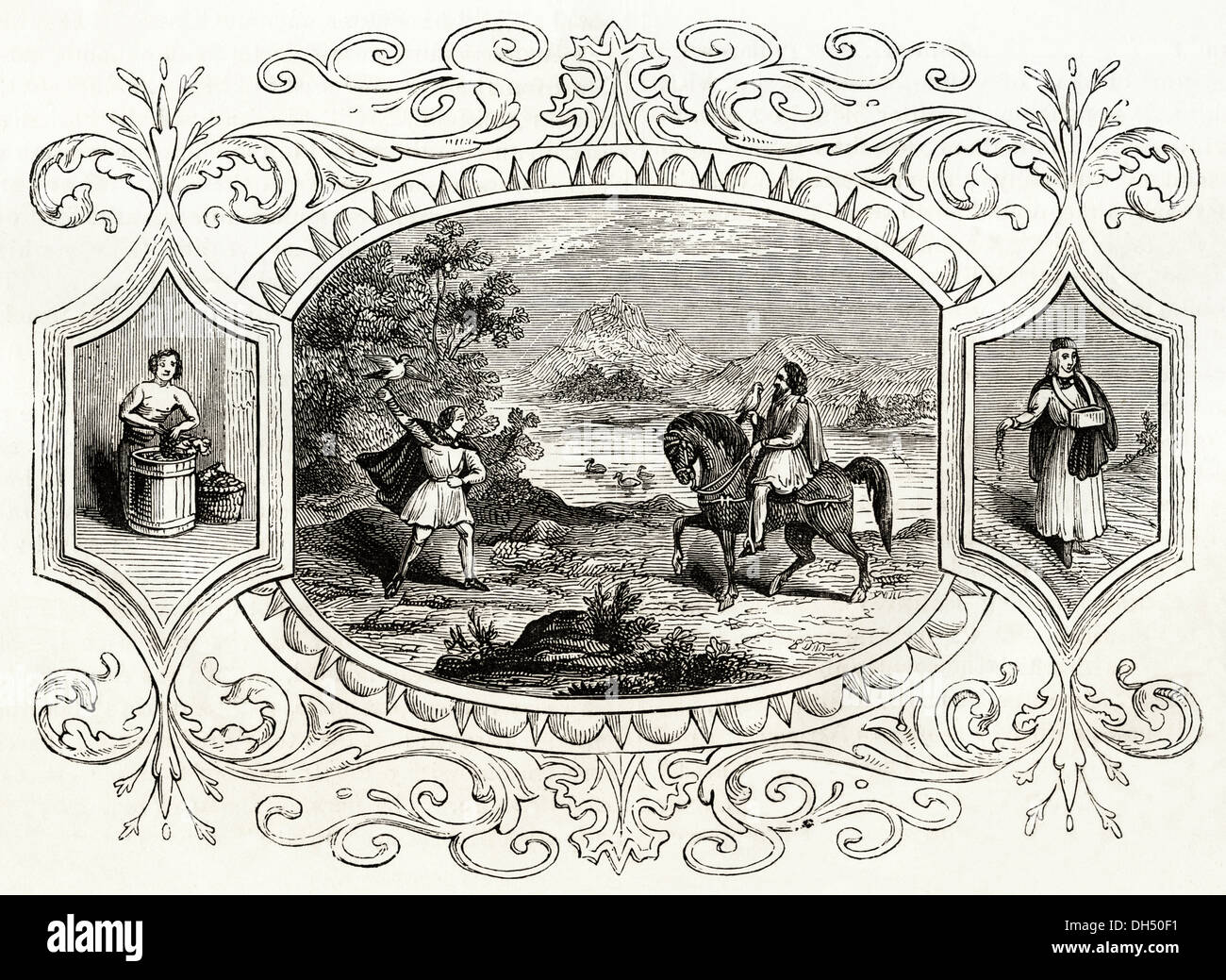 Anglo Saxon Britain. Daily life during October in Anglo-Saxon Britain. Victorian woodcut circa 1845. Stock Photohttps://www.alamy.com/image-license-details/?v=1https://www.alamy.com/anglo-saxon-britain-daily-life-during-october-in-anglo-saxon-britain-image62190437.html
Anglo Saxon Britain. Daily life during October in Anglo-Saxon Britain. Victorian woodcut circa 1845. Stock Photohttps://www.alamy.com/image-license-details/?v=1https://www.alamy.com/anglo-saxon-britain-daily-life-during-october-in-anglo-saxon-britain-image62190437.htmlRMDH50F1–Anglo Saxon Britain. Daily life during October in Anglo-Saxon Britain. Victorian woodcut circa 1845.
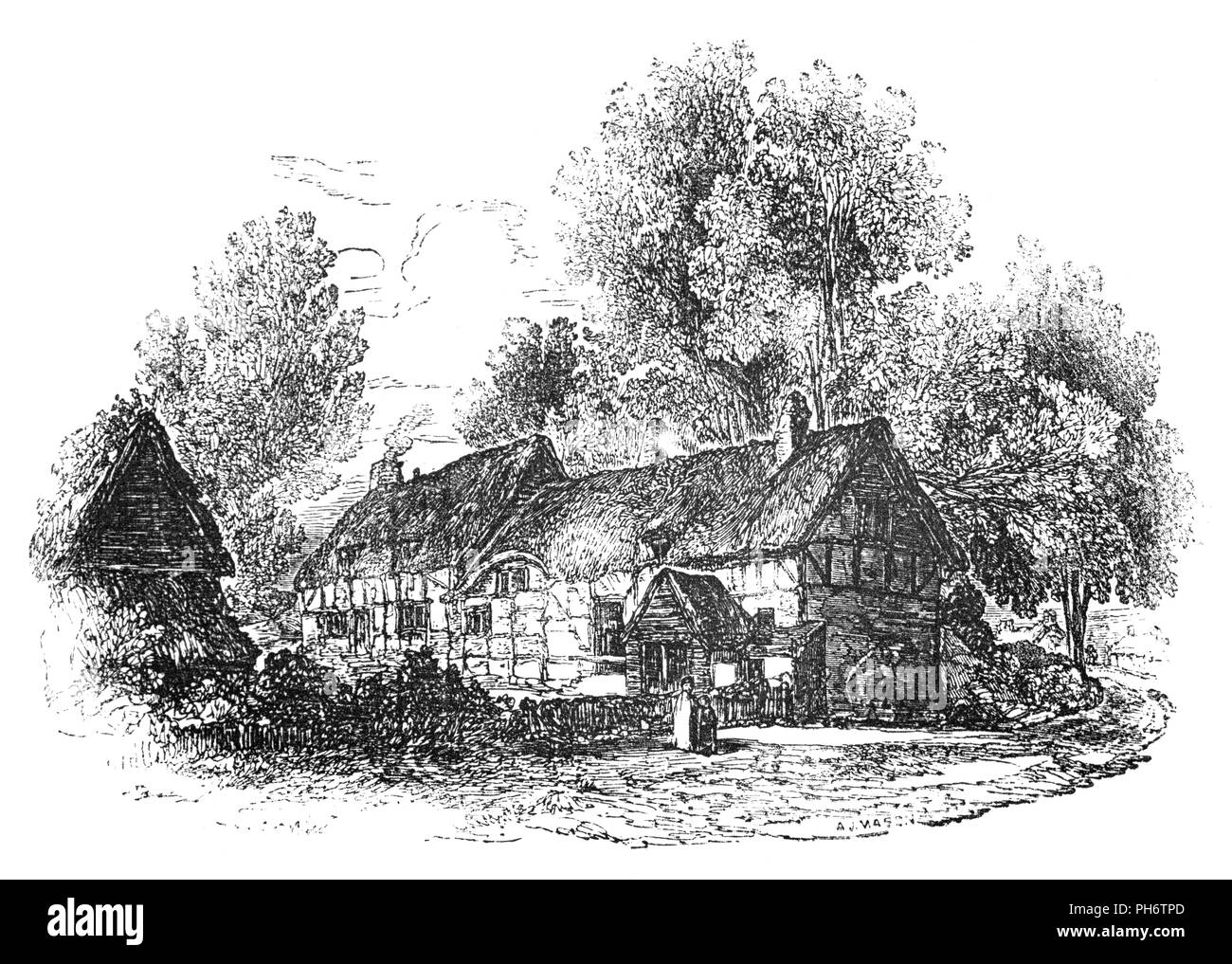 Anne Hathaway's half-timbered (also called timber-framed) Cottage is where Anne Hathaway, the wife of William Shakespeare, lived as a child in the village of Shottery, Warwickshire, England, about a mile away from Stratford-upon-Avon. It was known as Hewlands Farm in Shakespeare's day, and to call it a cottage is really a misnomer, as it is much larger than the term usually means. The earliest part of the house was built prior to the 15th century; the higher part is 17th century. Stock Photohttps://www.alamy.com/image-license-details/?v=1https://www.alamy.com/anne-hathaways-half-timbered-also-called-timber-framed-cottage-is-where-anne-hathaway-the-wife-of-william-shakespeare-lived-as-a-child-in-the-village-of-shottery-warwickshire-england-about-a-mile-away-from-stratford-upon-avon-it-was-known-as-hewlands-farm-in-shakespeares-day-and-to-call-it-a-cottage-is-really-a-misnomer-as-it-is-much-larger-than-the-term-usually-means-the-earliest-part-of-the-house-was-built-prior-to-the-15th-century-the-higher-part-is-17th-century-image217124725.html
Anne Hathaway's half-timbered (also called timber-framed) Cottage is where Anne Hathaway, the wife of William Shakespeare, lived as a child in the village of Shottery, Warwickshire, England, about a mile away from Stratford-upon-Avon. It was known as Hewlands Farm in Shakespeare's day, and to call it a cottage is really a misnomer, as it is much larger than the term usually means. The earliest part of the house was built prior to the 15th century; the higher part is 17th century. Stock Photohttps://www.alamy.com/image-license-details/?v=1https://www.alamy.com/anne-hathaways-half-timbered-also-called-timber-framed-cottage-is-where-anne-hathaway-the-wife-of-william-shakespeare-lived-as-a-child-in-the-village-of-shottery-warwickshire-england-about-a-mile-away-from-stratford-upon-avon-it-was-known-as-hewlands-farm-in-shakespeares-day-and-to-call-it-a-cottage-is-really-a-misnomer-as-it-is-much-larger-than-the-term-usually-means-the-earliest-part-of-the-house-was-built-prior-to-the-15th-century-the-higher-part-is-17th-century-image217124725.htmlRMPH6TPD–Anne Hathaway's half-timbered (also called timber-framed) Cottage is where Anne Hathaway, the wife of William Shakespeare, lived as a child in the village of Shottery, Warwickshire, England, about a mile away from Stratford-upon-Avon. It was known as Hewlands Farm in Shakespeare's day, and to call it a cottage is really a misnomer, as it is much larger than the term usually means. The earliest part of the house was built prior to the 15th century; the higher part is 17th century.
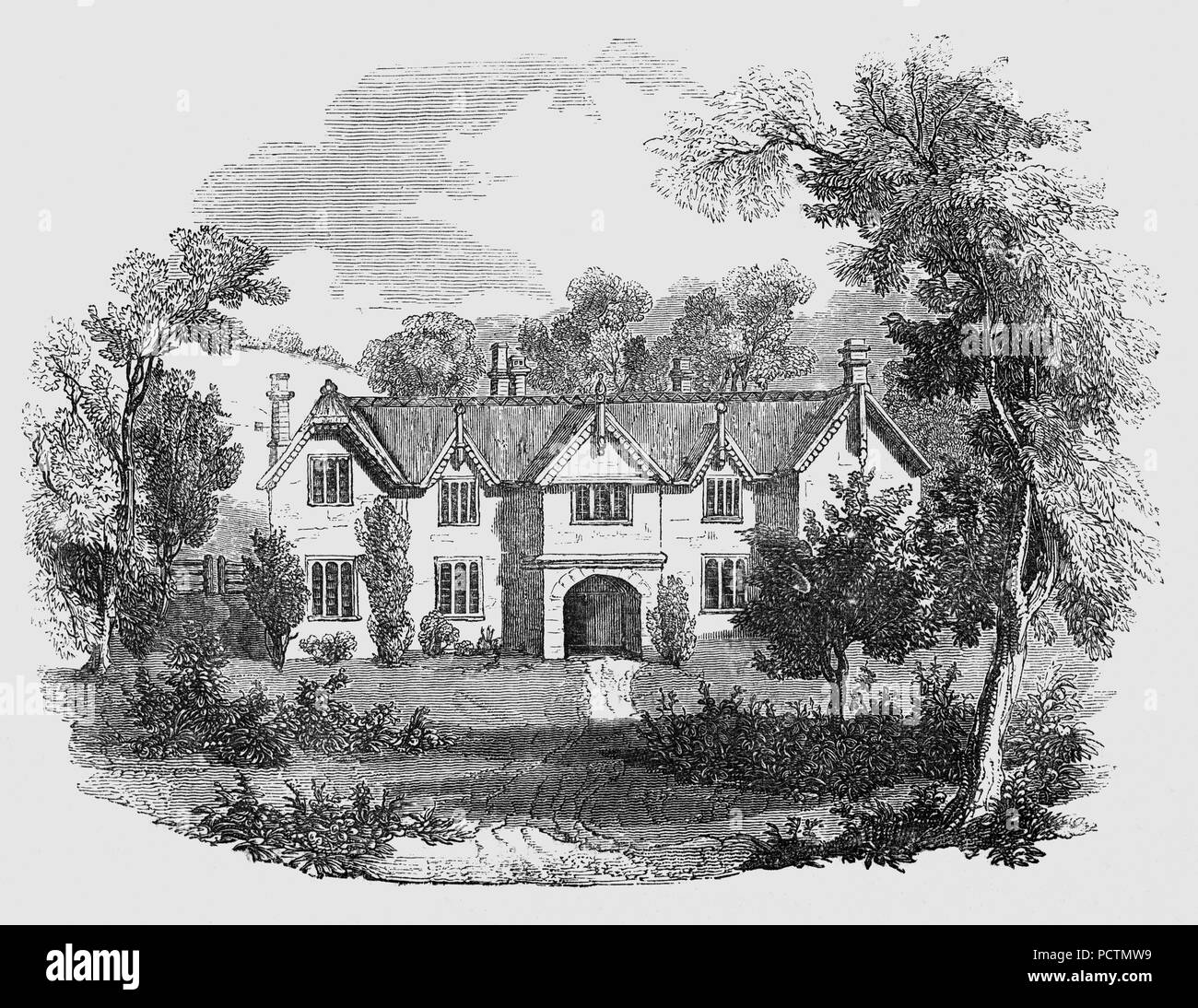 Hayes Farm in Hayes Barton in East Budleigh, Devon, England, the birthplace of Sir Walter Raleigh (1554-1618) landed English gentleman, writer, poet, soldier, politician, courtier, spy and explorer and a favourite of Queen Elizabeth I. In 1585, Raleigh was knighted and was appointed warden of the stannaries, that is of the tin mines of Cornwall and Devon, Lord Lieutenant of Cornwall, and vice-admiral of the two counties. He sat in parliament as member for Devonshire in 1585 and 1586. Stock Photohttps://www.alamy.com/image-license-details/?v=1https://www.alamy.com/hayes-farm-in-hayes-barton-in-east-budleigh-devon-england-the-birthplace-of-sir-walter-raleigh-1554-1618-landed-english-gentleman-writer-poet-soldier-politician-courtier-spy-and-explorer-and-a-favourite-of-queen-elizabeth-i-in-1585-raleigh-was-knighted-and-was-appointed-warden-of-the-stannaries-that-is-of-the-tin-mines-of-cornwall-and-devon-lord-lieutenant-of-cornwall-and-vice-admiral-of-the-two-counties-he-sat-in-parliament-as-member-for-devonshire-in-1585-and-1586-image214443525.html
Hayes Farm in Hayes Barton in East Budleigh, Devon, England, the birthplace of Sir Walter Raleigh (1554-1618) landed English gentleman, writer, poet, soldier, politician, courtier, spy and explorer and a favourite of Queen Elizabeth I. In 1585, Raleigh was knighted and was appointed warden of the stannaries, that is of the tin mines of Cornwall and Devon, Lord Lieutenant of Cornwall, and vice-admiral of the two counties. He sat in parliament as member for Devonshire in 1585 and 1586. Stock Photohttps://www.alamy.com/image-license-details/?v=1https://www.alamy.com/hayes-farm-in-hayes-barton-in-east-budleigh-devon-england-the-birthplace-of-sir-walter-raleigh-1554-1618-landed-english-gentleman-writer-poet-soldier-politician-courtier-spy-and-explorer-and-a-favourite-of-queen-elizabeth-i-in-1585-raleigh-was-knighted-and-was-appointed-warden-of-the-stannaries-that-is-of-the-tin-mines-of-cornwall-and-devon-lord-lieutenant-of-cornwall-and-vice-admiral-of-the-two-counties-he-sat-in-parliament-as-member-for-devonshire-in-1585-and-1586-image214443525.htmlRMPCTMW9–Hayes Farm in Hayes Barton in East Budleigh, Devon, England, the birthplace of Sir Walter Raleigh (1554-1618) landed English gentleman, writer, poet, soldier, politician, courtier, spy and explorer and a favourite of Queen Elizabeth I. In 1585, Raleigh was knighted and was appointed warden of the stannaries, that is of the tin mines of Cornwall and Devon, Lord Lieutenant of Cornwall, and vice-admiral of the two counties. He sat in parliament as member for Devonshire in 1585 and 1586.
RF2EBB90J–Medieval Building Map Icon Vintage Illustration
 Country life near Carlisle, which by the time of the Norman conquest in 1066 was part of Scotland. This changed in 1092, when William the Conqueror's son William Rufus invaded the region and incorporated Cumberland and Carlisle into England. The construction of Carlisle Castle began in 1093 on the site of the Roman fort, south of the River Eden. The castle was rebuilt in stone in 1112, with a keep and the city walls. Cumbria, England Stock Photohttps://www.alamy.com/image-license-details/?v=1https://www.alamy.com/stock-image-country-life-near-carlisle-which-by-the-time-of-the-norman-conquest-168328070.html
Country life near Carlisle, which by the time of the Norman conquest in 1066 was part of Scotland. This changed in 1092, when William the Conqueror's son William Rufus invaded the region and incorporated Cumberland and Carlisle into England. The construction of Carlisle Castle began in 1093 on the site of the Roman fort, south of the River Eden. The castle was rebuilt in stone in 1112, with a keep and the city walls. Cumbria, England Stock Photohttps://www.alamy.com/image-license-details/?v=1https://www.alamy.com/stock-image-country-life-near-carlisle-which-by-the-time-of-the-norman-conquest-168328070.htmlRMKNT04P–Country life near Carlisle, which by the time of the Norman conquest in 1066 was part of Scotland. This changed in 1092, when William the Conqueror's son William Rufus invaded the region and incorporated Cumberland and Carlisle into England. The construction of Carlisle Castle began in 1093 on the site of the Roman fort, south of the River Eden. The castle was rebuilt in stone in 1112, with a keep and the city walls. Cumbria, England